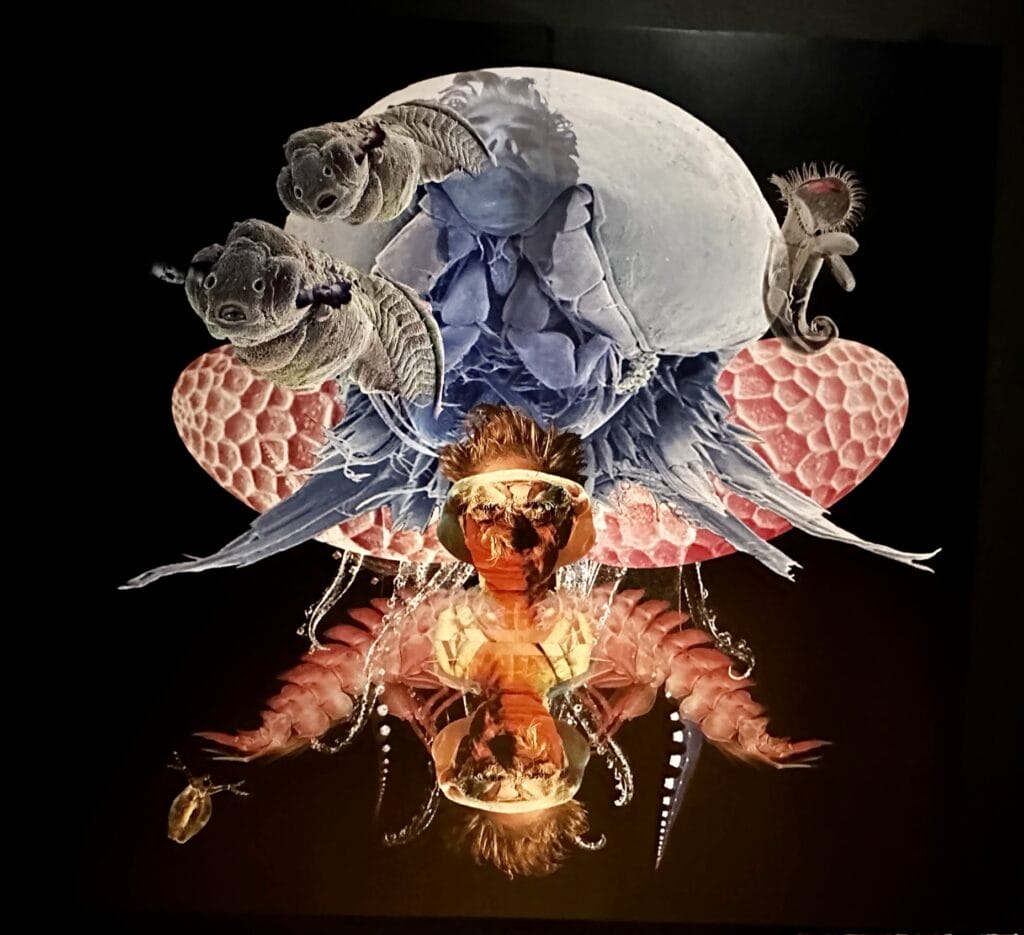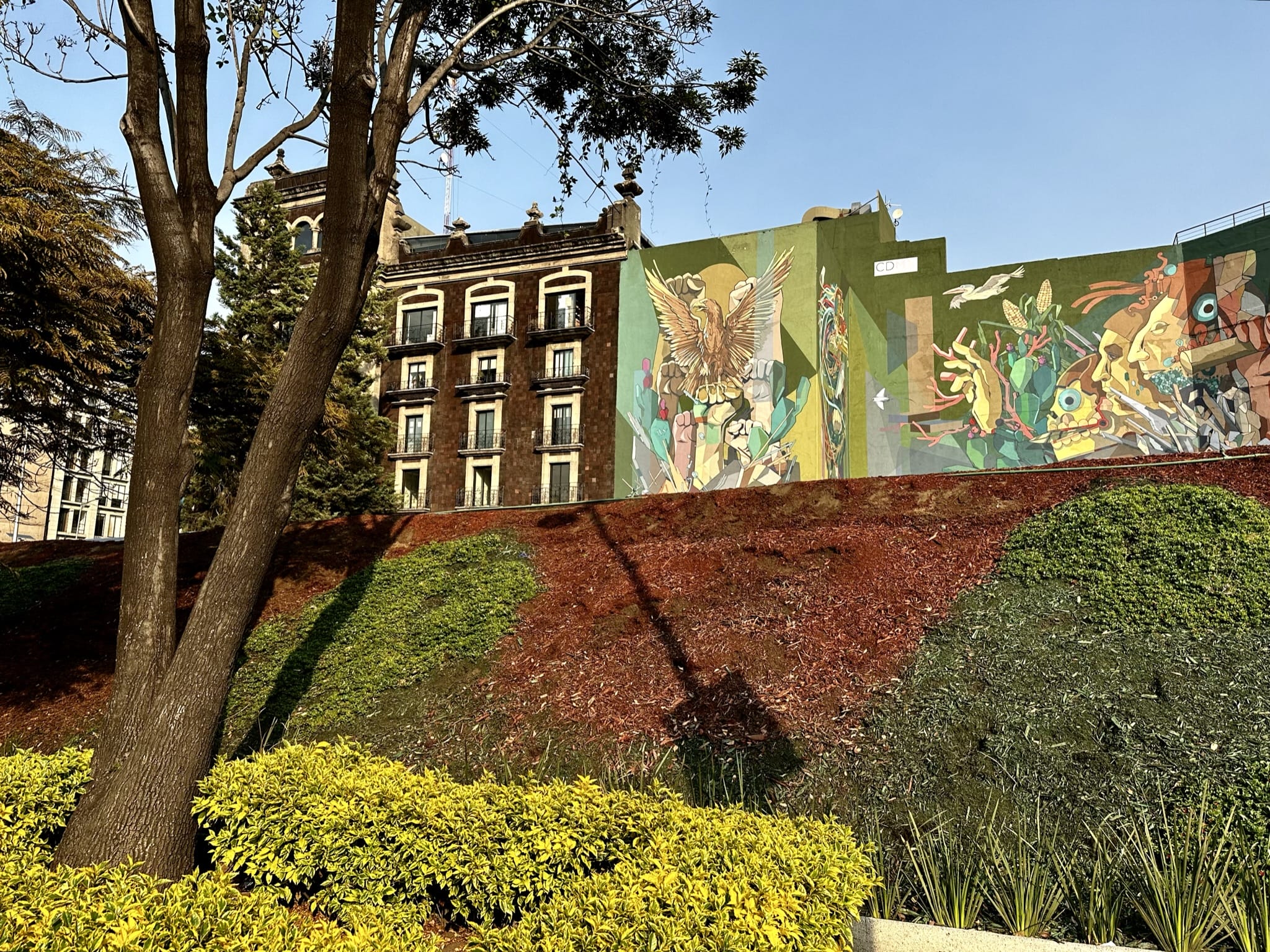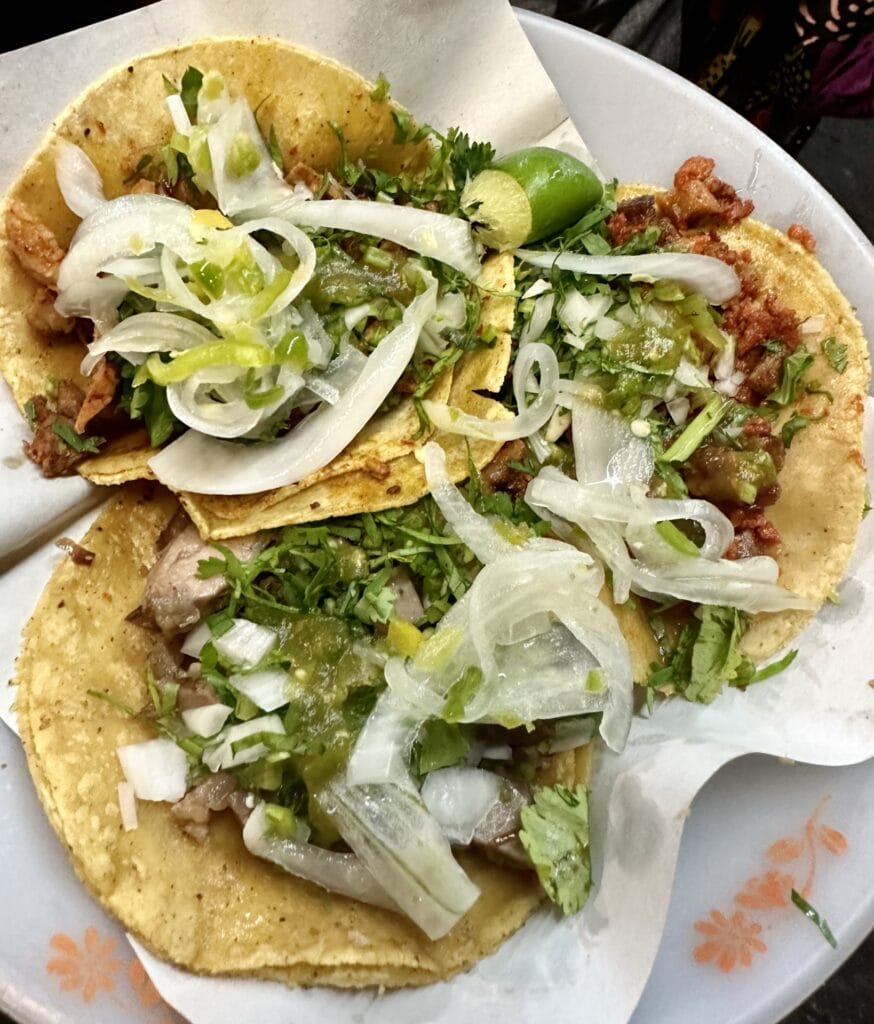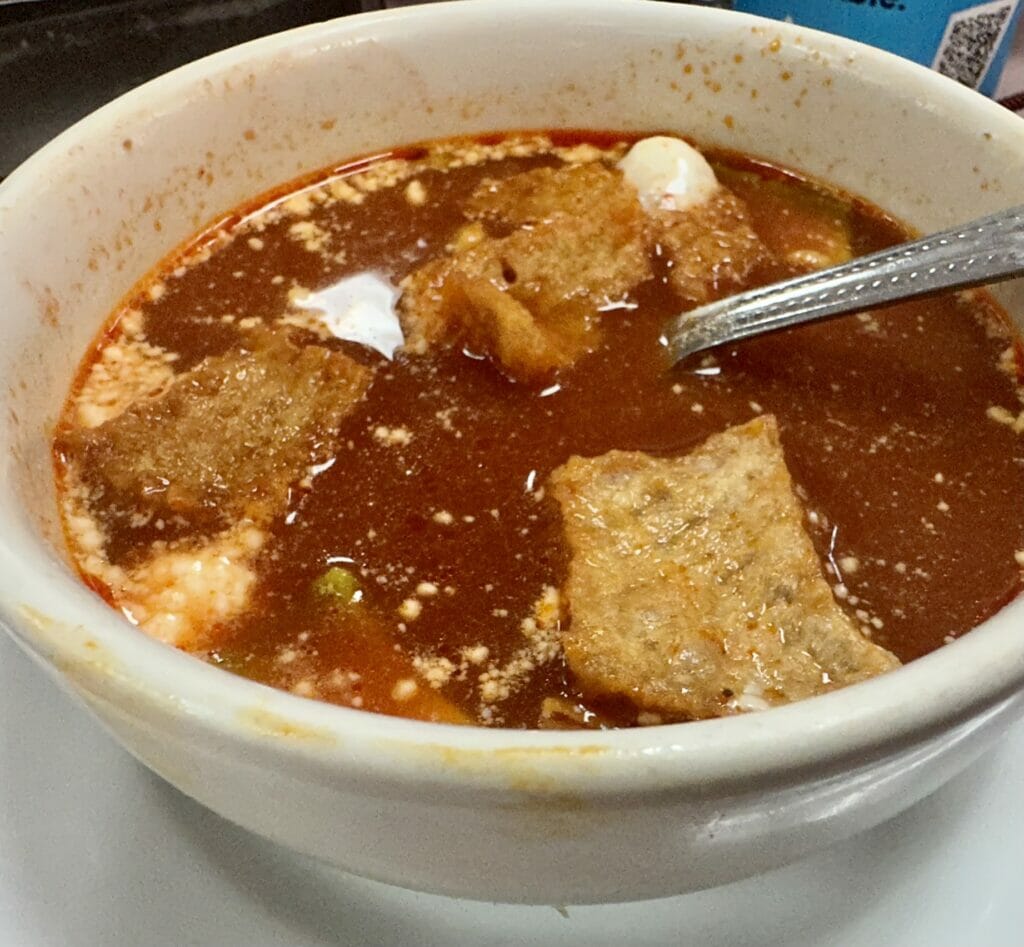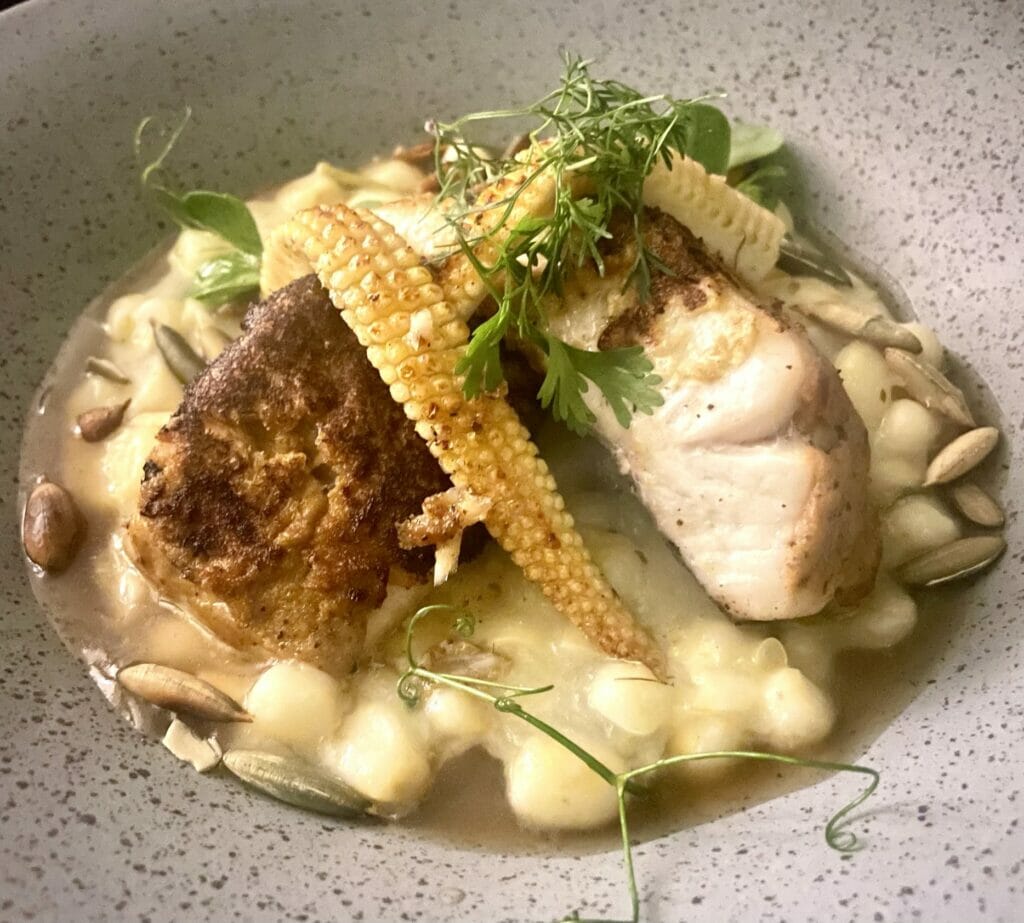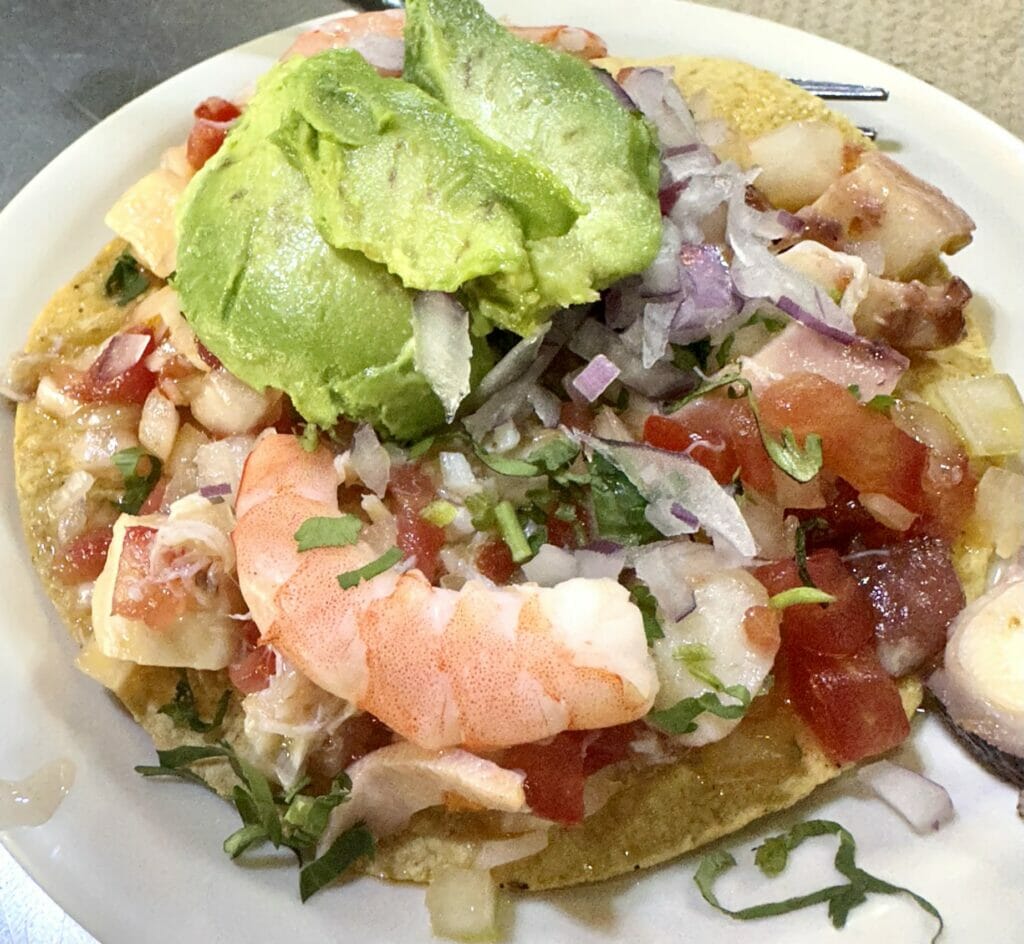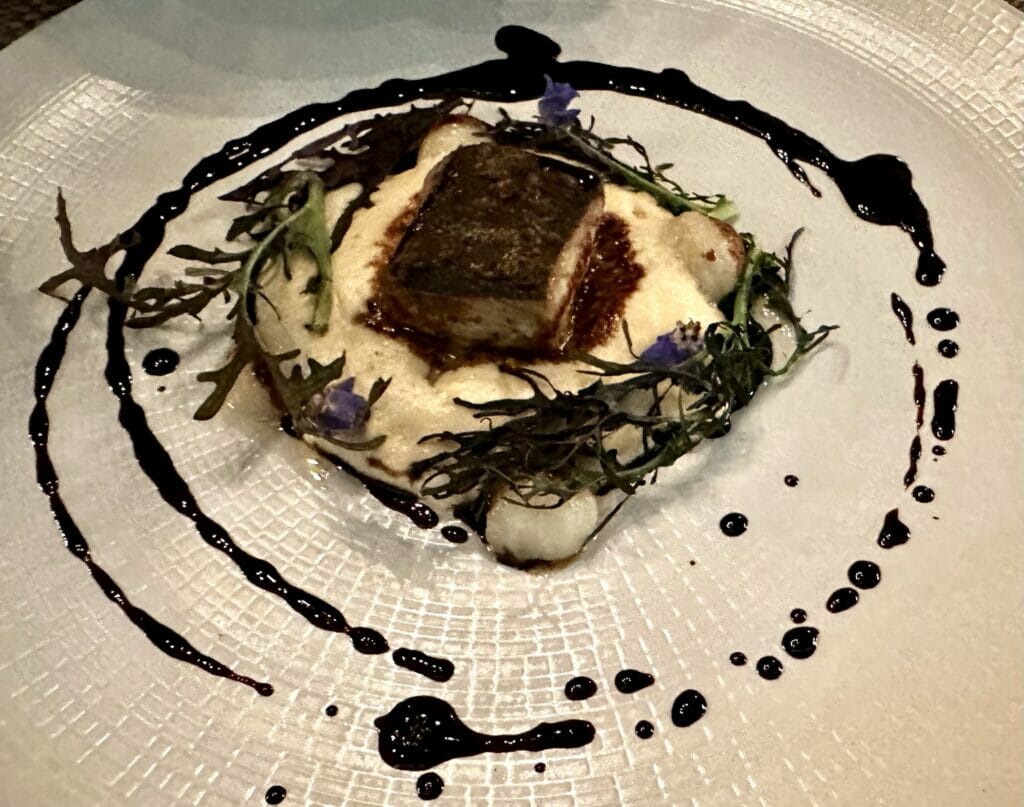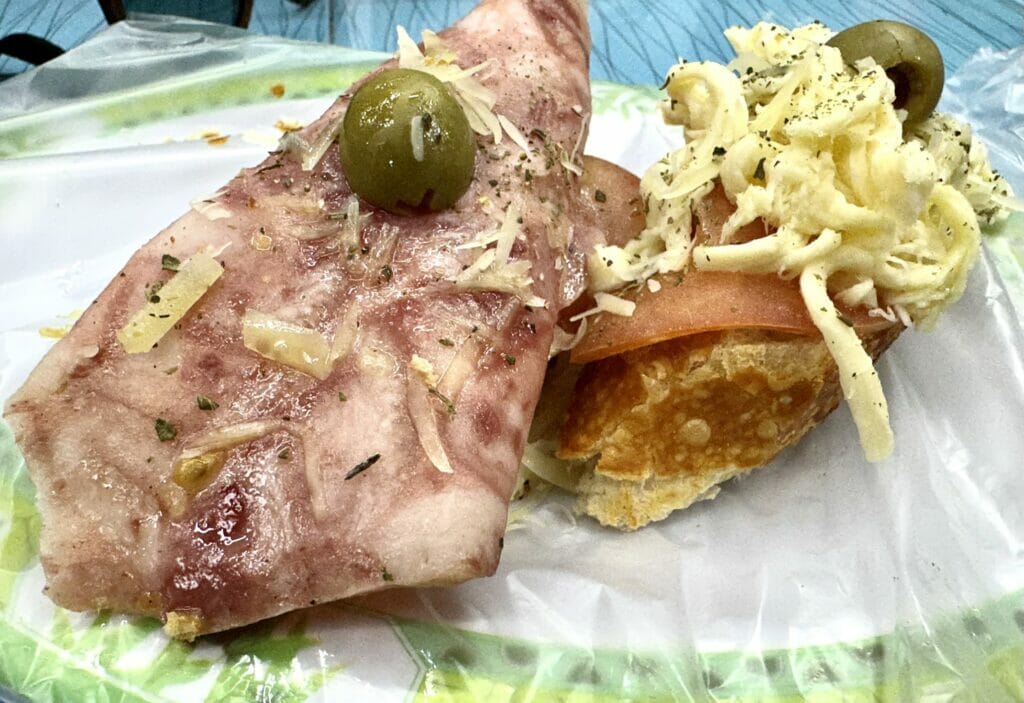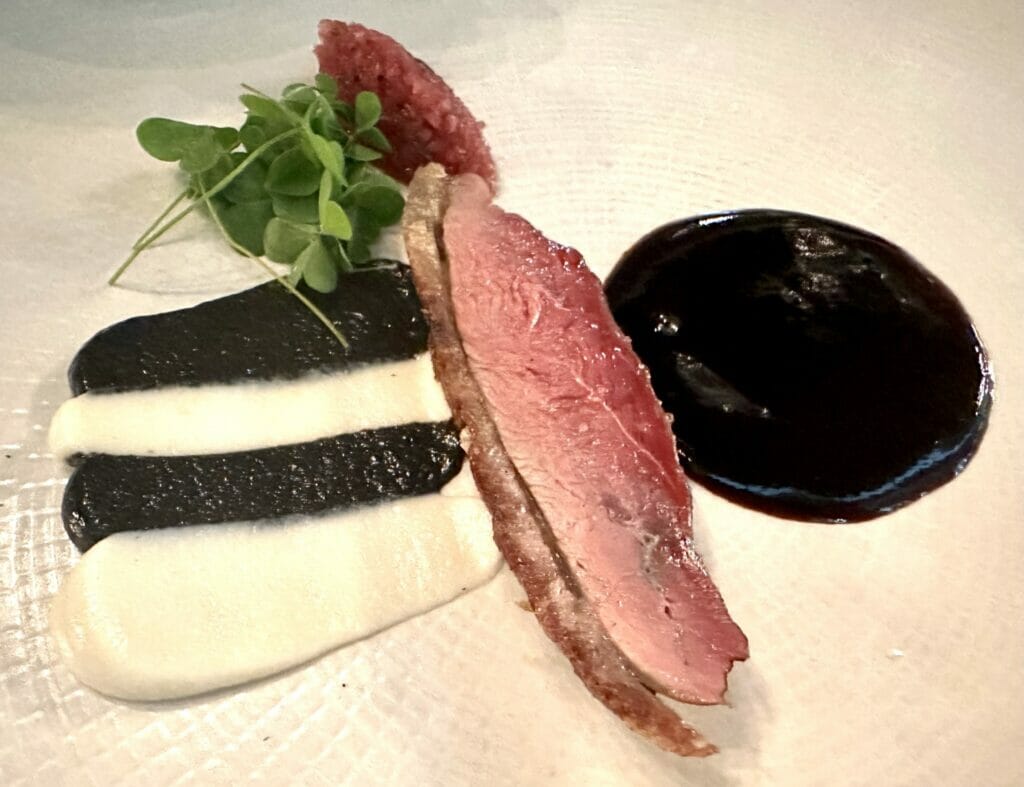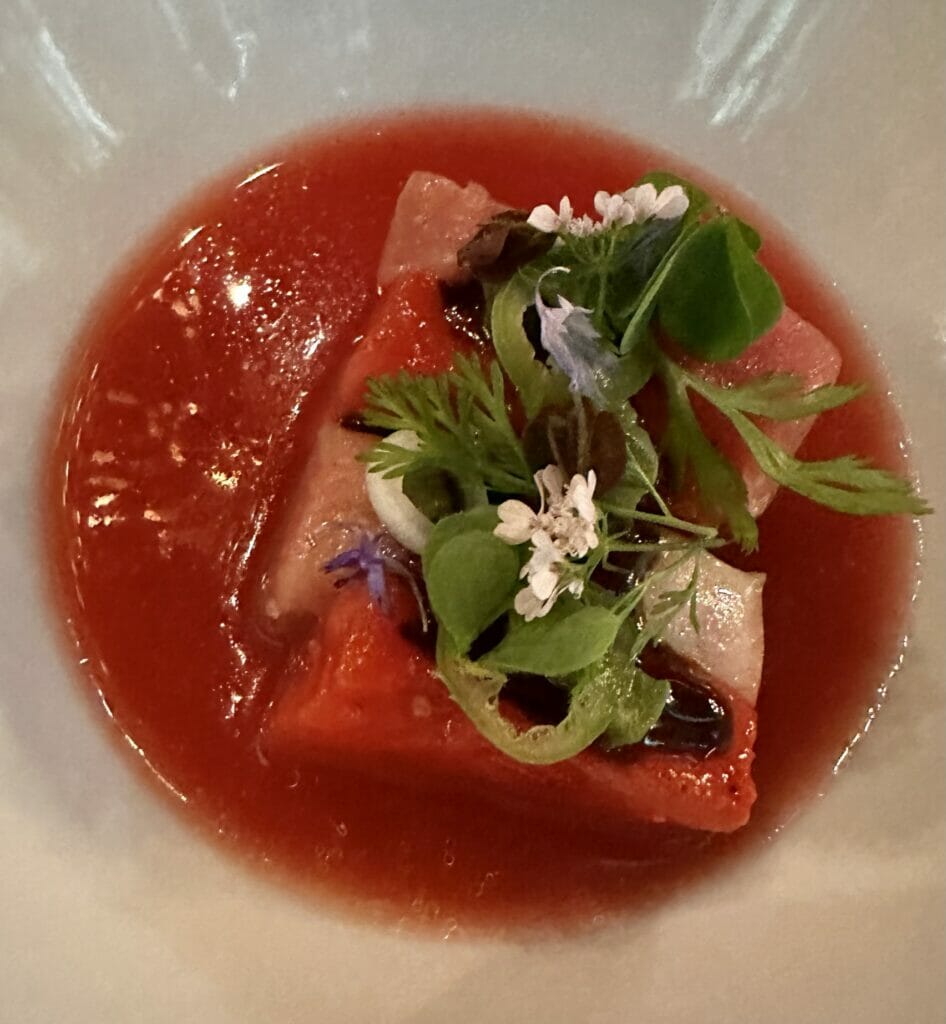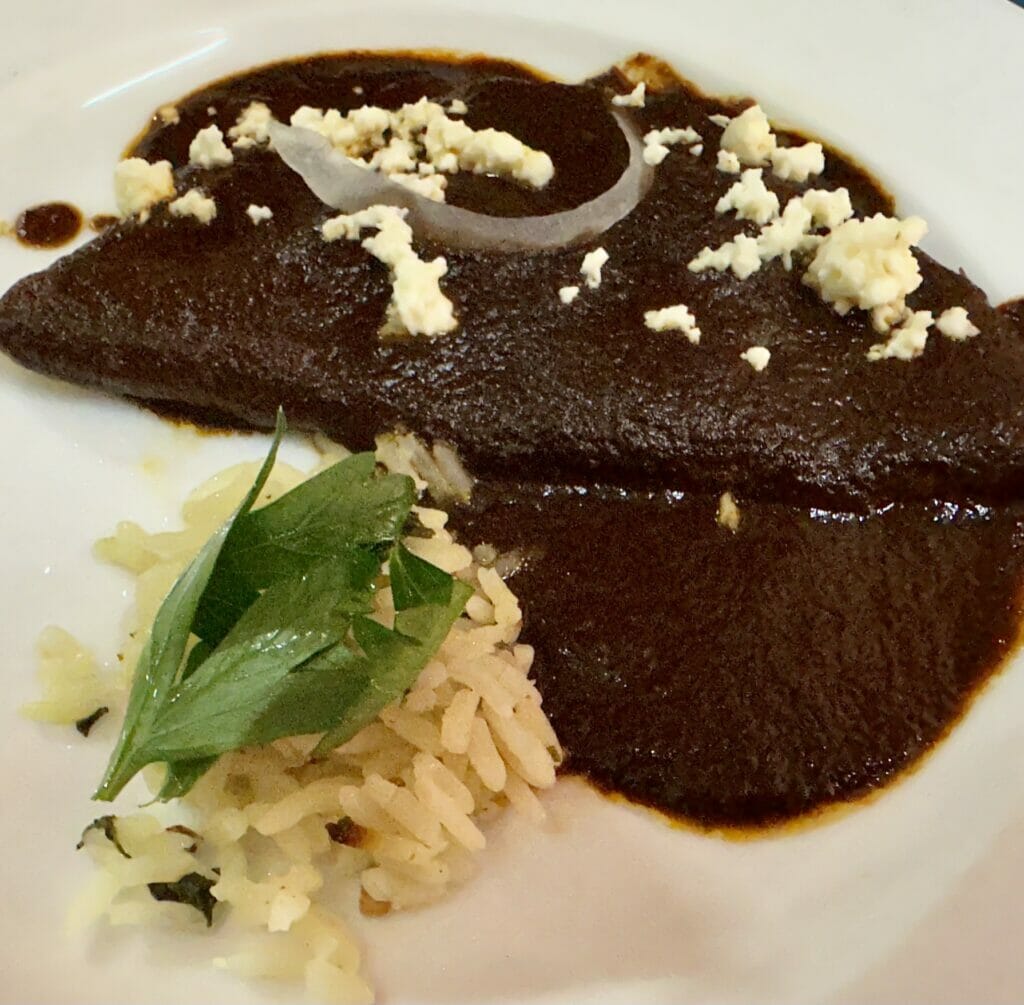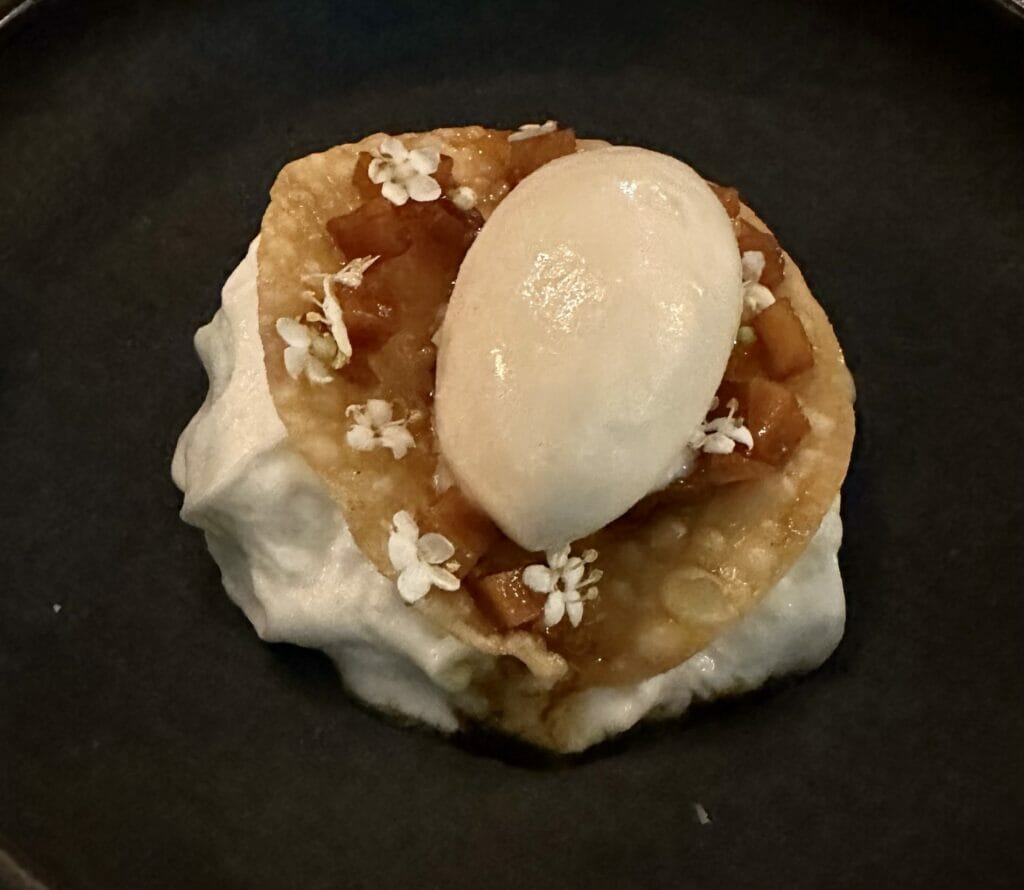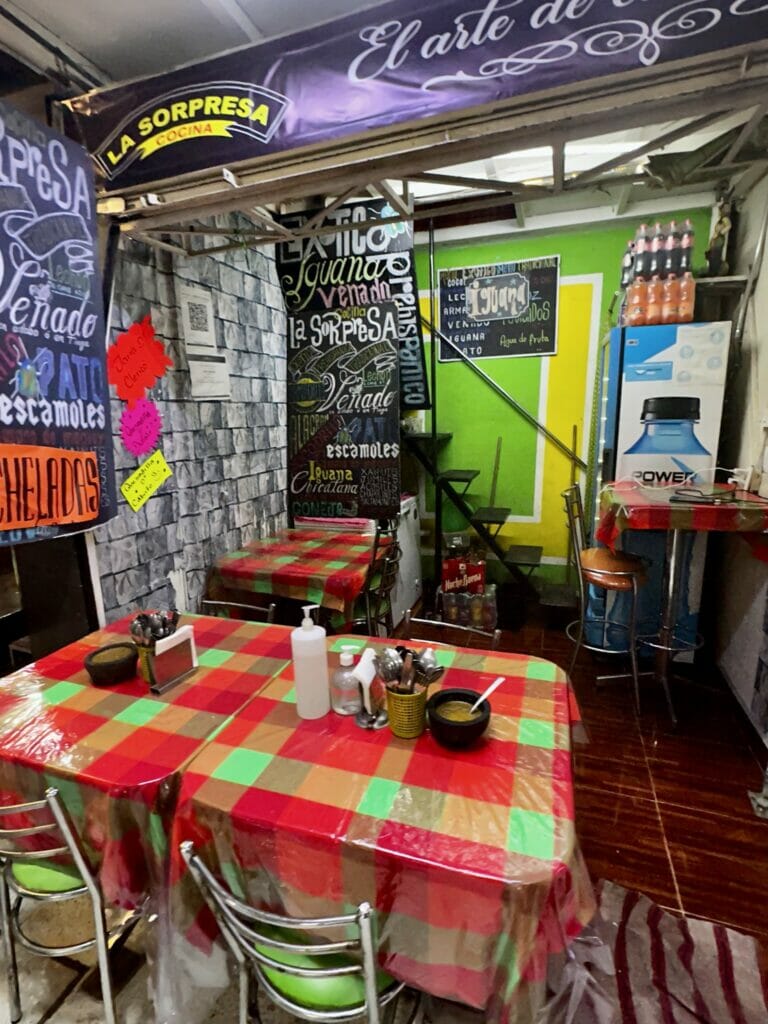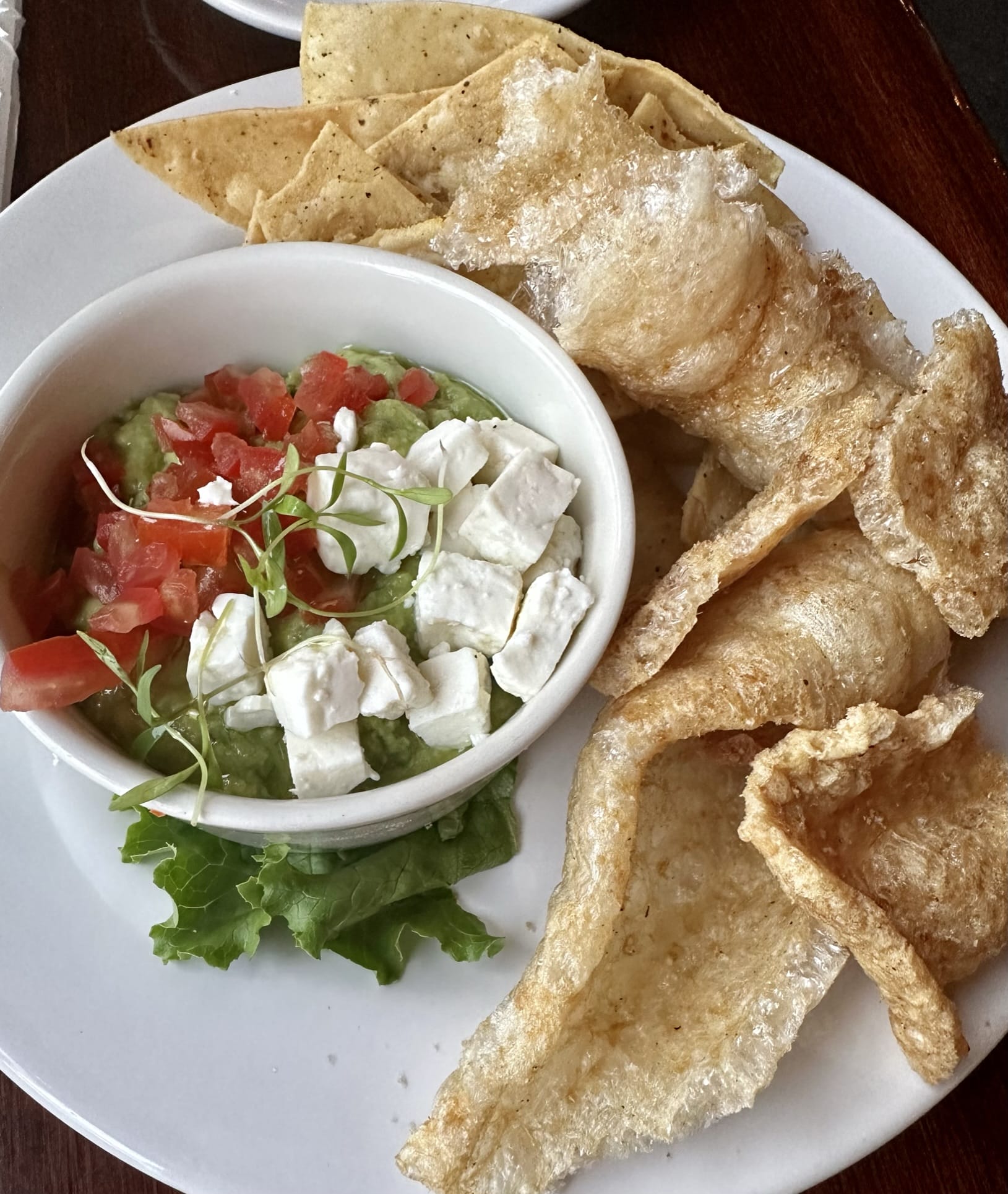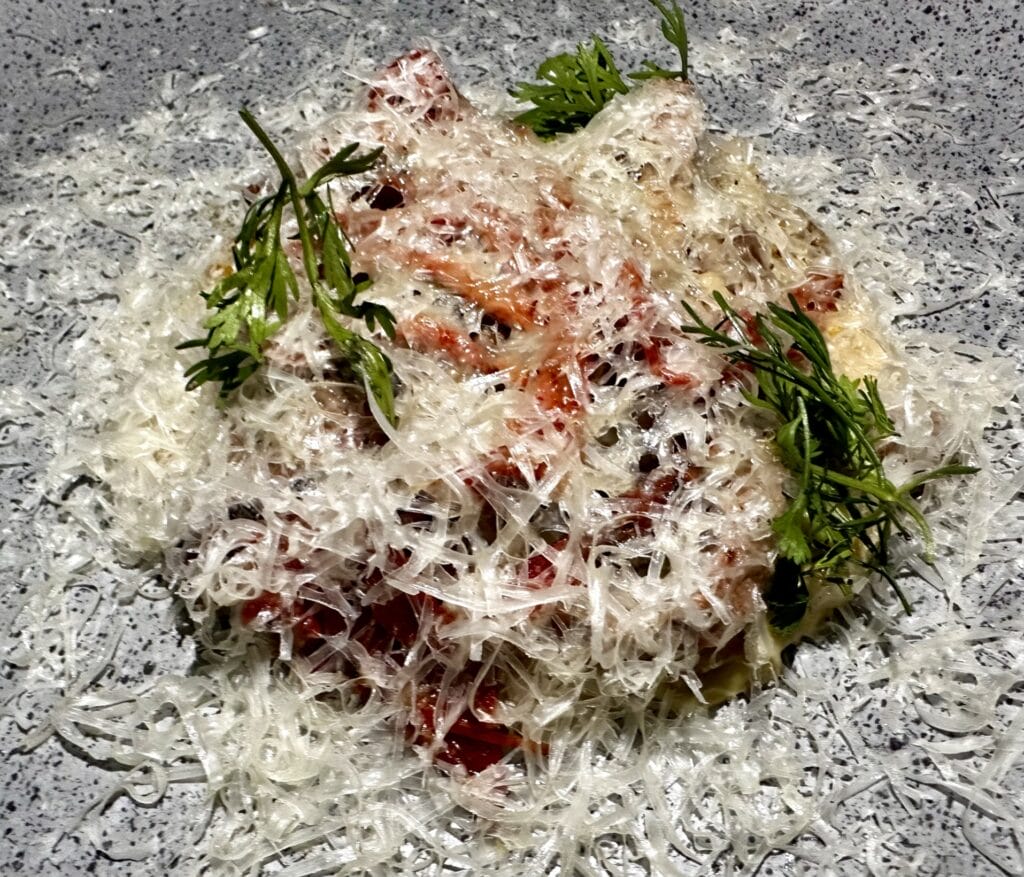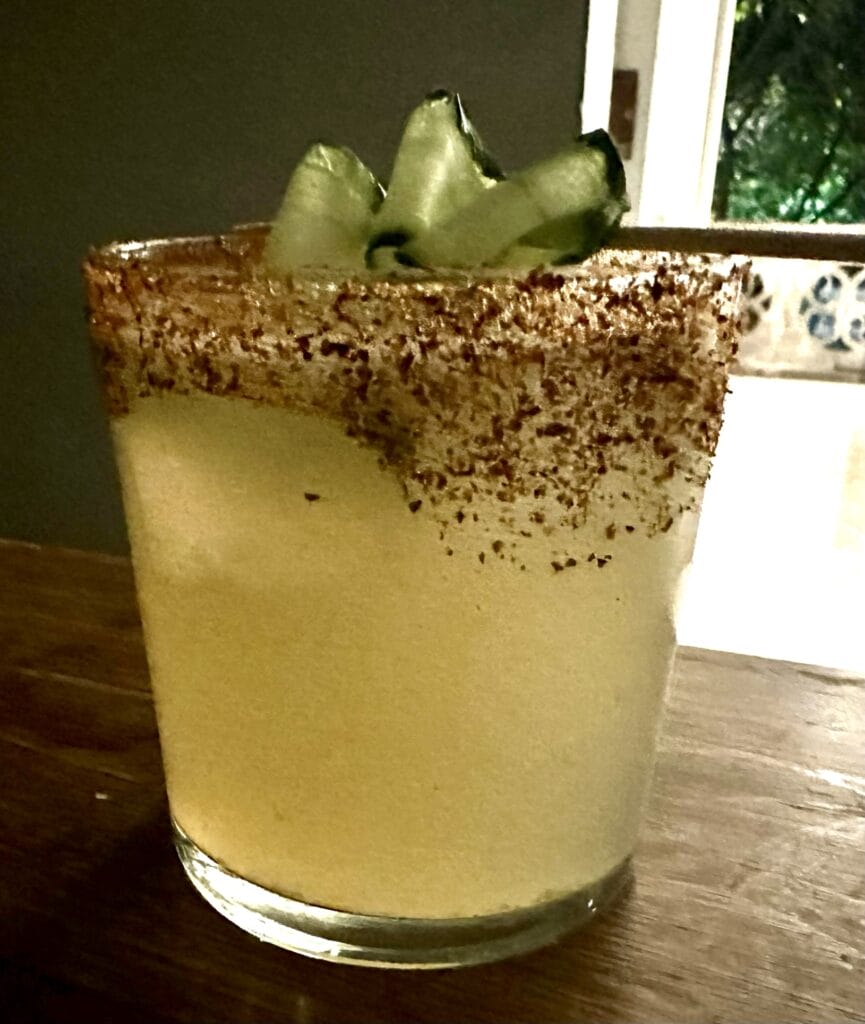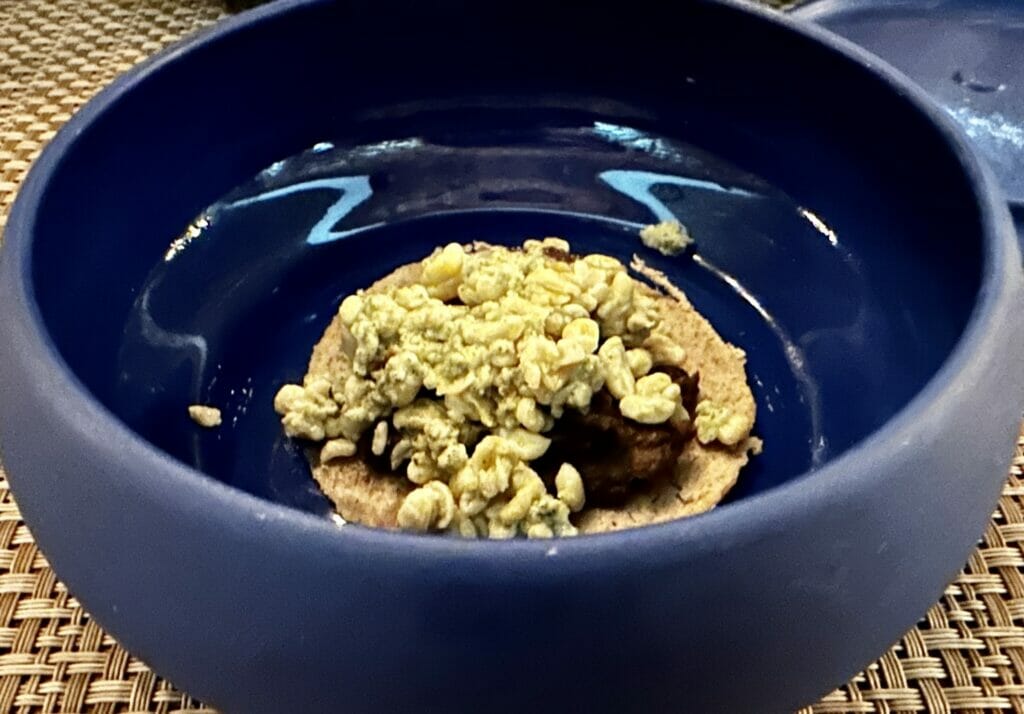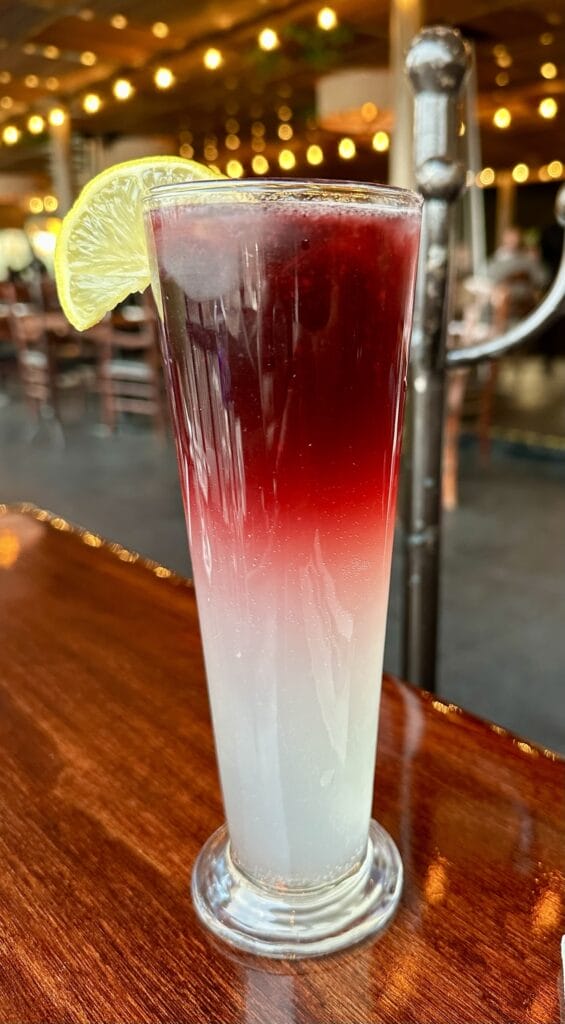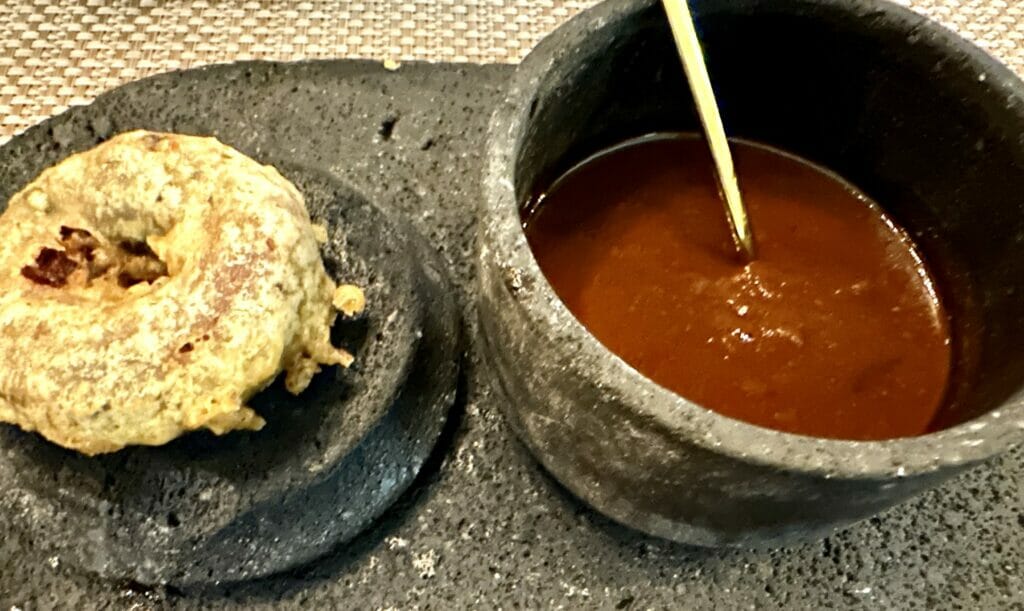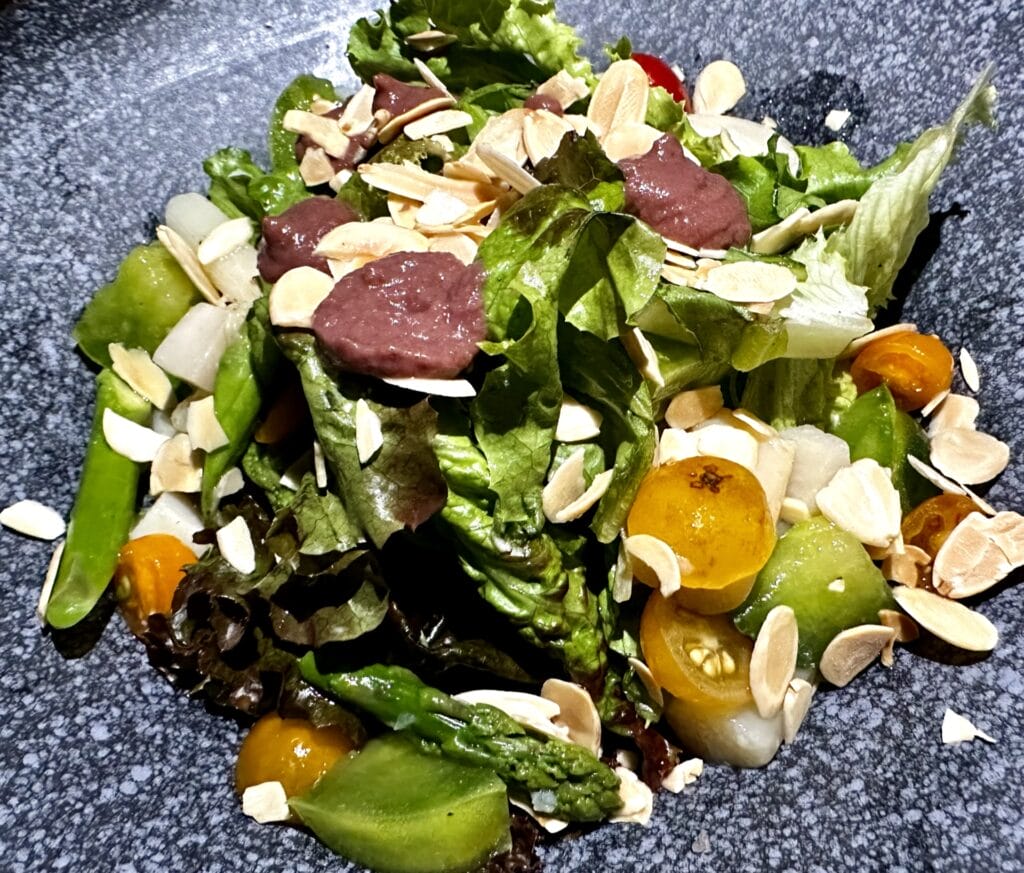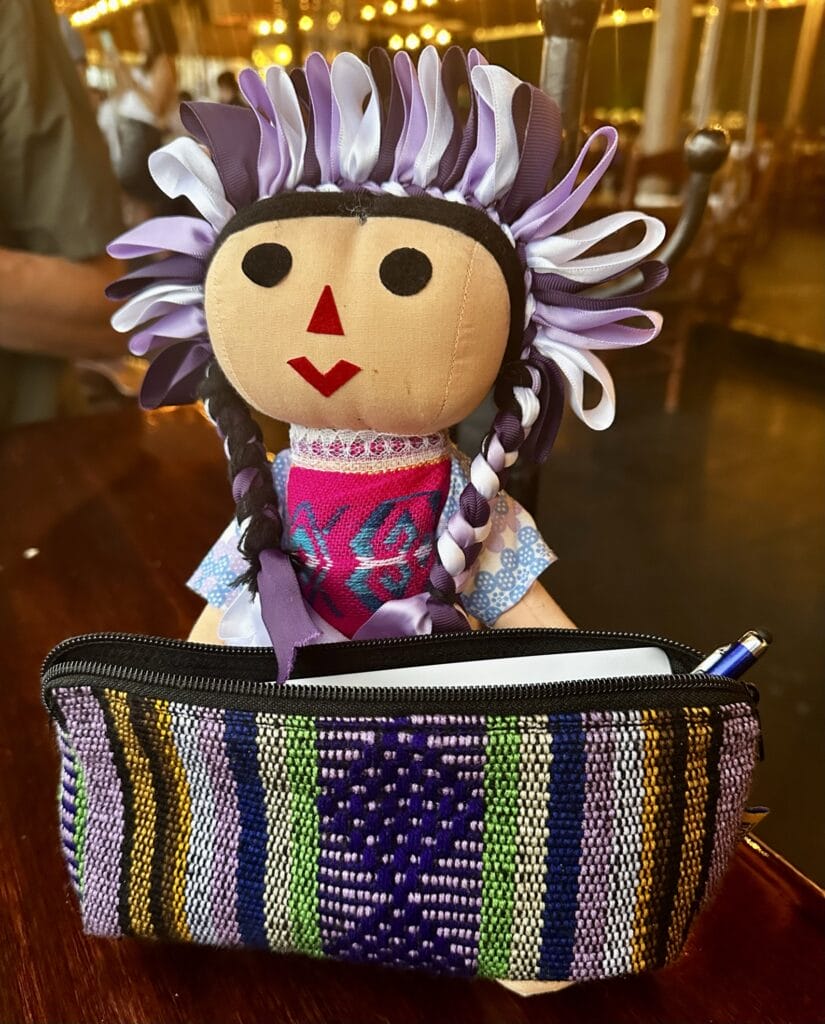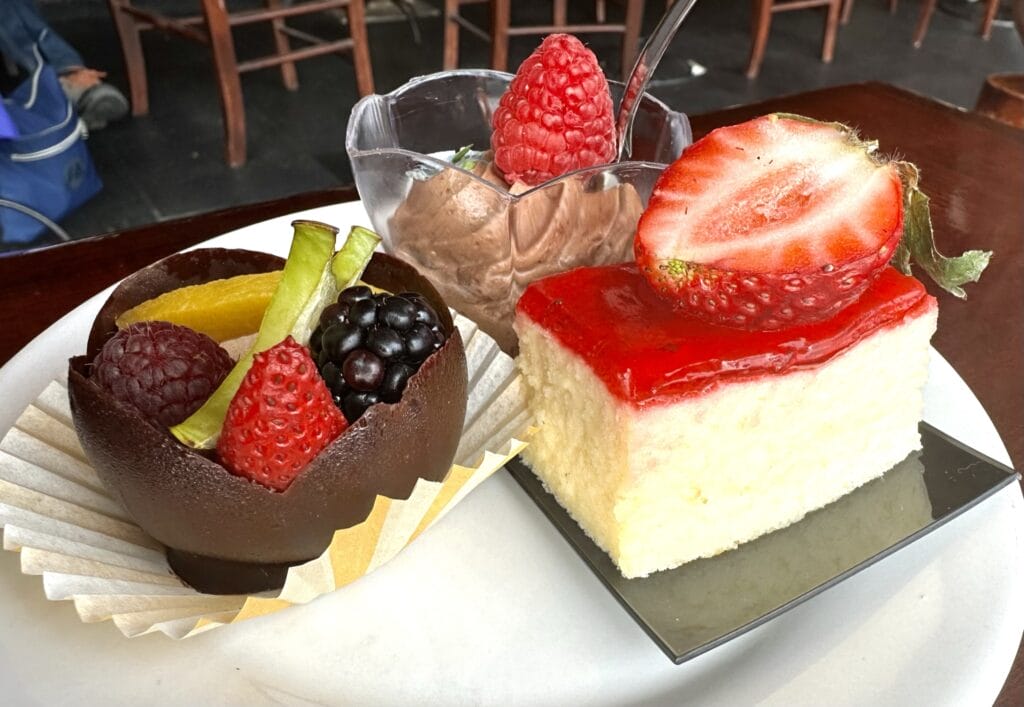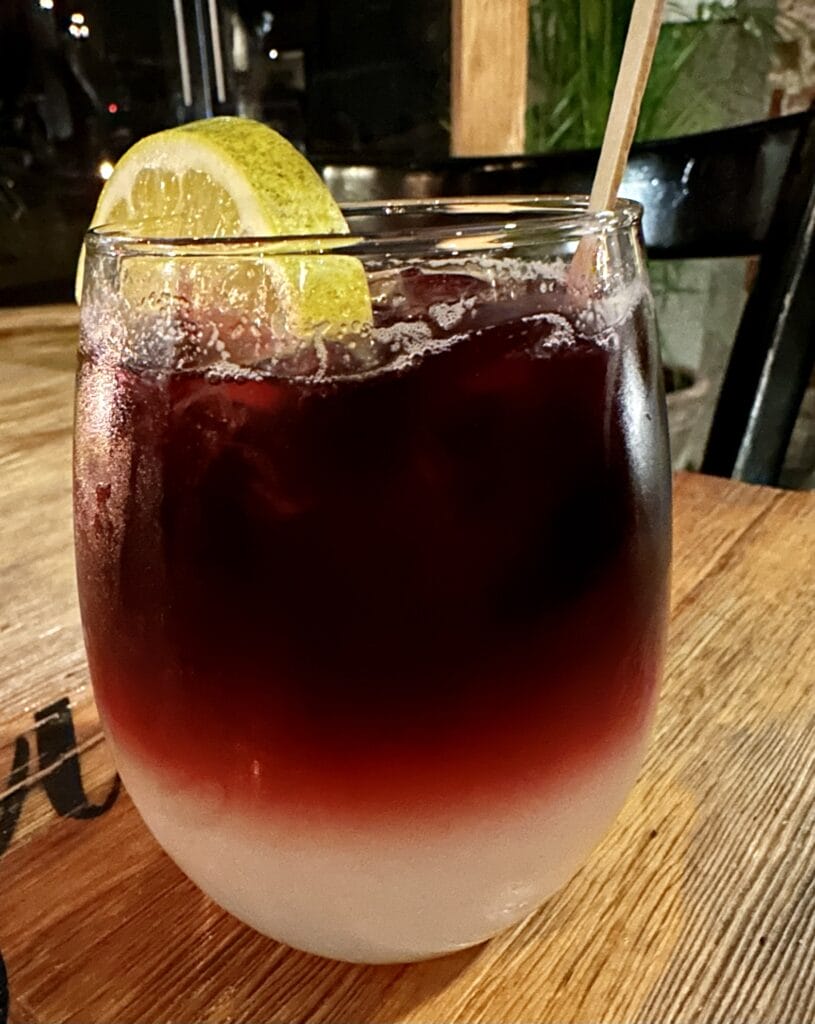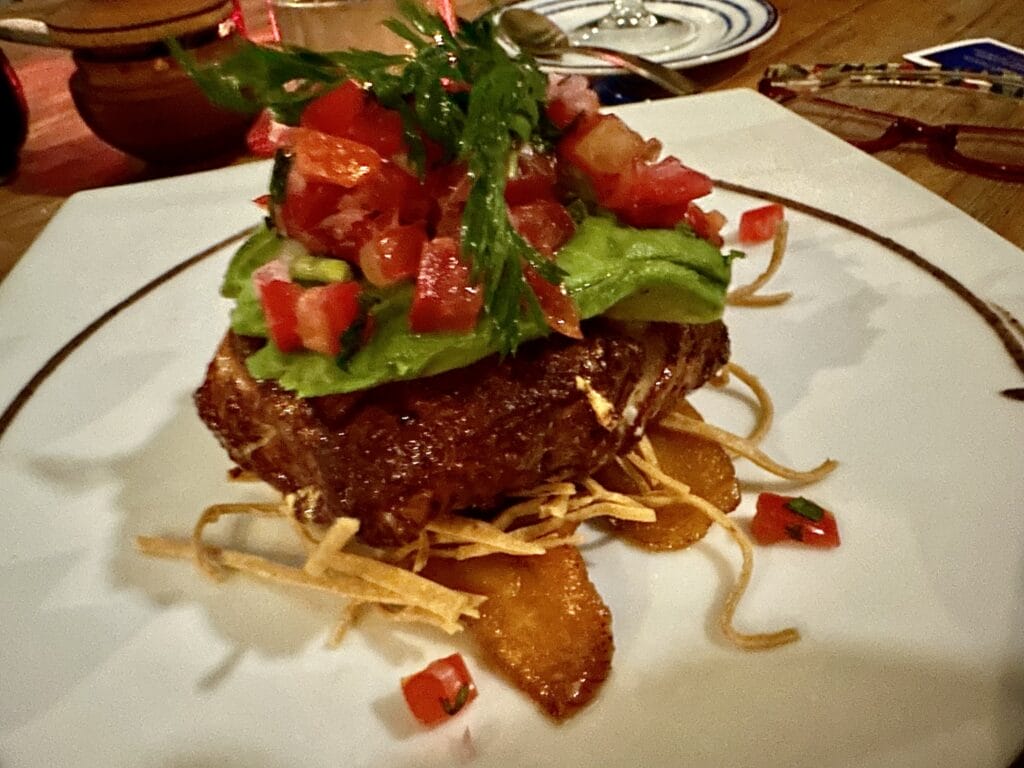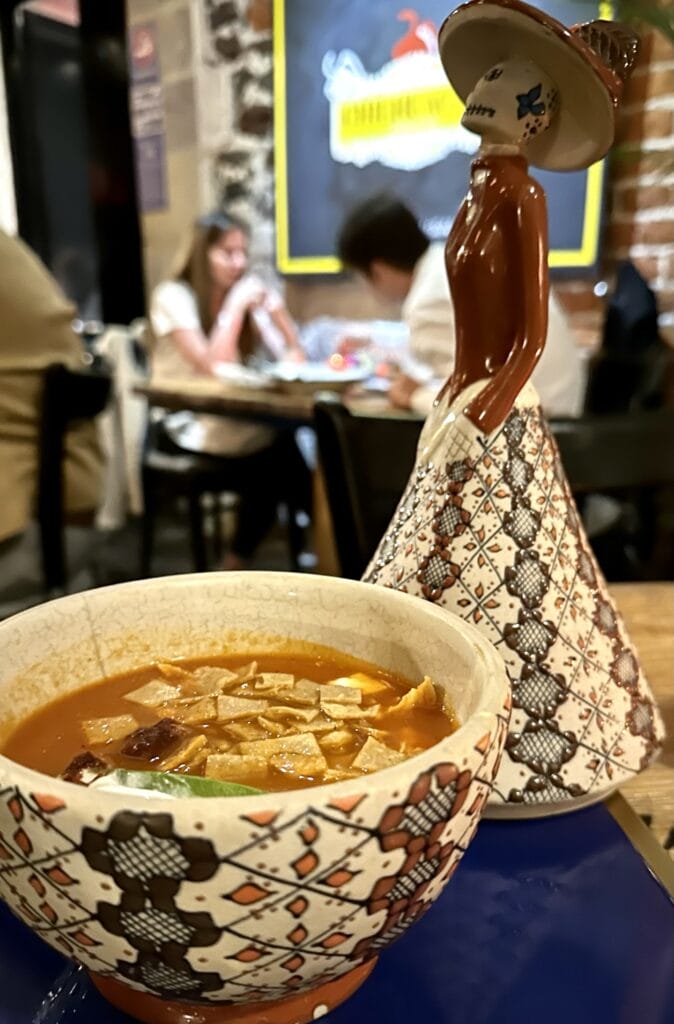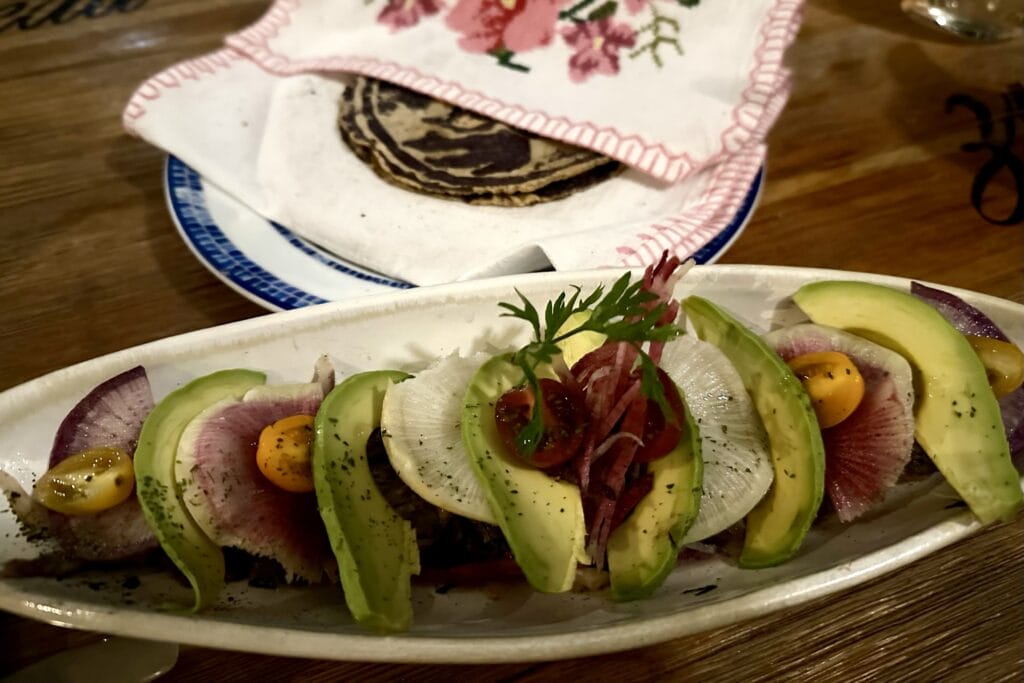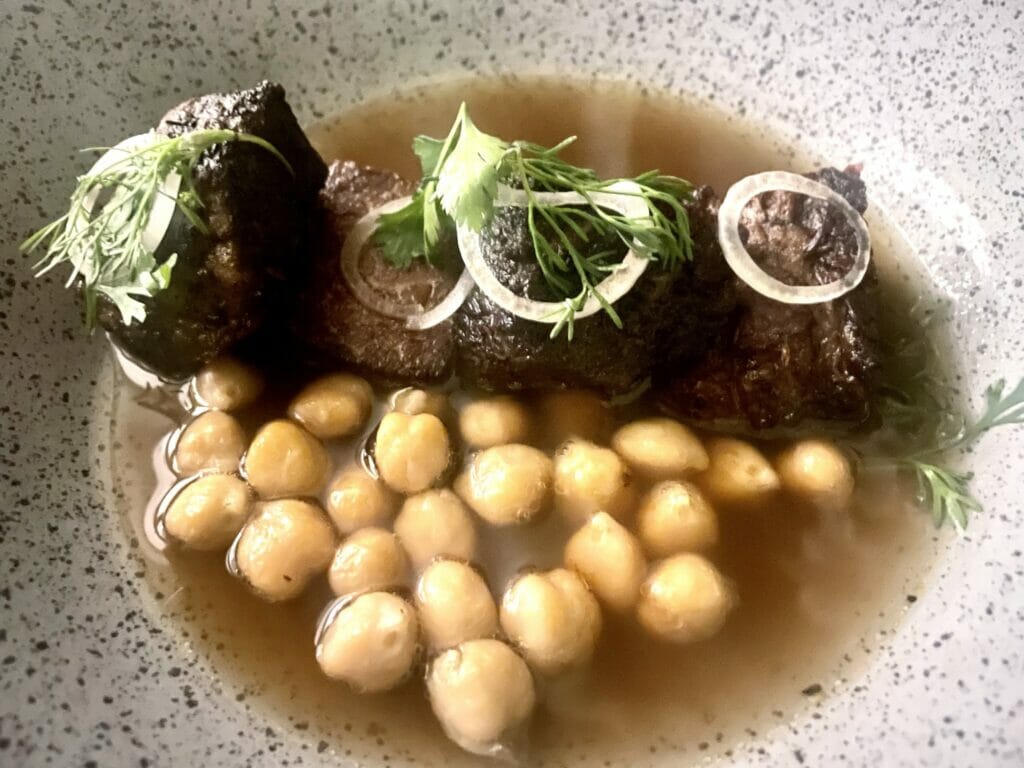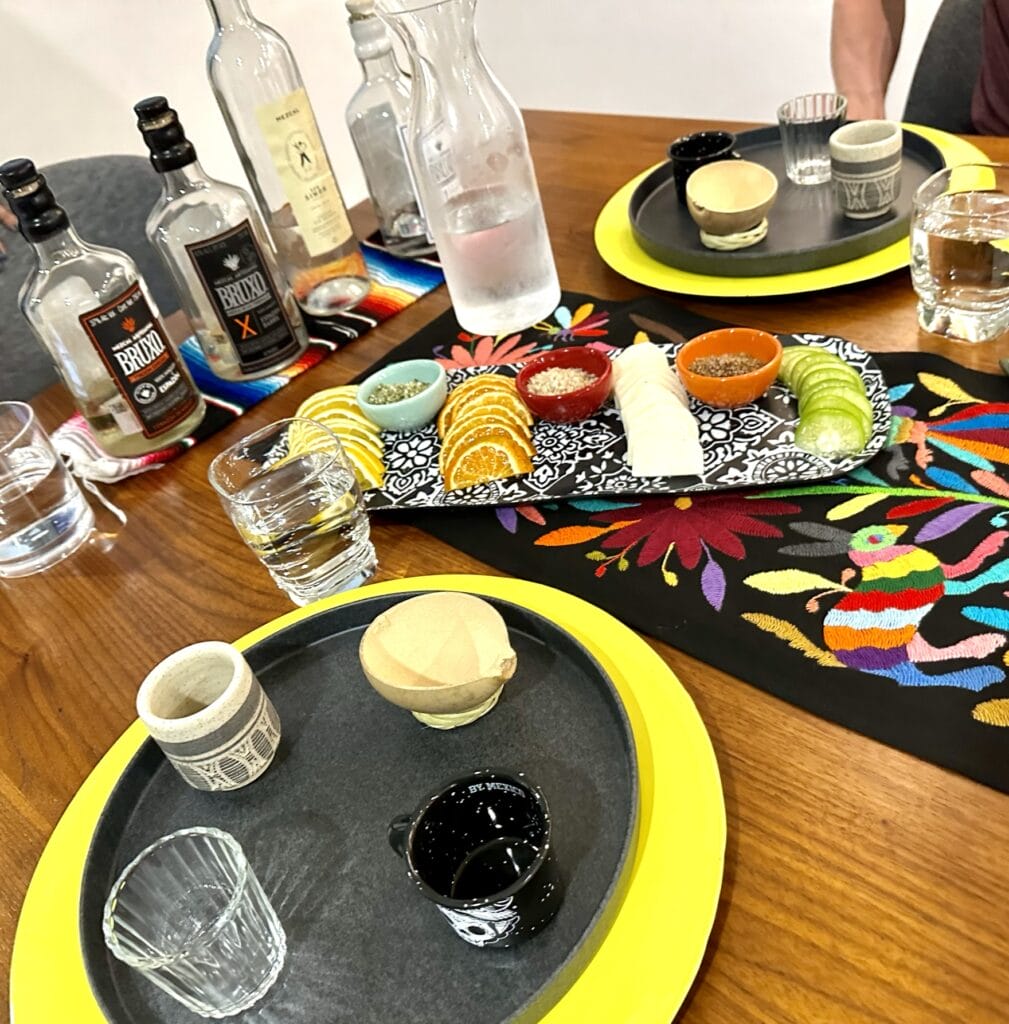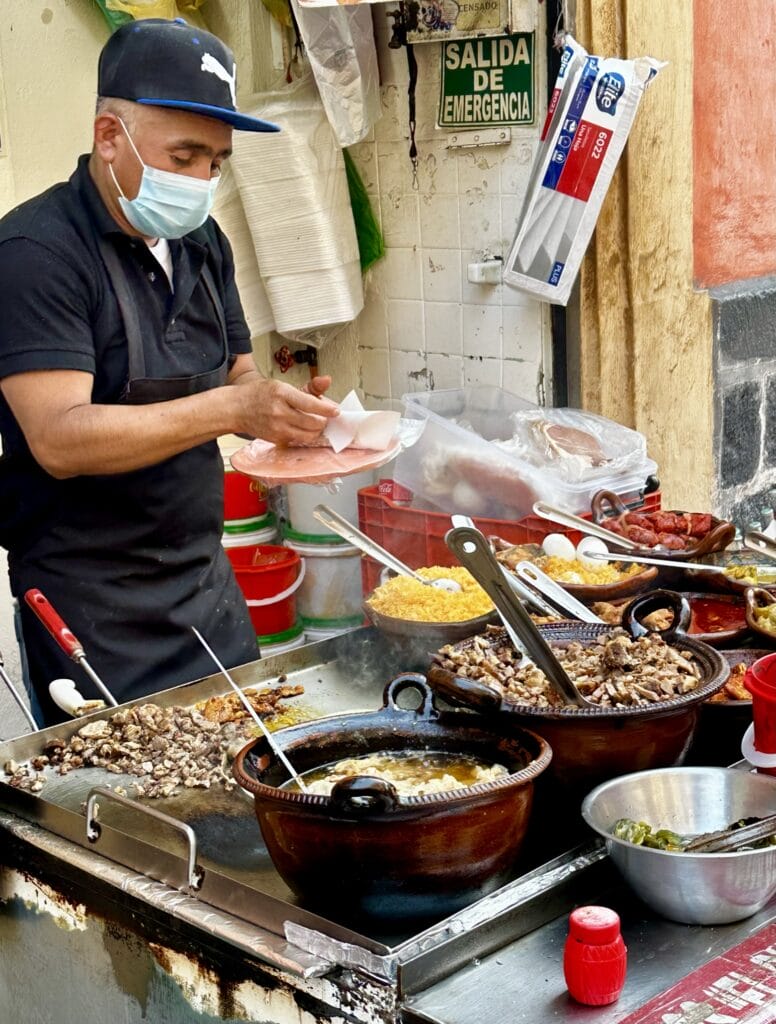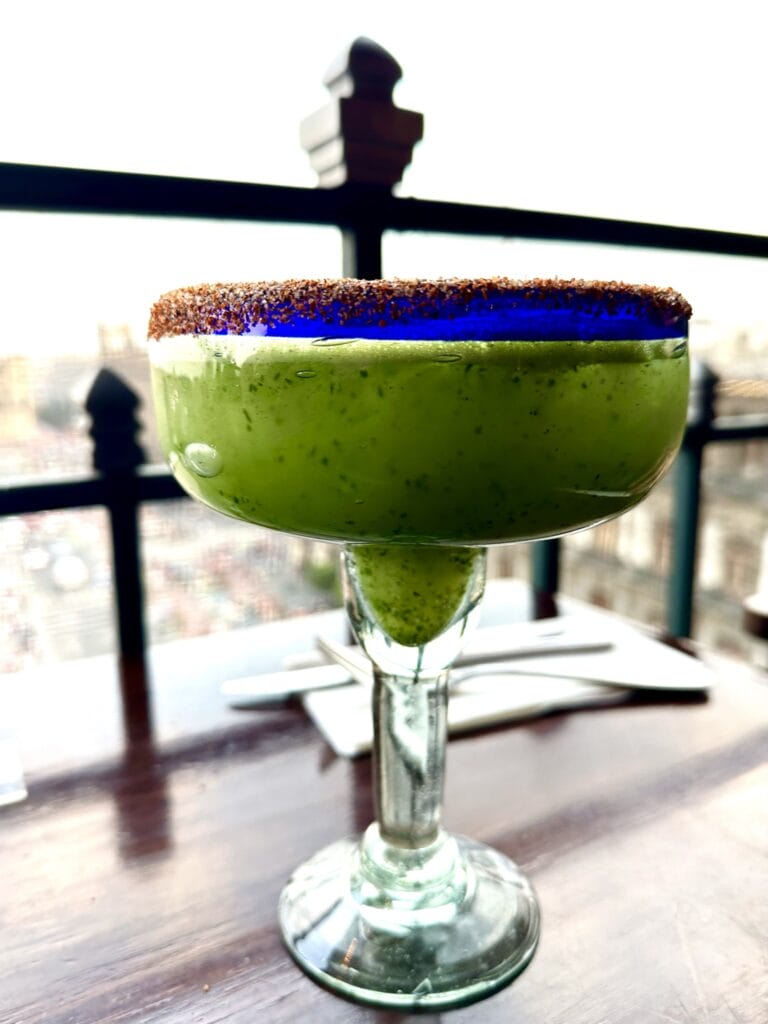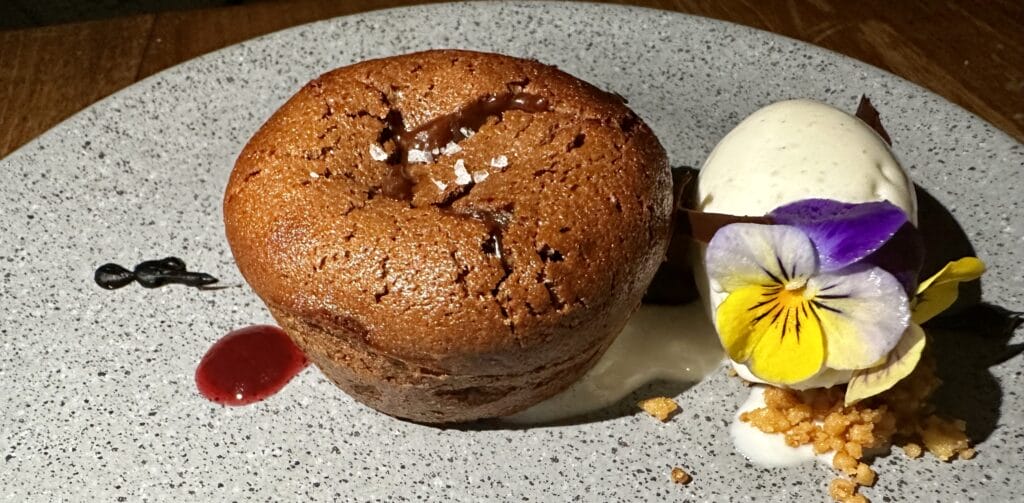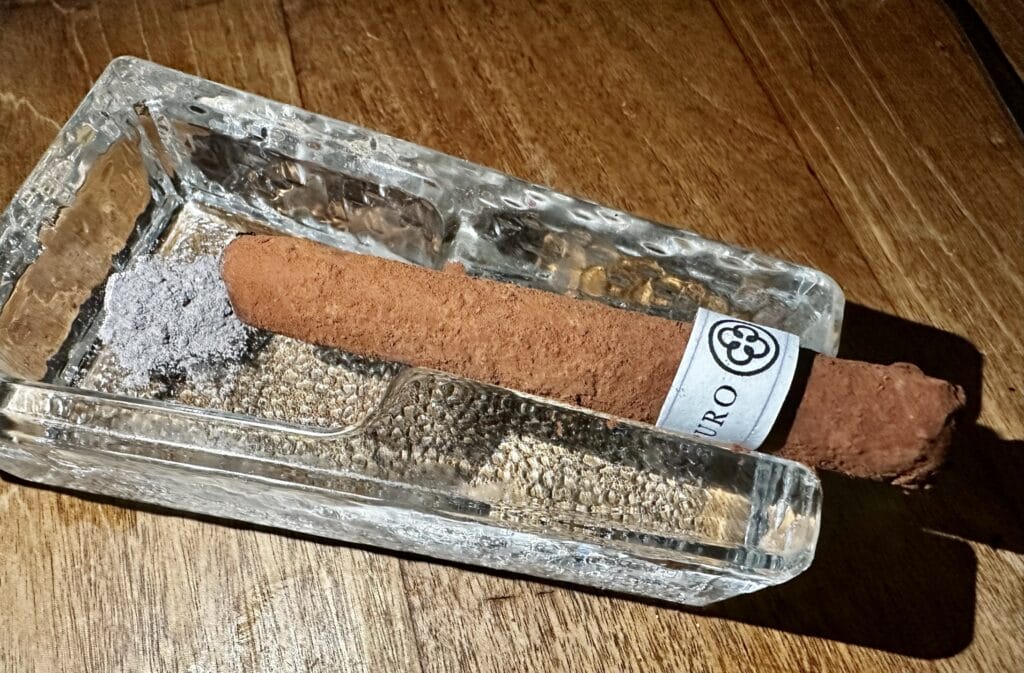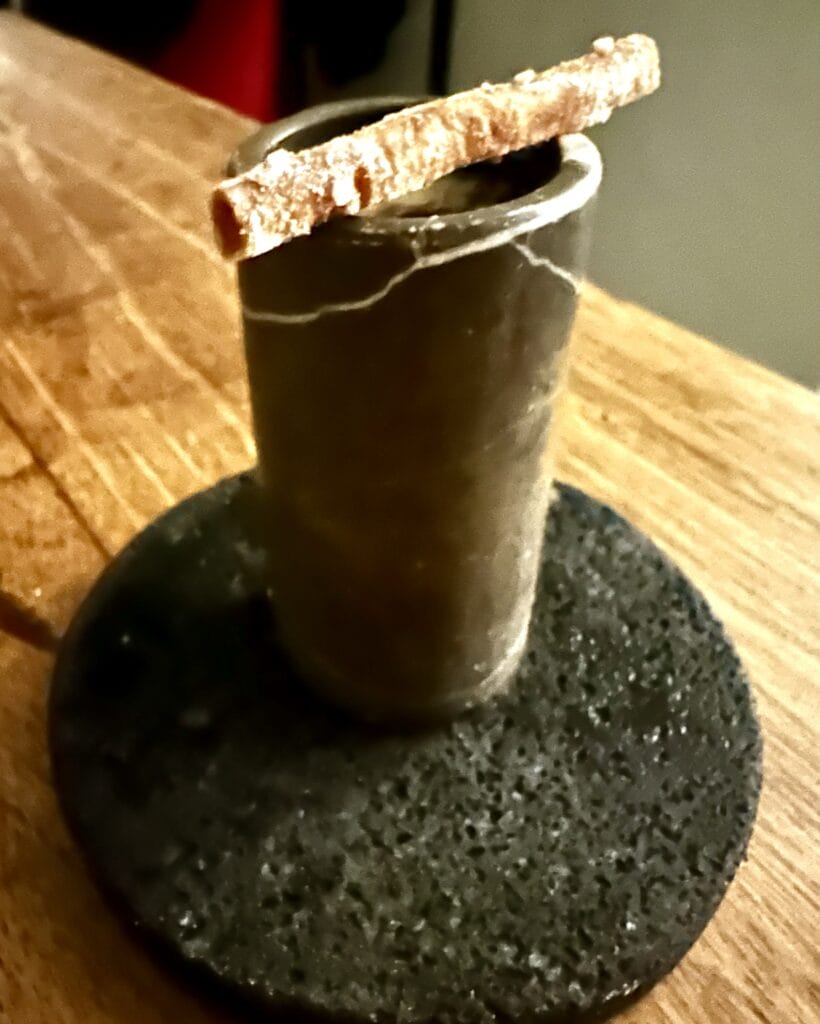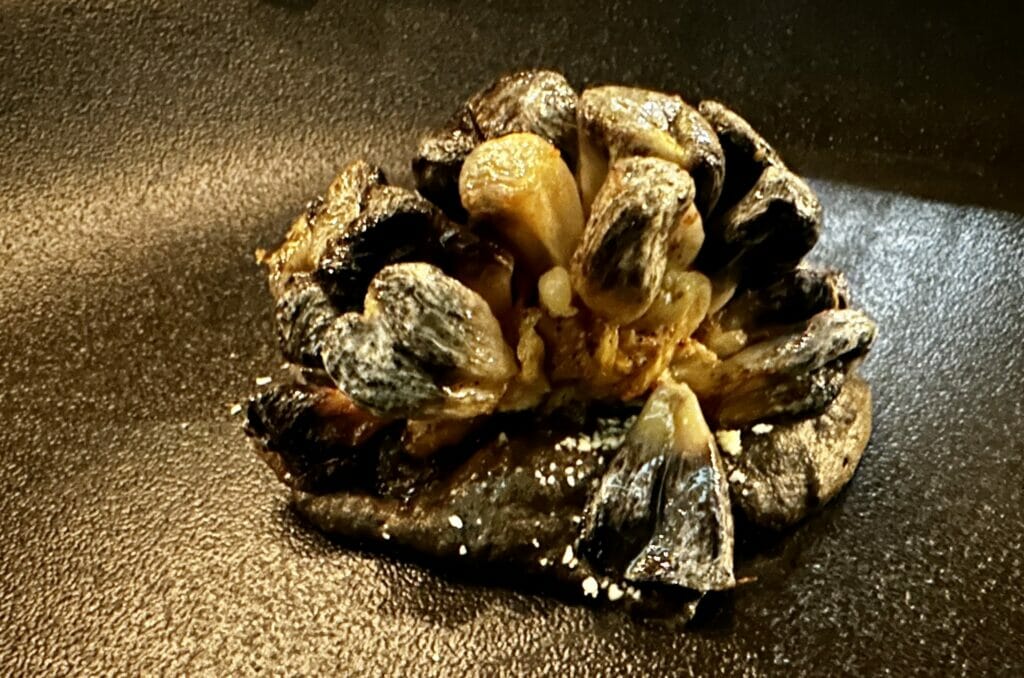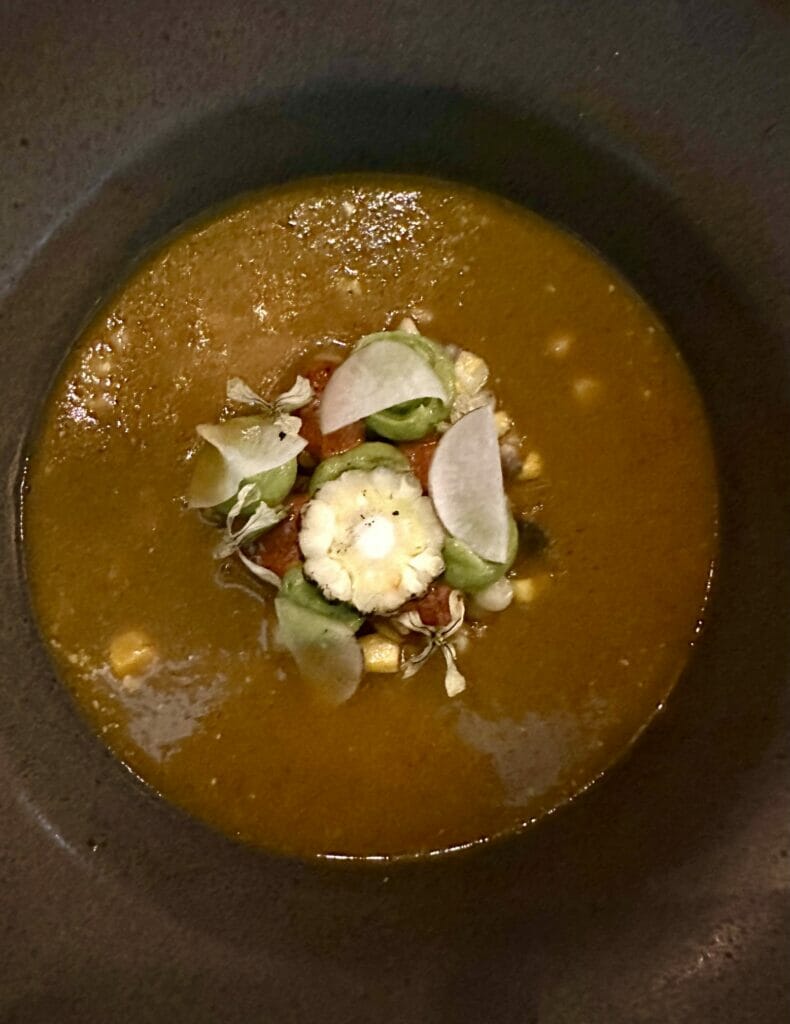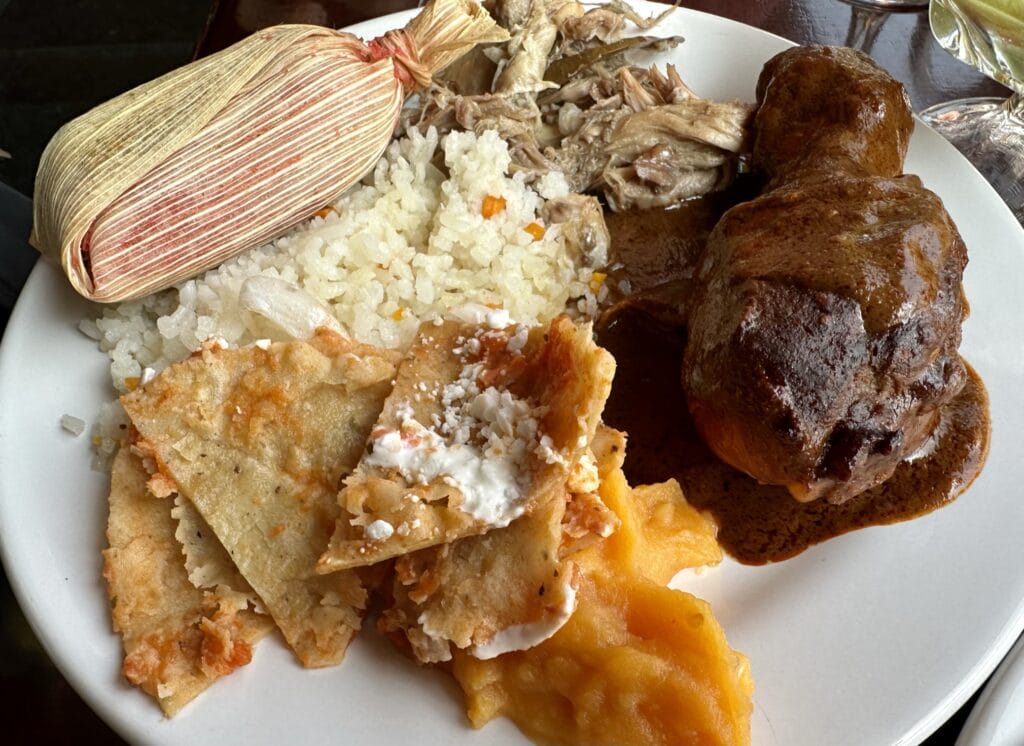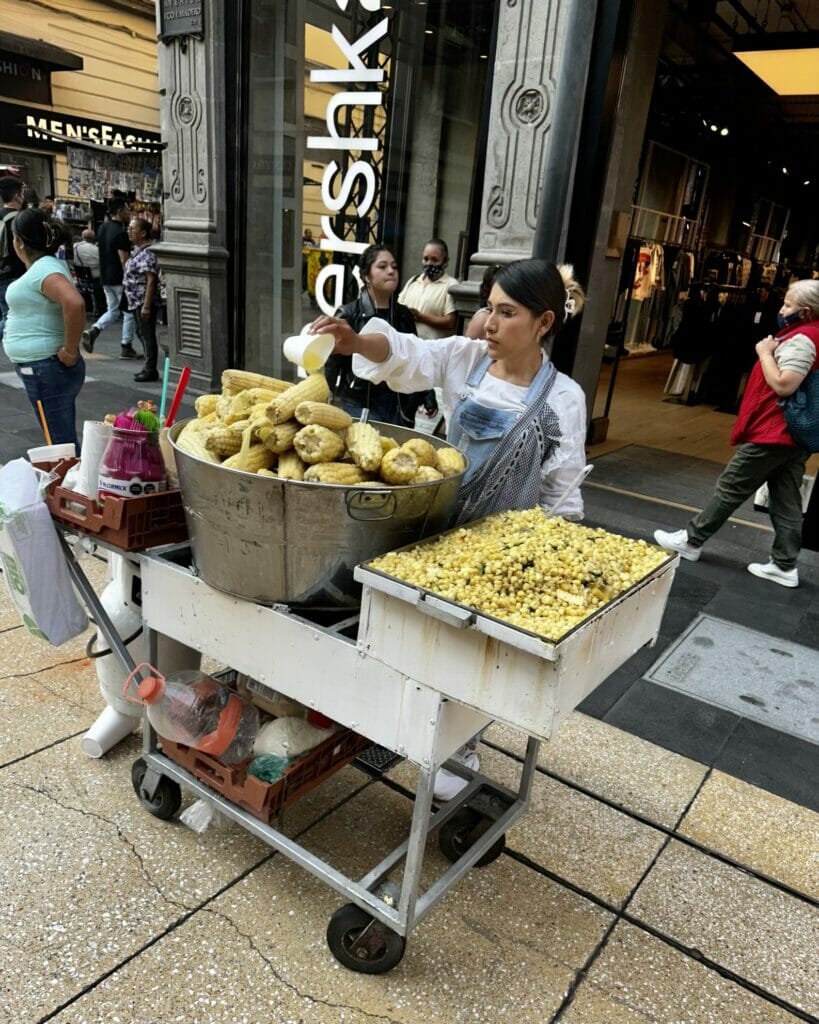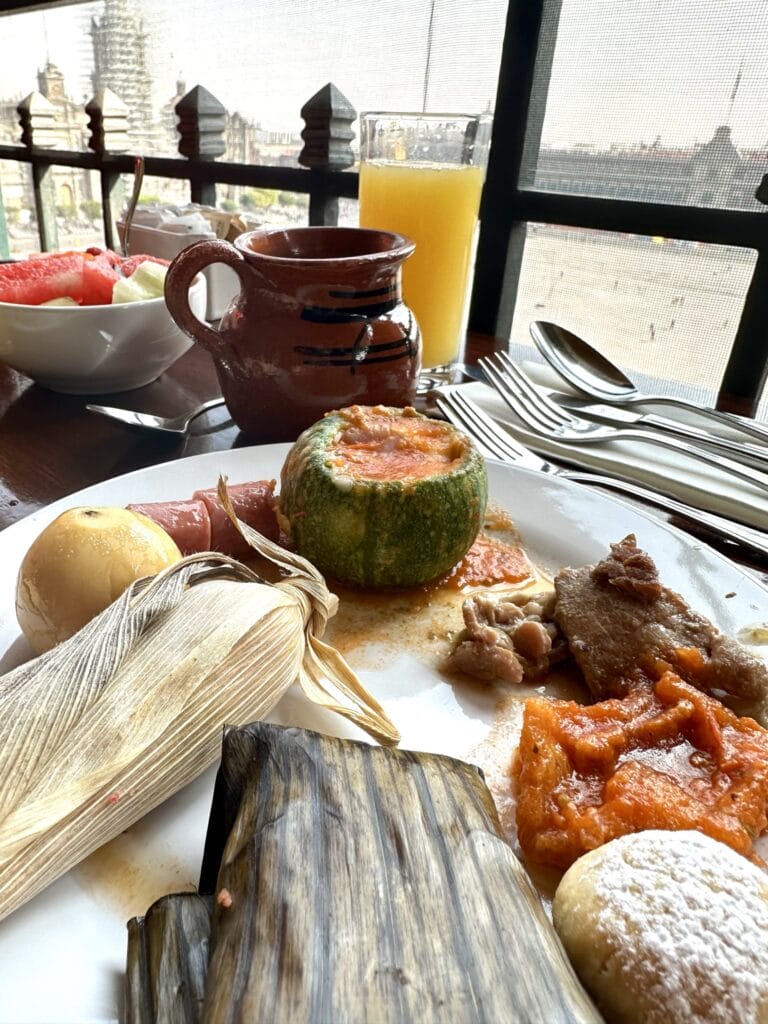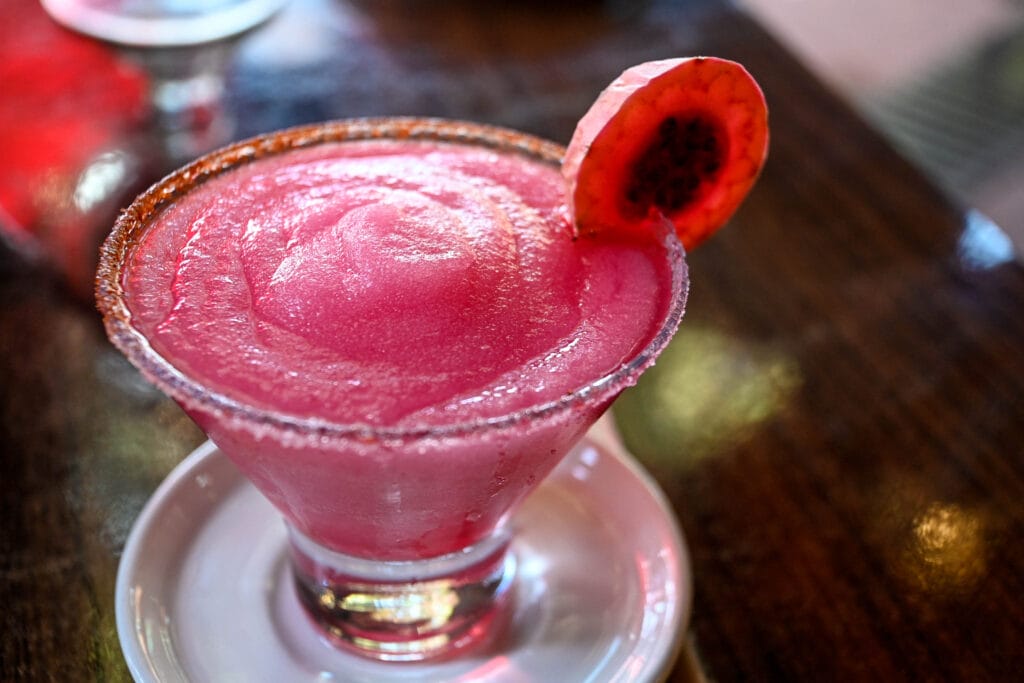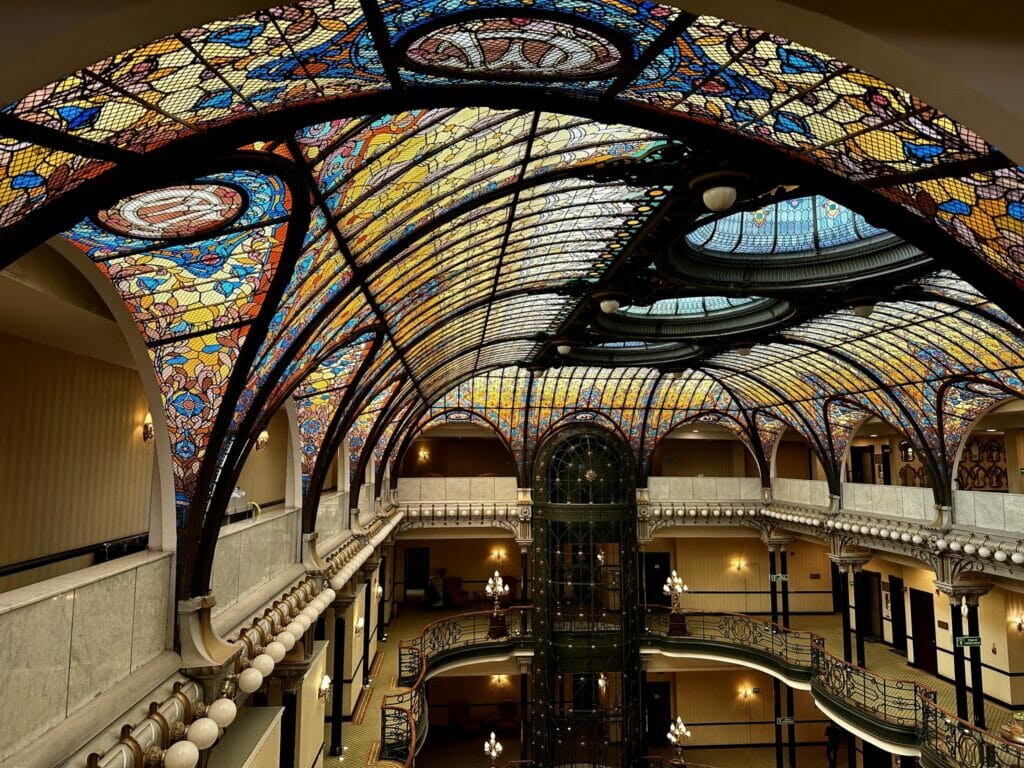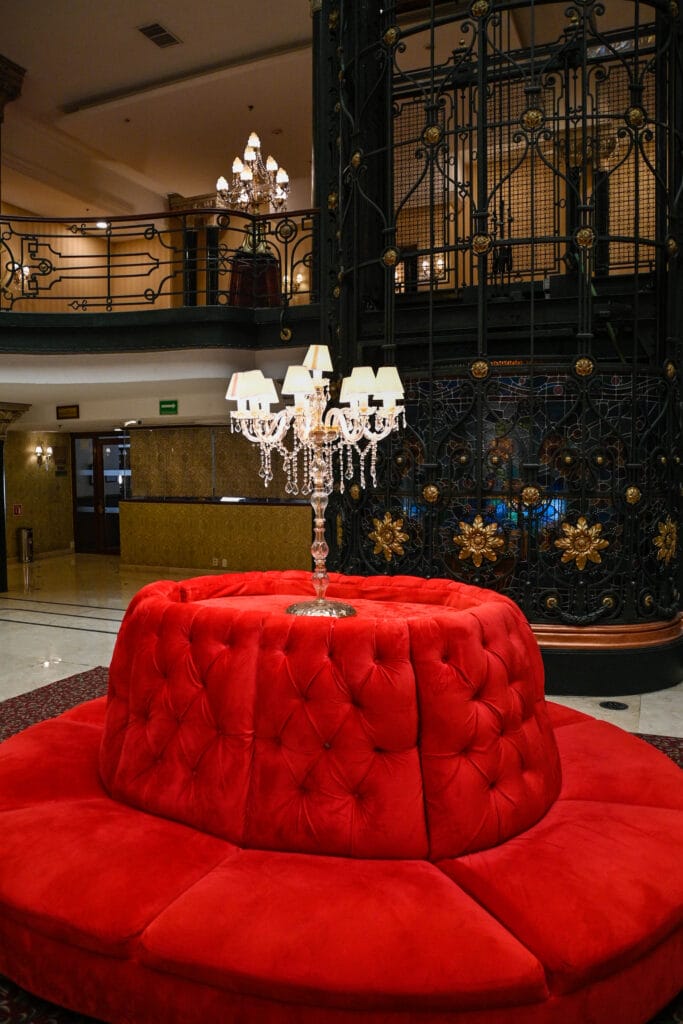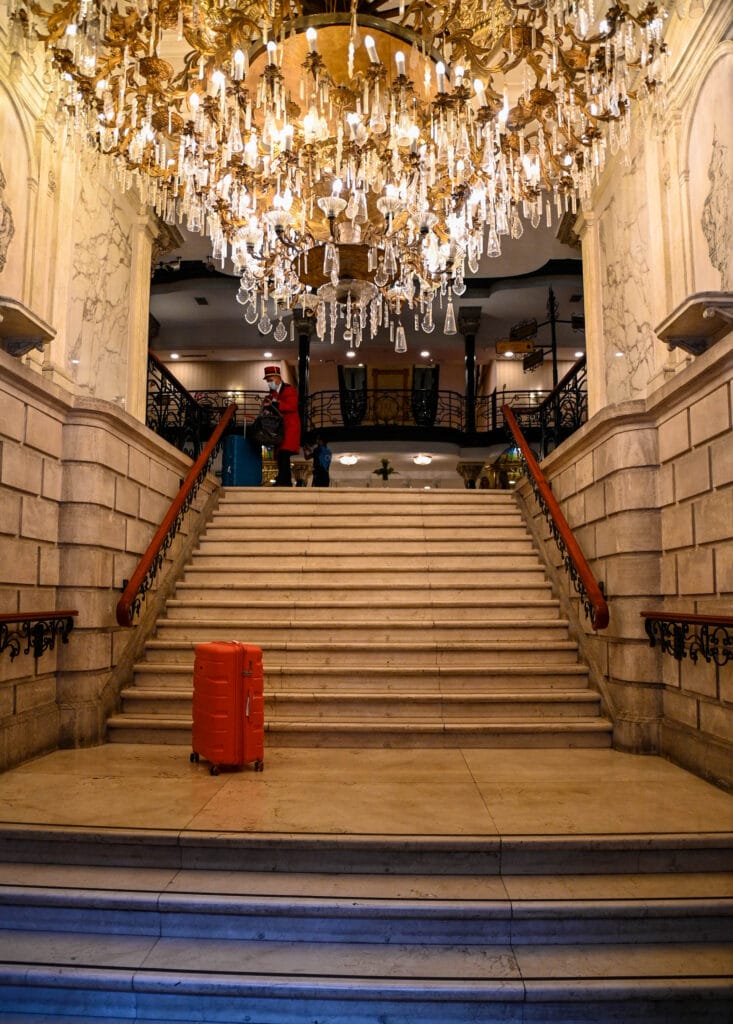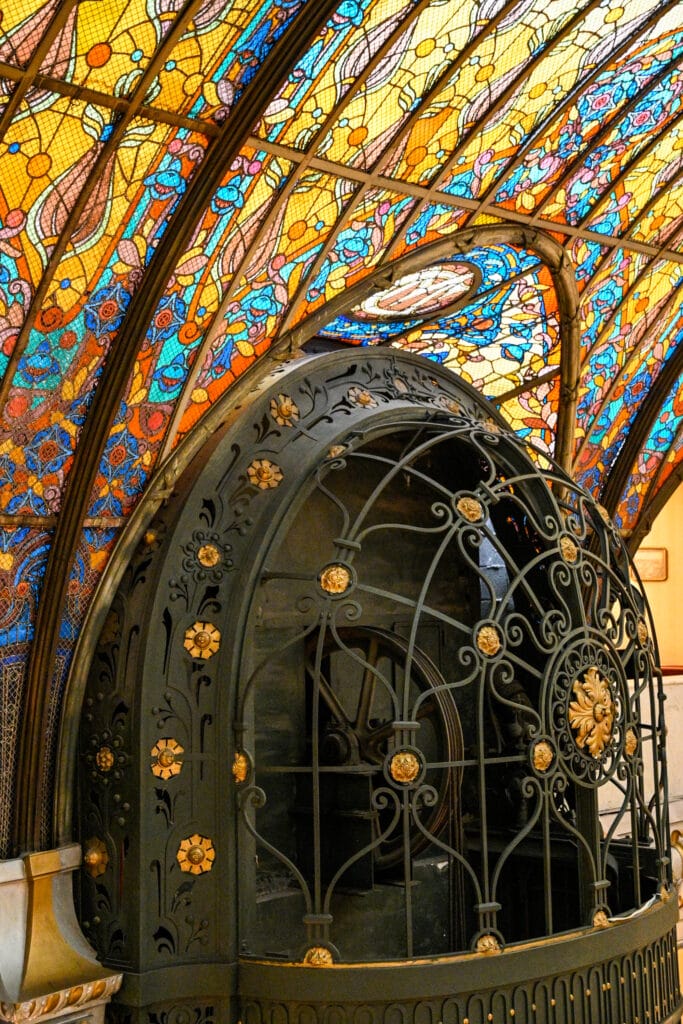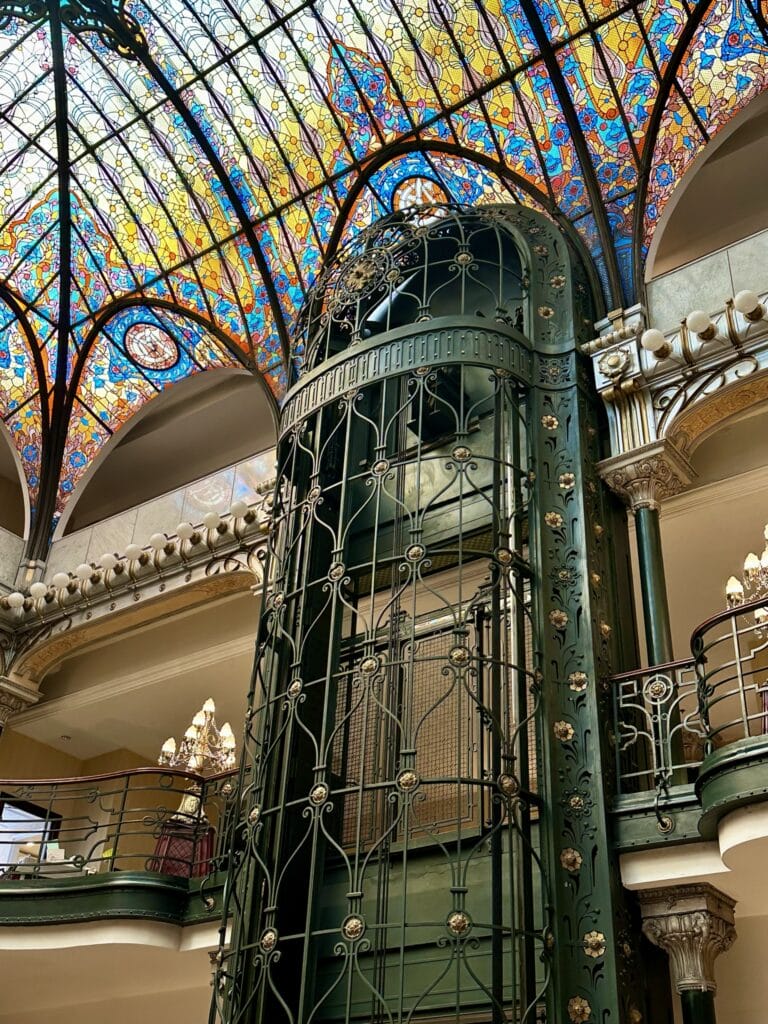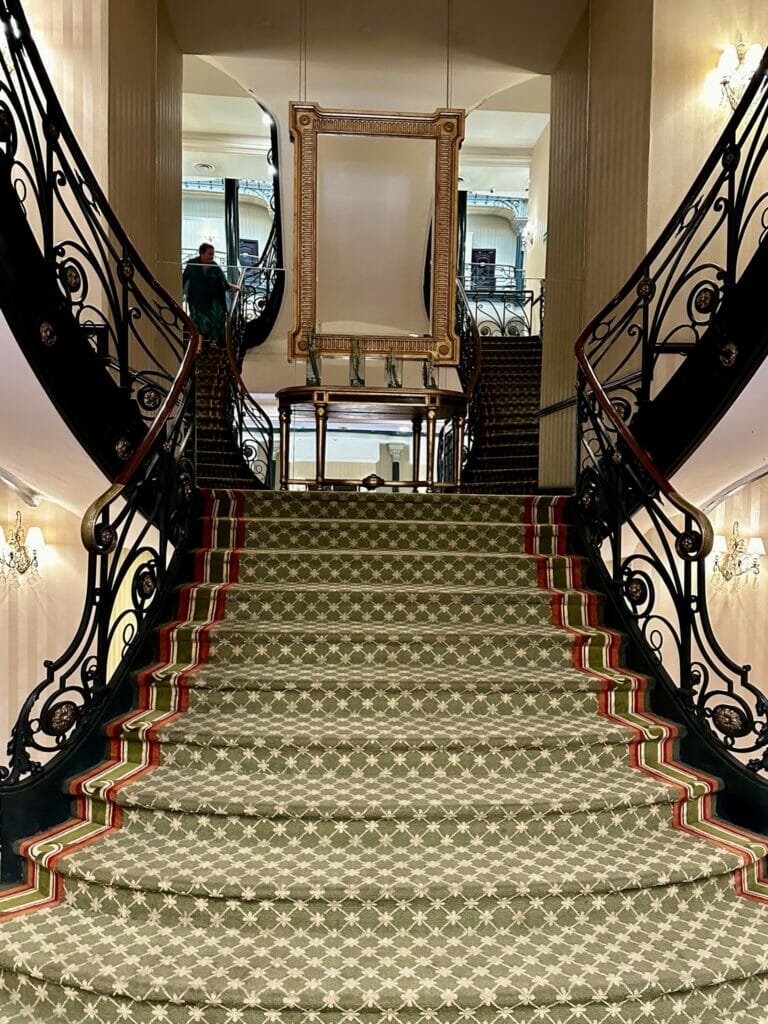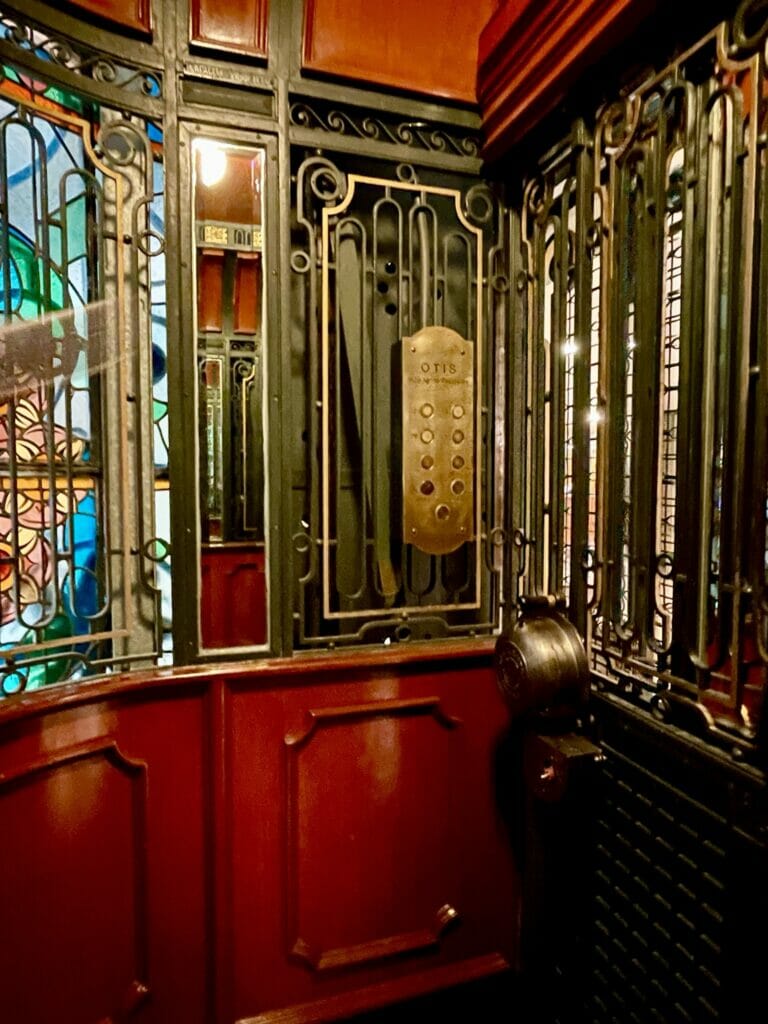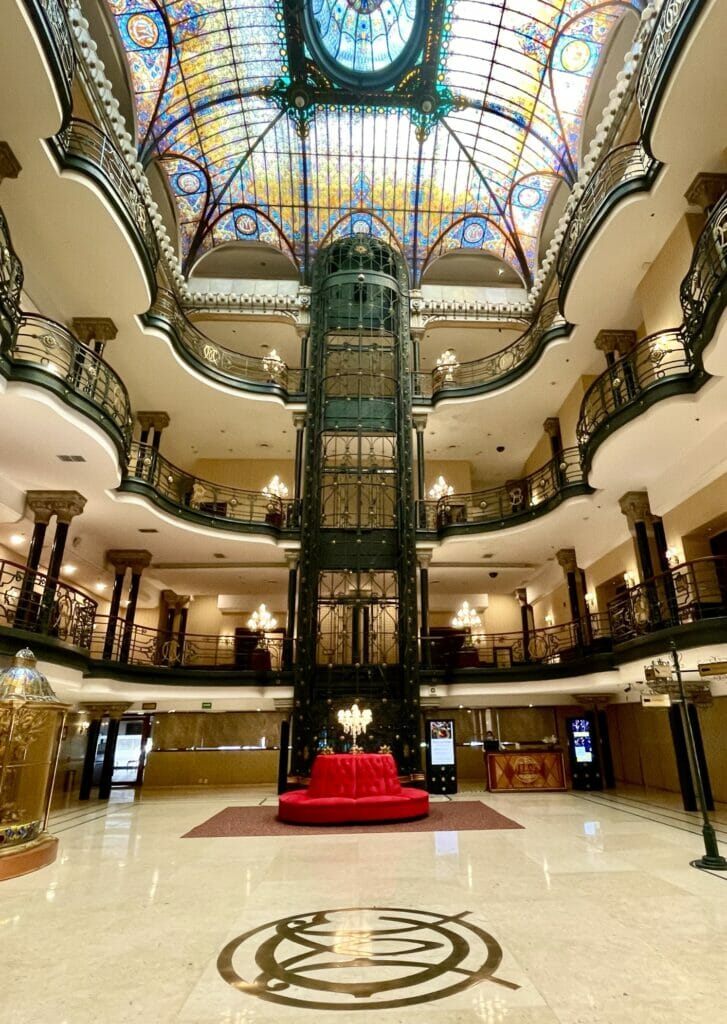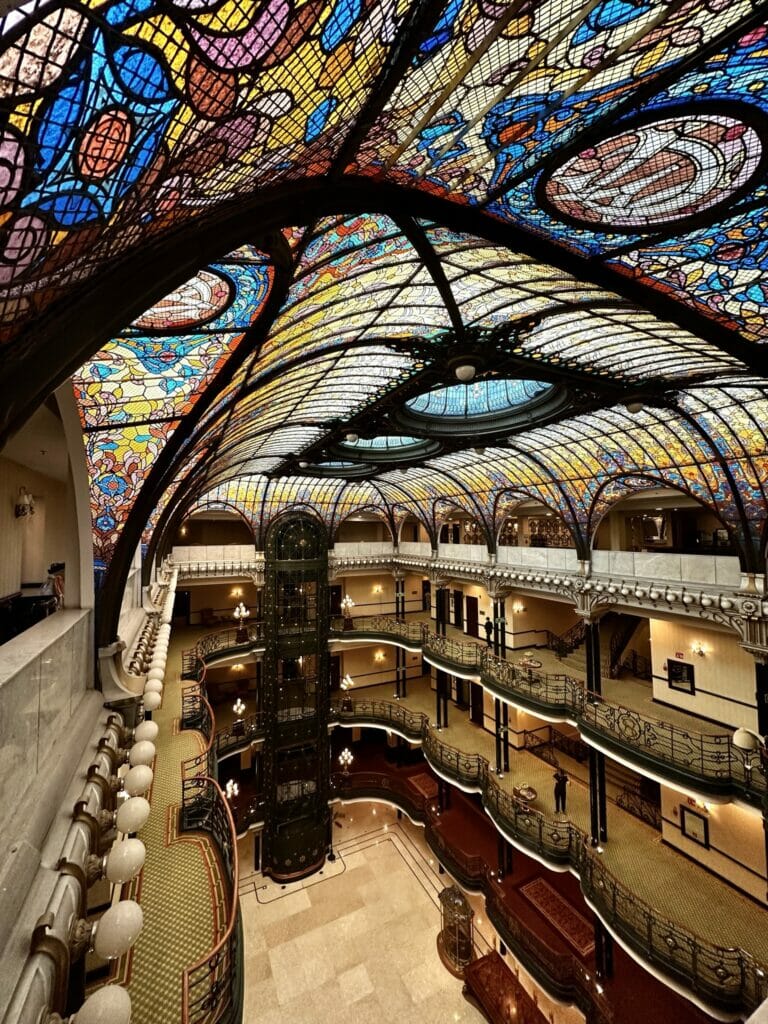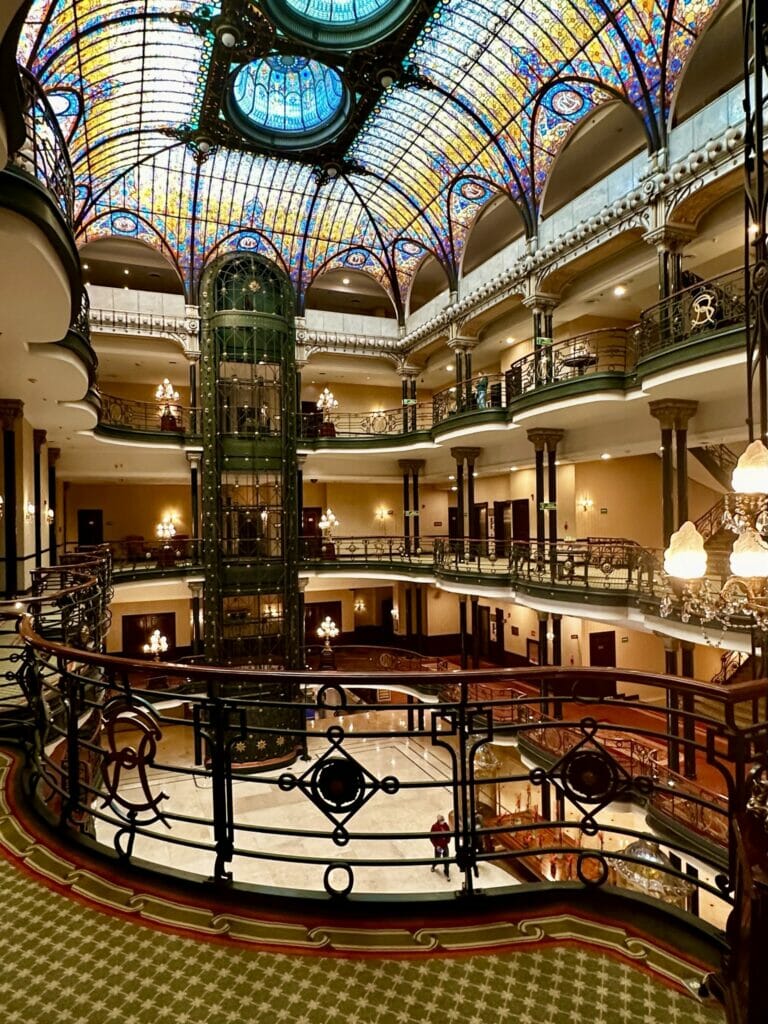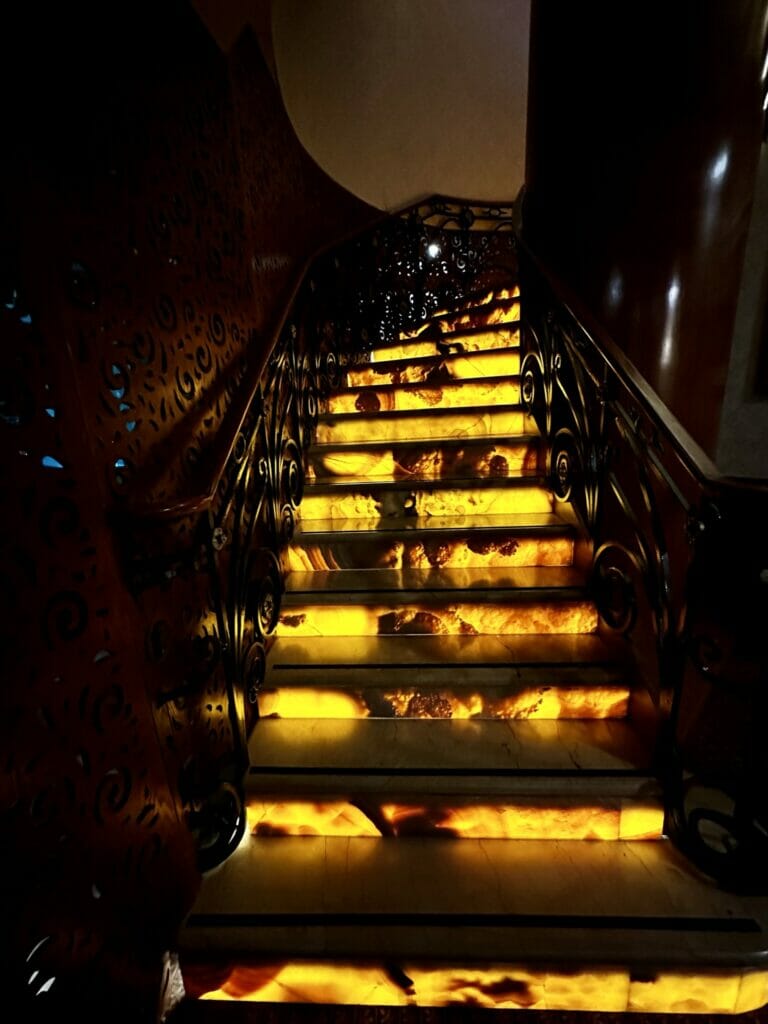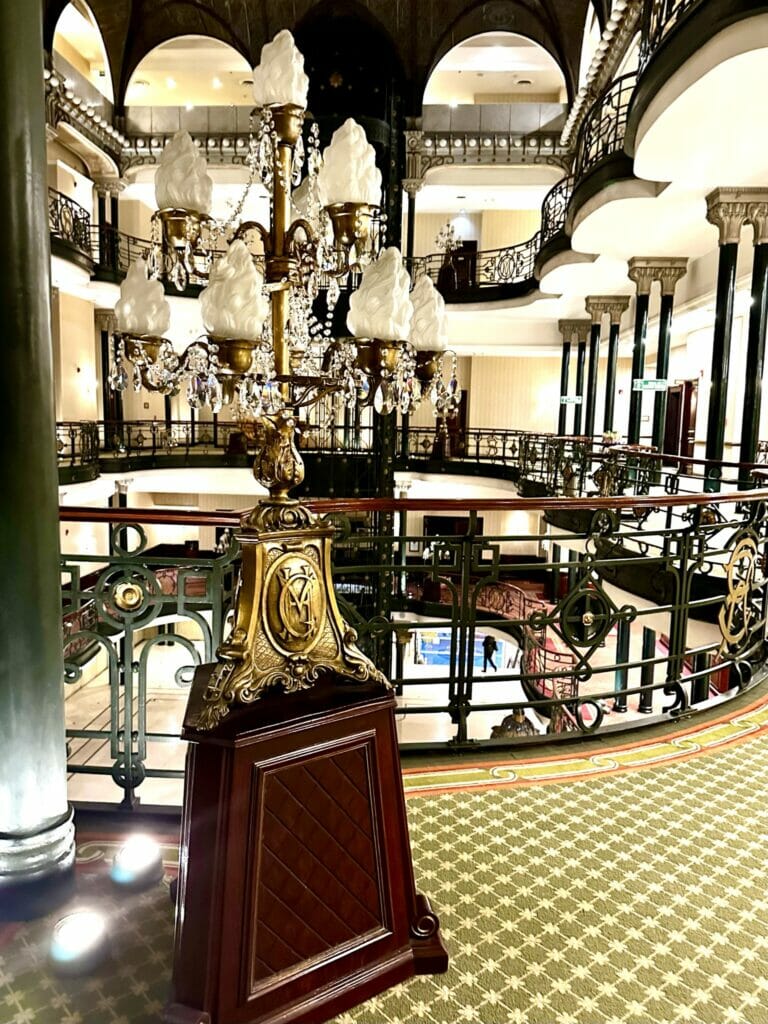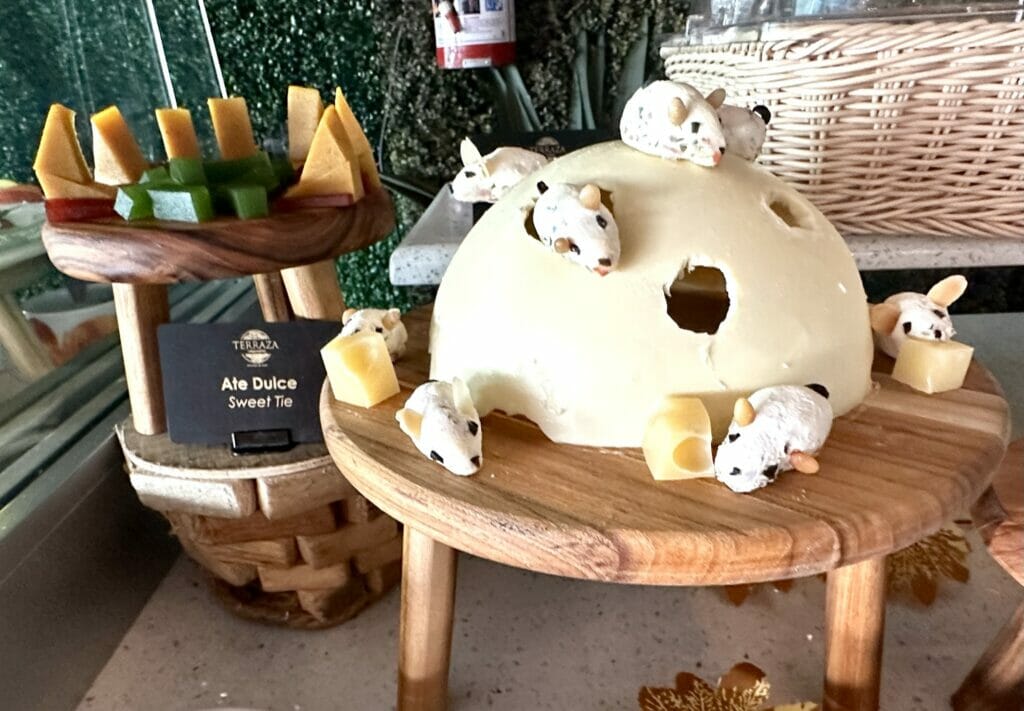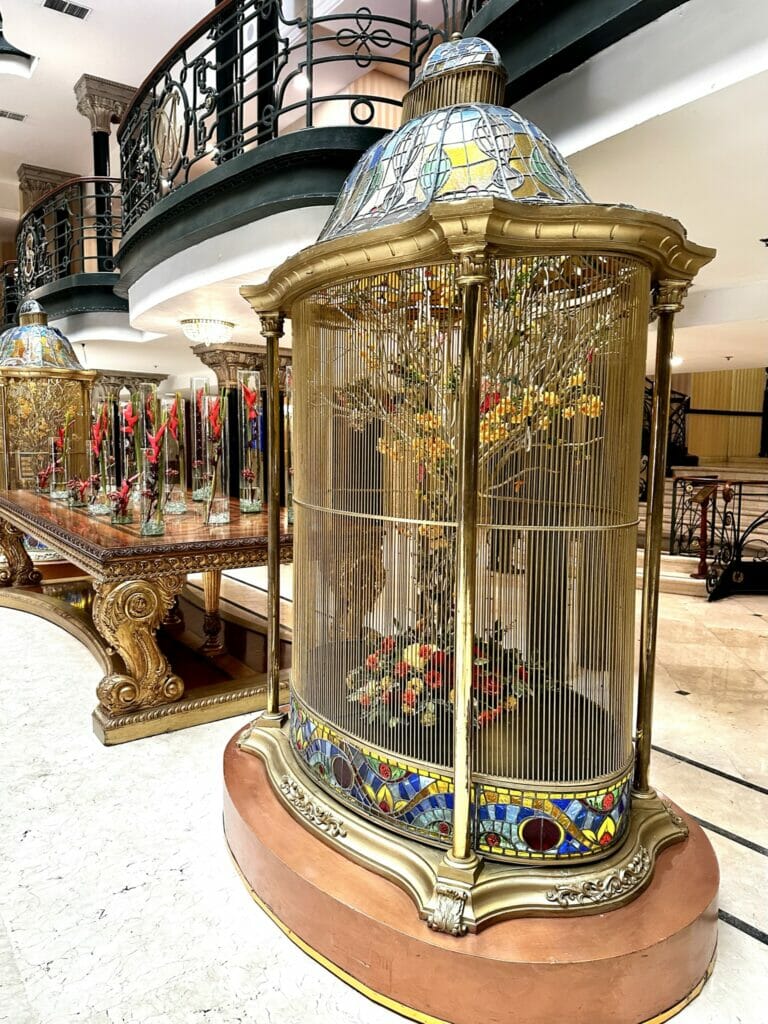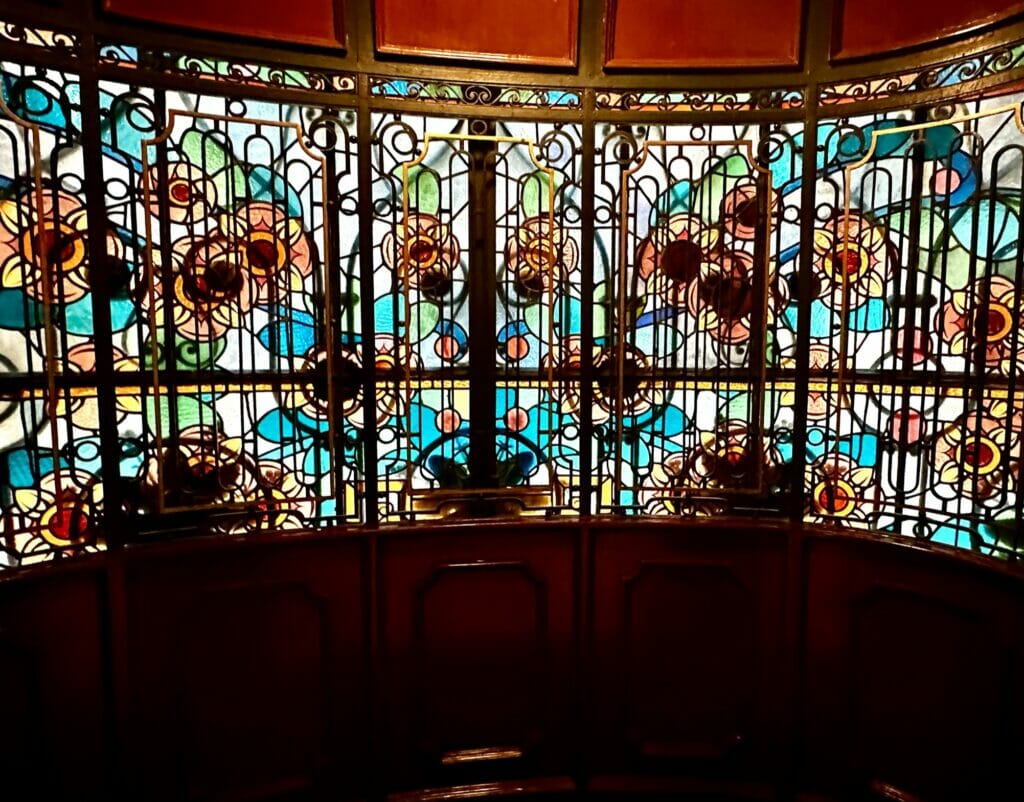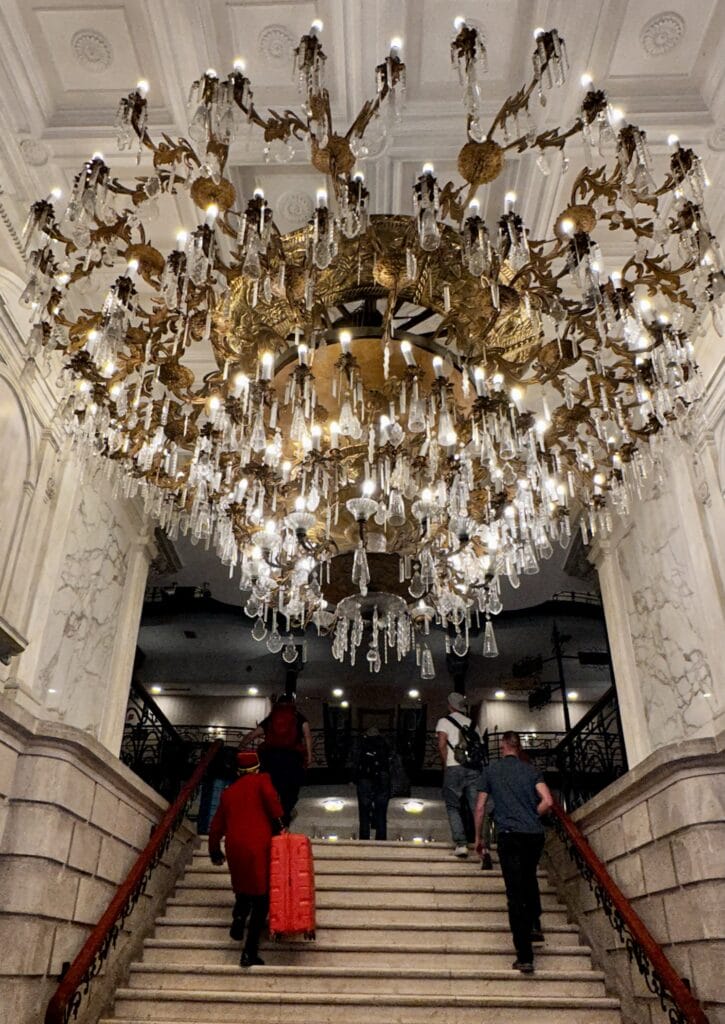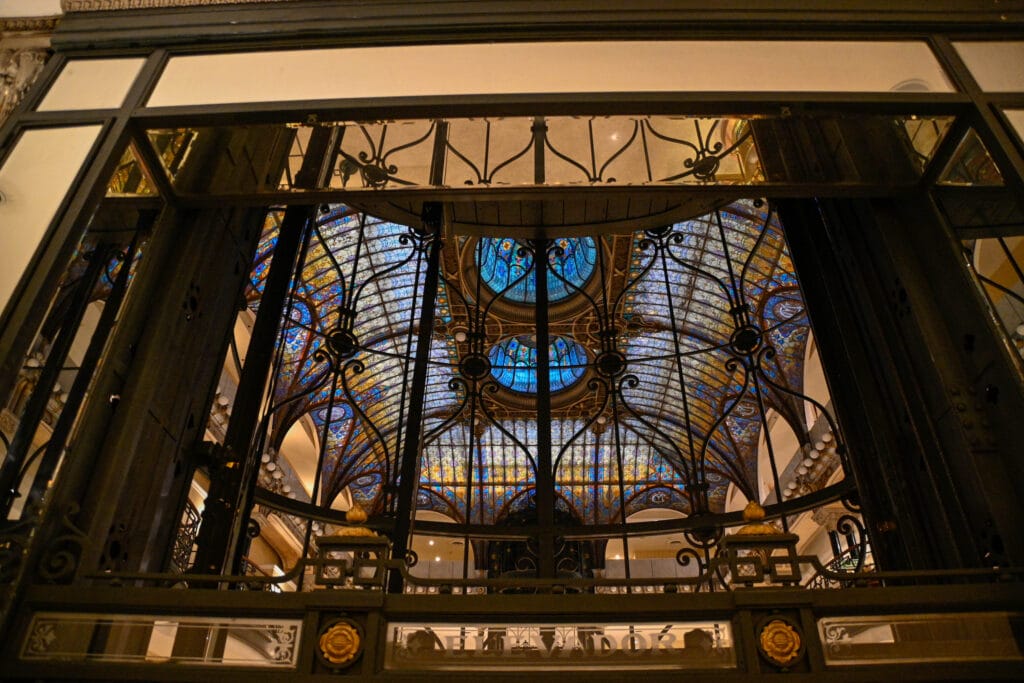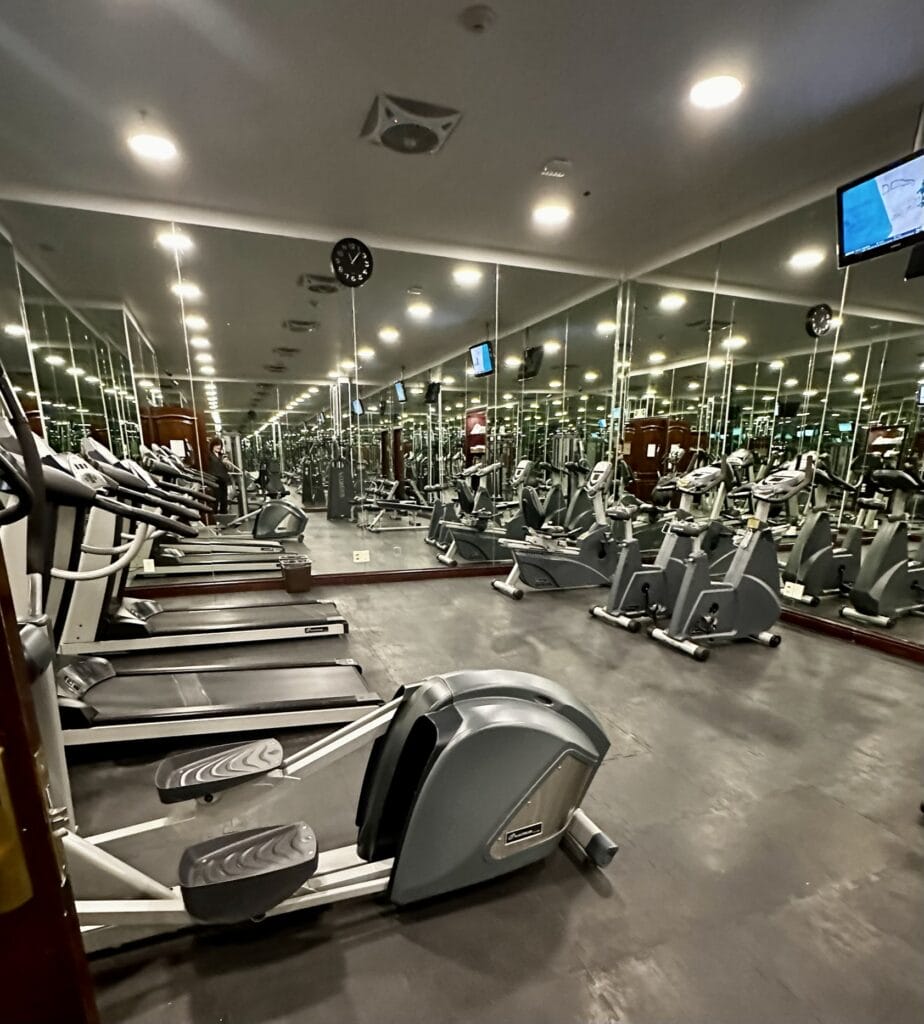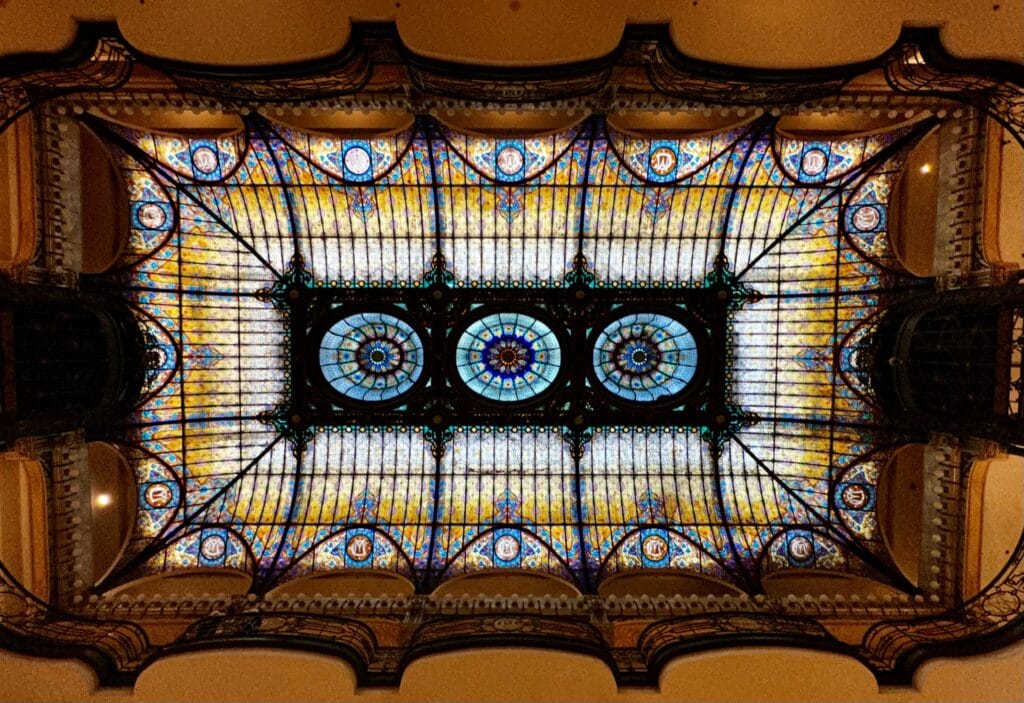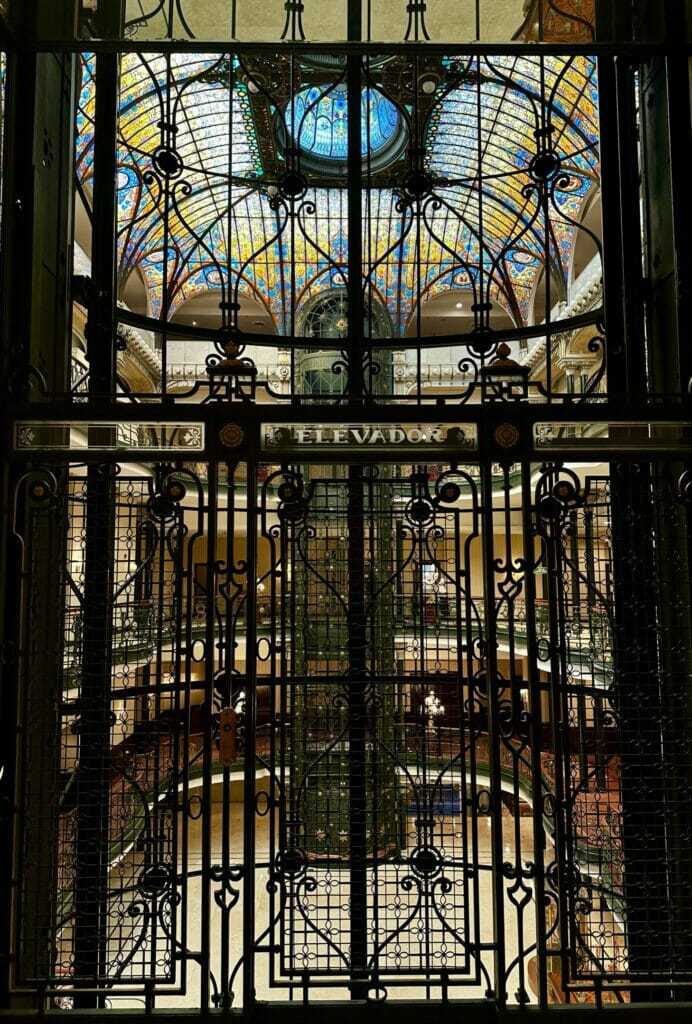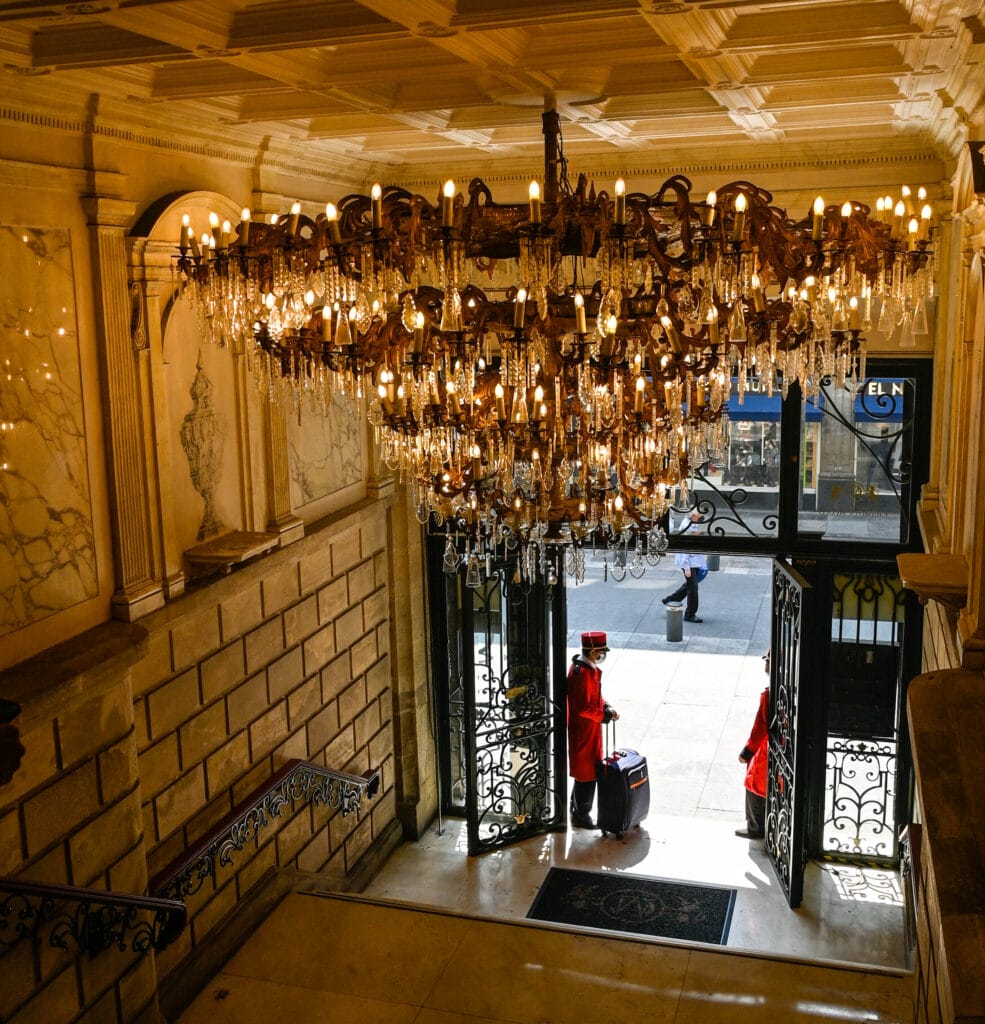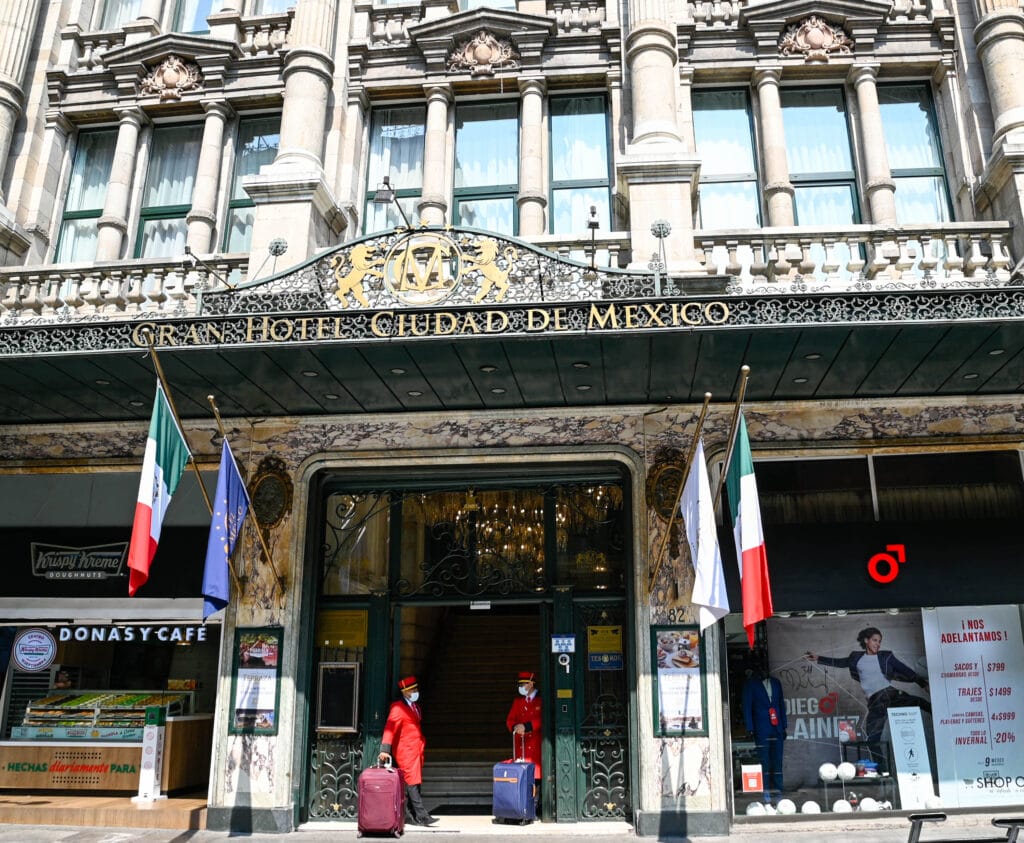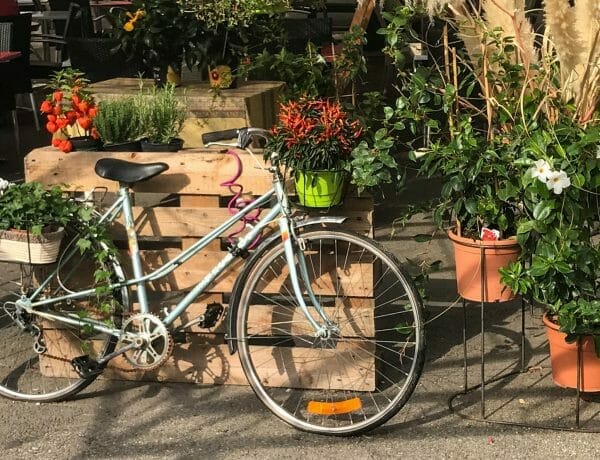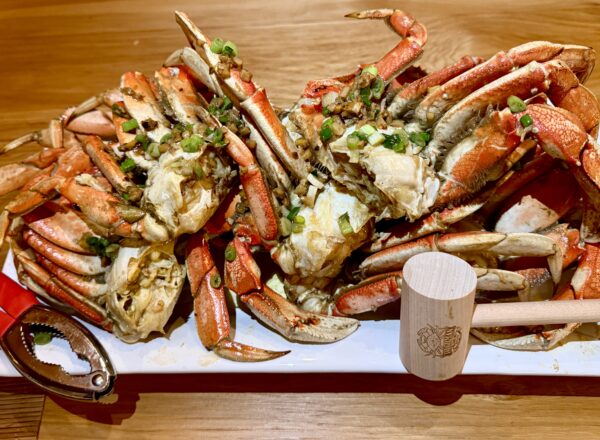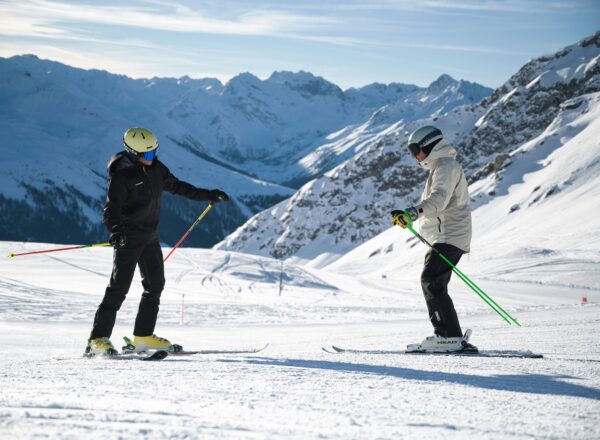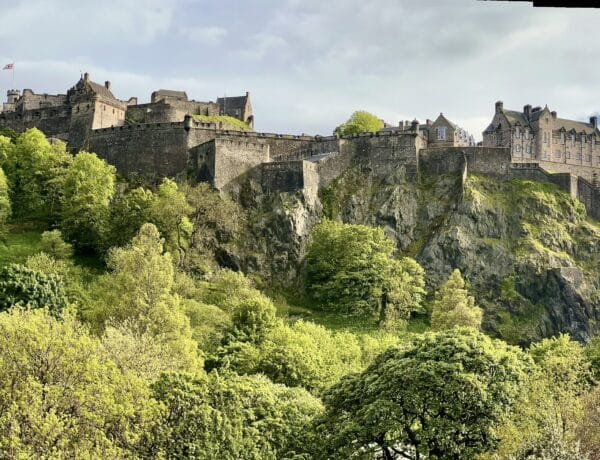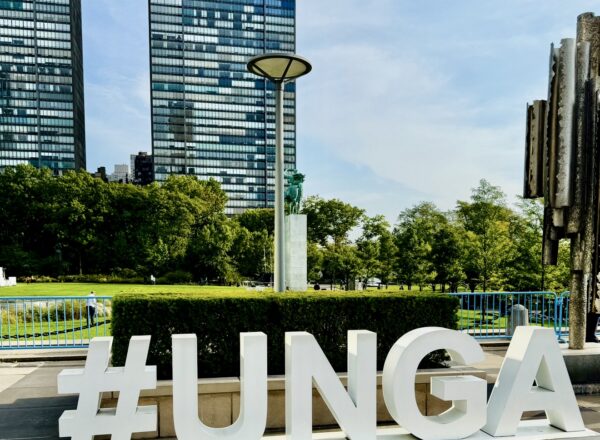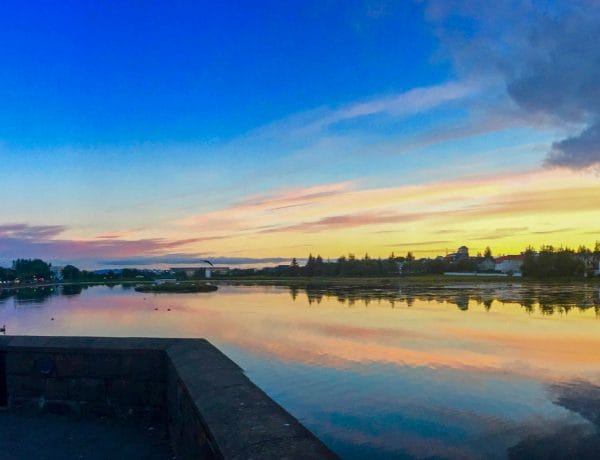Explore with us Mexico City, the cultural, political, and economic capital of Mexico.
“The truth is that the history of Mexico is a history in the image of its geography: abrupt and tortuous. Each historical period is like a plateau surrounded by tall mountains and separated from the other plateaus by precipices and divides.”
Octavio Paz
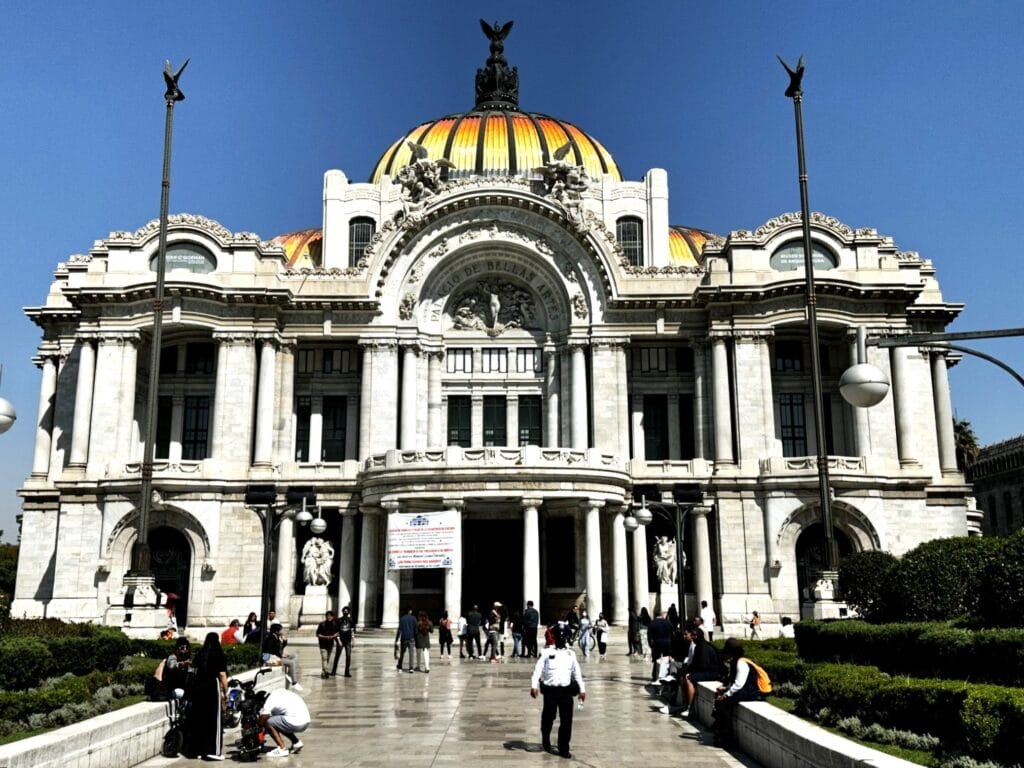
While planning our third trip in 2022, we knew we could only be away for five days. With limited time, we needed a destination reachable by a nonstop flight from Washington, DC, to make the most of our short escape. Around that time, several family members and friends had just returned from Mexico City and couldn’t stop raving about their experience. Surprisingly, it had never been on our radar until then. What sold us was that we had always wanted to see pyramids, and since it was only a four-hour flight, we felt it was our best option. It was super budget-friendly, too.
There was no doubt that we would enjoy ourselves, but we were not expecting to fall so in love with Mexico City. We had received some dire safety warnings from others before our departure, but we soon discovered that those warnings could not have been further from the truth. This magnificent modern metropolitan city, with its cosmopolitan vibe, is one of the safest, cleanest, and most fascinating cities we have ever visited. One that deserved more than five days to explore, but we made every precious moment count. It simply blew us away.
Explore with us the wonders of Mexico City.
A bit about Mexico City

Mexico City is one of the world’s most important cultural and financial centers, as well as one of the wealthiest cities. Mexico’s capital is the largest city in North America by population. The population of Mexico City is approximately 9.2 million, with a density of about 9,900 people per square mile. The great Mexico City area has 21.8 million inhabitants, making it the sixth-largest metropolitan area in the world. It is an Alpha-level city because it is a major economic region highly integrated into the world economy. Once you arrive in this modern cosmopolitan city with skyscrapers and stunning architecture, it begins to make sense.
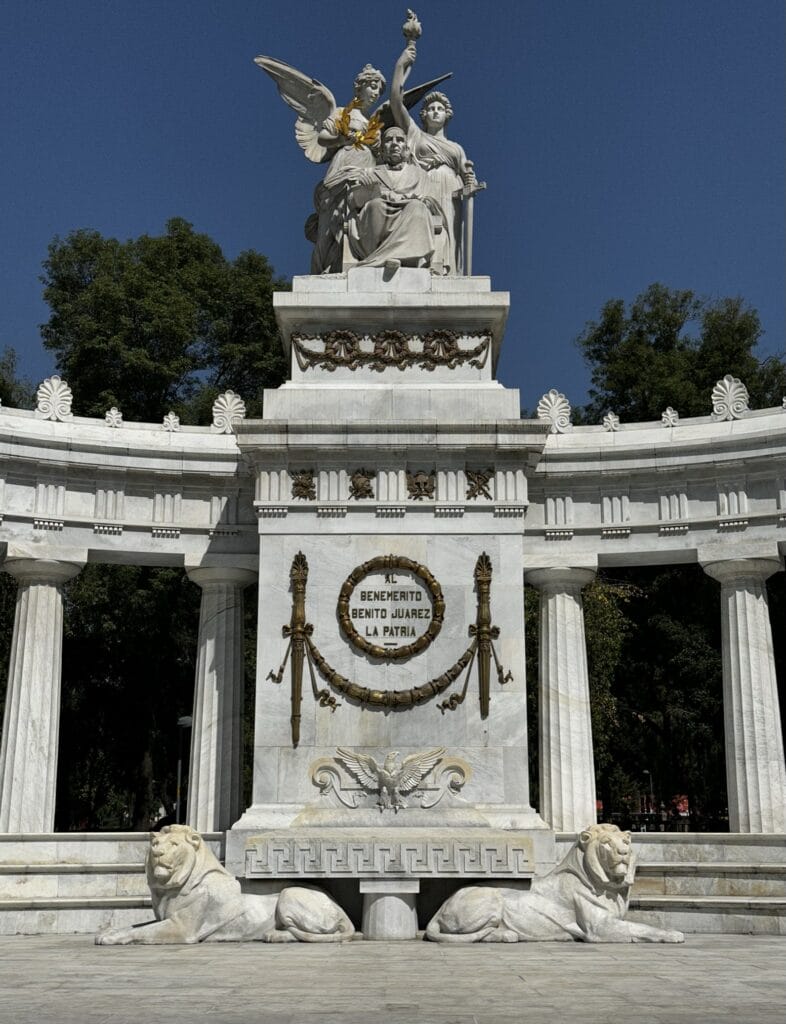
Mexico’s capital is the oldest in the Americas and one of the two founded by indigenous people. The city was built on a group of islands in Lake Texcoco by the Mexica (Aztecs) around 1325, known as Tenochtitlan. The Spaniards almost destroyed it in the 1521 Siege of Tenochtitlan. This led to the Aztec civilization’s downfall, which had high mortality due to smallpox. The redesign of the city was done according to Spanish standards. In 1524, the municipality of Mexico City was established, known as México Tenochtitlán, and as of 1585, it was officially known as Ciudad de México (Mexico City). Mexico City was the political, administrative, and financial center of a significant part of the Spanish colonial empire. The Spaniards kept residence here for centuries until independence from Spain in 1821.
Modern times
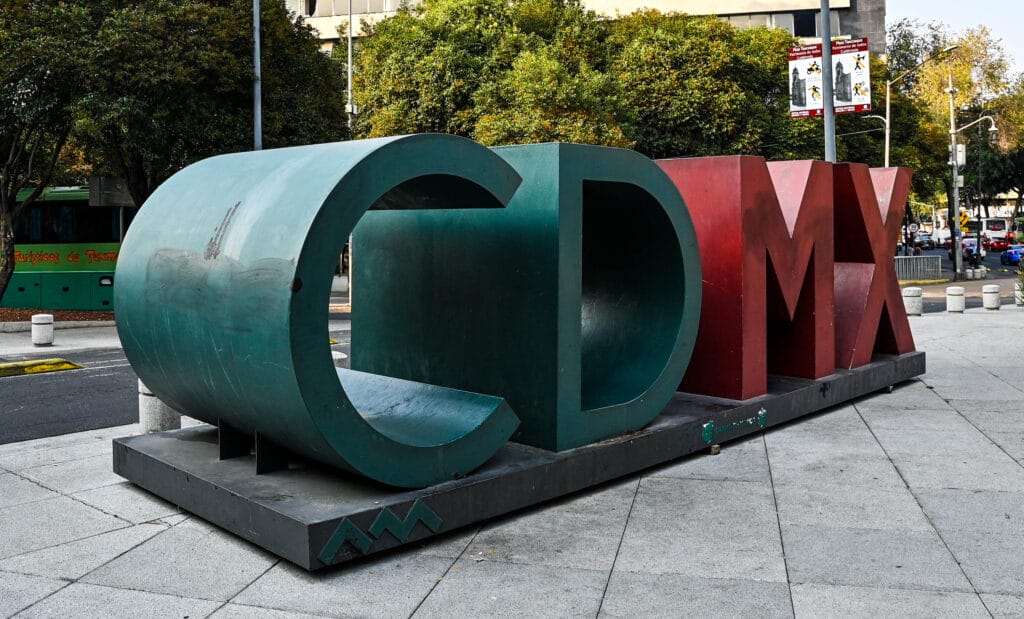
After years of demanding greater political autonomy, they elected a head of government and legislative representatives in 1997. The city has several progressive policies that differ from those of other parts of Mexico, such as elective abortions, some forms of euthanasia, no-fault divorce, and same-sex marriage. On 29 January 2016, Mexico City officially became known as Ciudad de México (CDMX), gaining a degree of autonomy. It is the seat of power in the country.
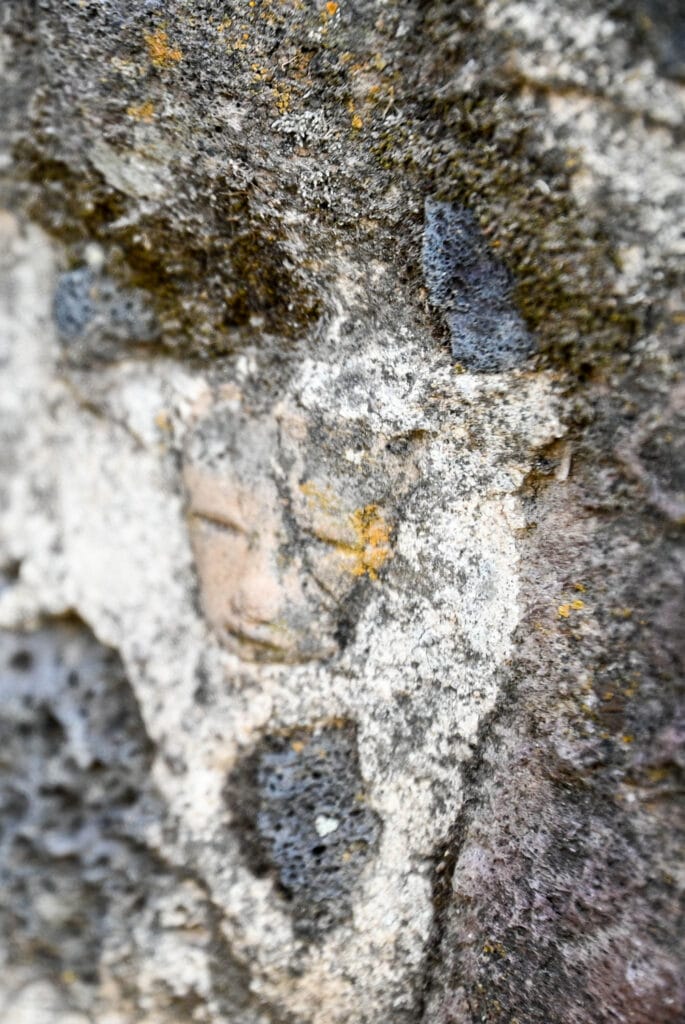
Origin of humans in the area
The oldest signs of human occupation in Mexico City are those of the “Peñón woman” and others. In 2003, a study placed the age of the Peñon woman at 12,700 years old, making her one of the oldest human remains discovered in the Americas. Studies of her DNA suggest the woman was either of Asian, European, or Aboriginal Australian origin.
Mexico City’s geography and environment
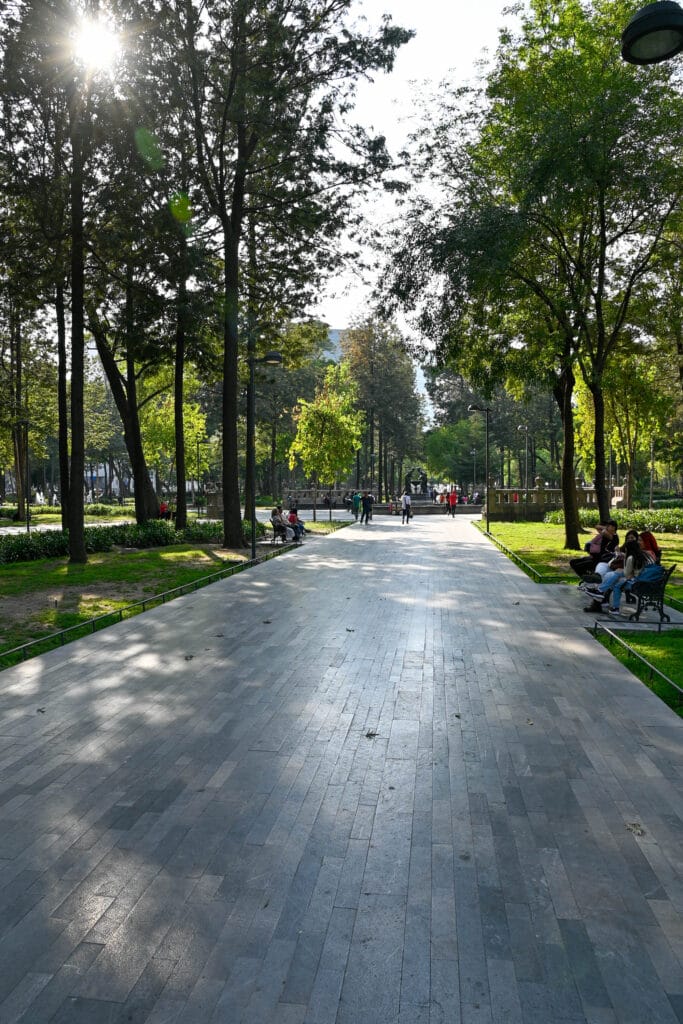
Mexico City is situated in the Valley of Mexico, also known as the Basin of Mexico, nestled within the Trans-Mexican Volcanic Belt in south-central Mexico. At an impressive altitude of 7,200 feet above sea level, the city is surrounded by mountains and volcanoes that soar to heights exceeding 16,000 feet. Interestingly, much of the city rests on the former Lake Texcoco, which began to be drained in the 17th century to prevent flooding. Due to its geological setting, seismic activity is common in the area, adding another layer to the city’s dynamic environment.
Initially, much of the valley lay beneath the waters of Lake Texcoco, a system of interconnected salt and freshwater lakes. When the Aztecs inhabited the area, they built dikes to separate the freshwater used to raise crops and prevent recurrent floods. This valley has no natural drainage outlet for the waters that flow from the mountainsides, making the city vulnerable to flooding. These dikes were destroyed during the siege of Tenochtitlan.
Map of Mexico City
Did you know parts of Mexico City are sinking?
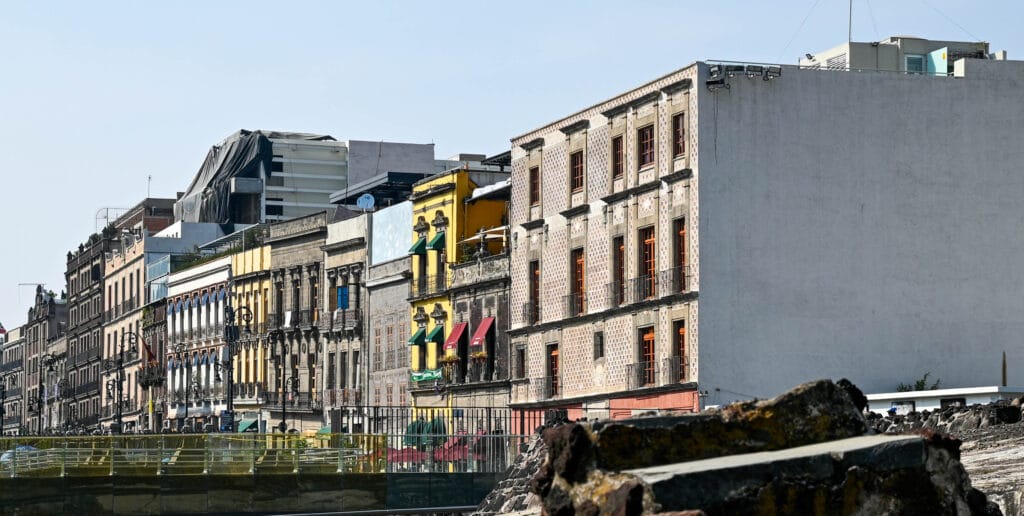
Once the Spaniards took over during colonial times, they regularly drained the lake to prevent floods. Although none of the lake waters remain, the city rests on the lake bed’s heavily saturated clay. This soft base is collapsing due to the over-extraction of groundwater.
Since the beginning of the 20th century, the city has sunk as much as nine meters (30 feet) in some areas. On average, Mexico City sinks 20 inches every year. This sinking is causing problems with runoff and wastewater management, leading to flooding problems. The entire lake bed is now paved over, and most of the city’s remaining forested areas lie in the southern boroughs.
Architects, with a group of Mexican urbanists, engineers, and biologists, have developed the Recovering the City of Lakes project plan. If the government approves, the project will contribute to the water supply from natural sources to the Valley of Mexico, create new natural spaces, and improve air quality.
It is striking when you see these sinking structures. Continuous efforts are occurring to save these buildings. We visited a church where the backside was collapsing. A rope kept people from entering, and the front half still had services. Many structures are cordoned off and haven’t been touched in decades. So, when you hear ‘Mexico City,’ it is no joke. They are working hard to fix what they can, but it is expensive and time-consuming.
Modeled after great European cities
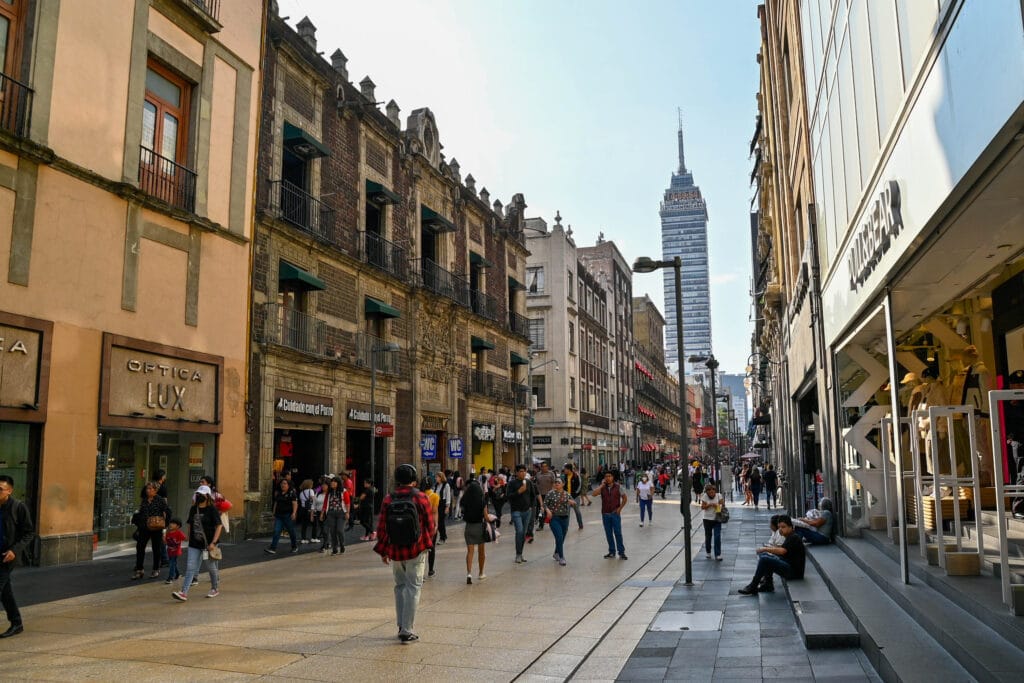
Mexico City has a distinct European feel, shaped largely by two influential rulers: Emperor Maximilian and President Porfirio Díaz (the Porfirian era, 1876–1911). Both leaders sought to modernize the city by modeling it after major European capitals. The most iconic symbol of this influence is the golden Angel of Independence, which stands proudly on the elegant Paseo de la Reforma, a grand avenue commissioned by Emperor Maximilian and inspired by the Champs-Élysées in Paris.
During Porfirio Díaz’s rule, the city underwent a sweeping transformation. Many Spanish Colonial-style buildings were torn down and replaced with larger Porfirian institutions reflecting European architectural styles. His modernization efforts extended beyond the city center into rural outskirts, turning them into urban or industrialized districts. By 1908, most of these areas were equipped with electricity, gas, and sewage systems.
Early modernization efforts focused on building hospitals, schools, factories, and key public infrastructure. Notably, the Colonia Roma neighborhood and the continued development of Reforma Avenue became hallmarks of this Porfirian vision, blending European aesthetics with Mexico’s evolving urban identity. Many of Mexico City’s major attractions and landmarks were built during this era in this style.
What about all the bad stuff you hear about Mexico City?
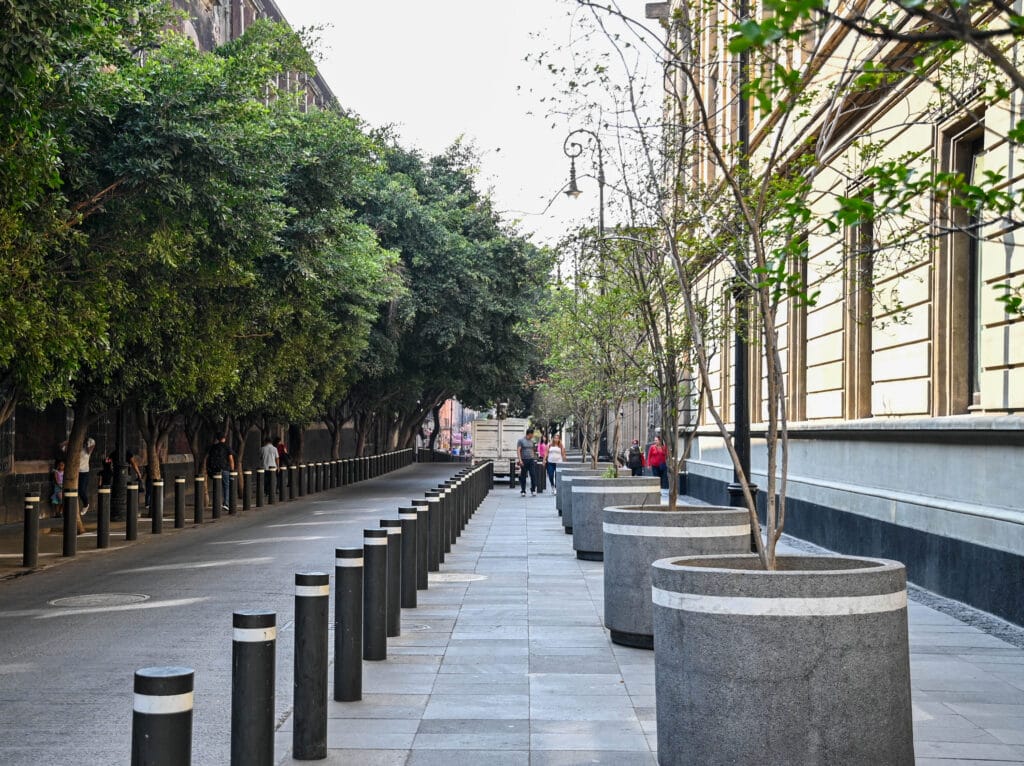
Several of our family and friends voiced concerns before our trip. They advised us not to leave our hotel, avoid walking around at night, and warned against eating the local food. Like many countries around the world, Mexico faces a number of challenges. The headlines often highlight issues such as drug cartels, political instability, police corruption, the mistreatment of indigenous communities, crime, pollution, and undrinkable tap water. These concerns are real, and certain areas of the country can indeed be dangerous. However, as with any destination, much depends on where you go, how you travel, and the choices you make while visiting. Whenever we travel, we review U.S. State Department warnings. Currently (December 2022), for Mexico City in the United States.
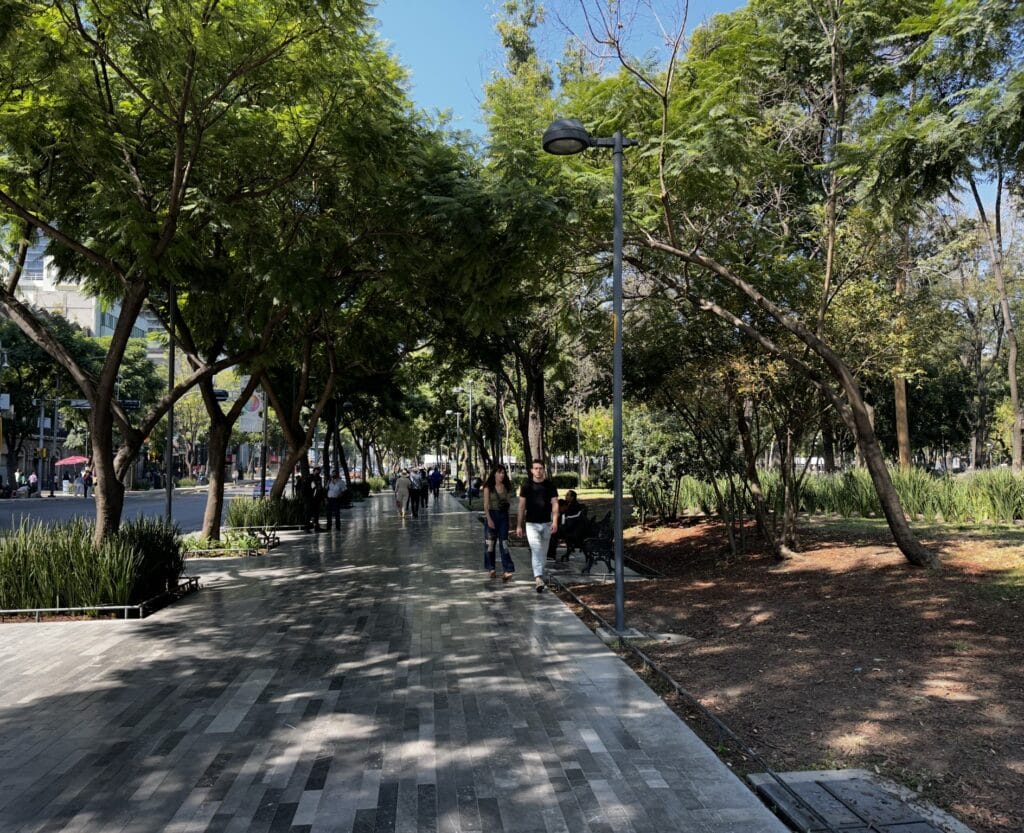
“Exercise increased caution due to crime.
Both violent and non-violent crimes occur throughout Mexico State. Use additional caution in areas outside frequented tourist areas, as petty crime is also common in these areas.
There are no restrictions on travel for U.S. government employees in Mexico State.”
That can be a warning in any city in the U.S.
Our Mexico City Visit Details
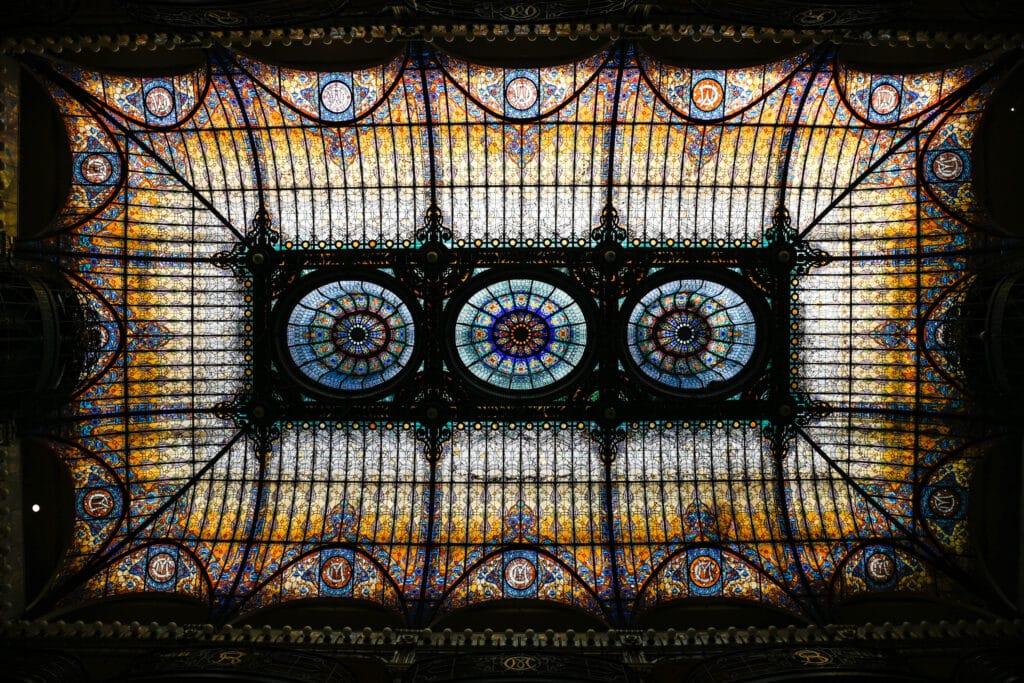
Mexico City, 5 nights in early November 2022
It was our first visit to Mexico City, and Ryan’s first visit to Mexico
Accommodations
Gran Hotel Ciudad de México
(Free with Chase Reward Points)
The hotel is located in the Historic District on Zocalo Square
How we get around
We walked 30 miles in the four full days we were there
When we needed to get places, we used Uber exclusively, and sometimes the wait was long.
Pre-purchased tickets/events:
Teotihuacan Pyramids (excellent private tour with Tepkan Tours booked via Tripadvisor)
Food tour
Mezcal Tour
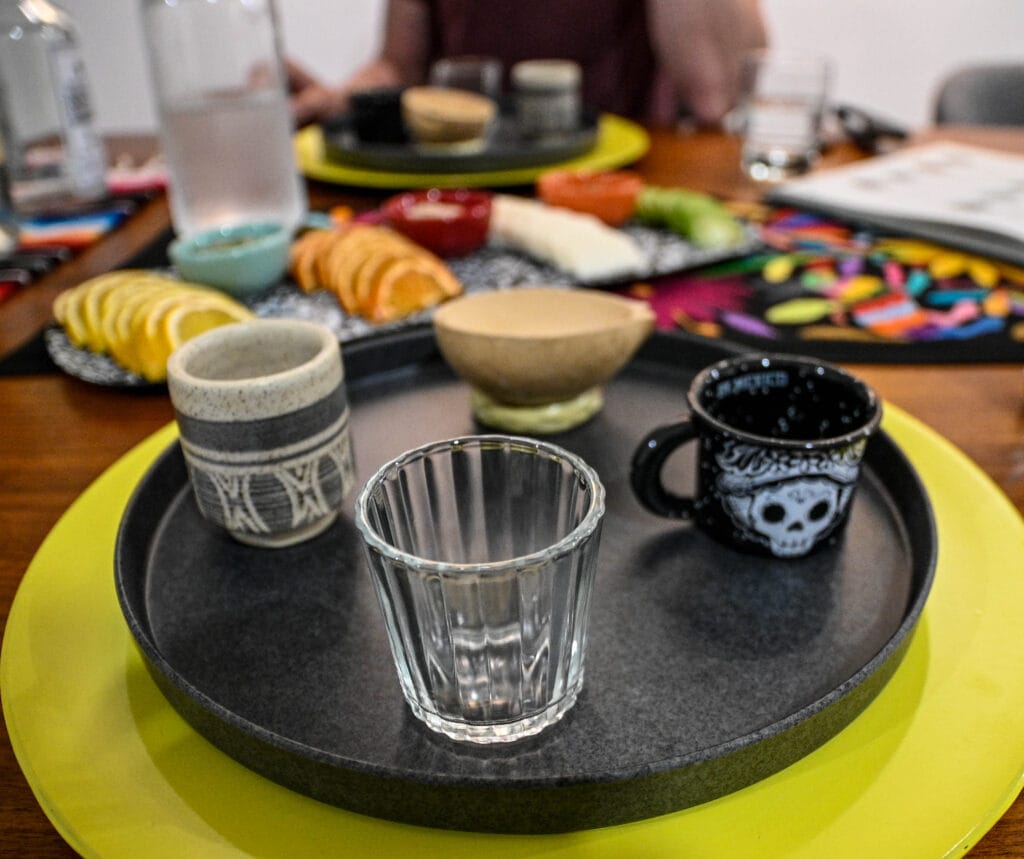
The weather was sunny, with temperatures averaging in the 70s. There was no humidity. It was perfect!
Top Tourism Destination
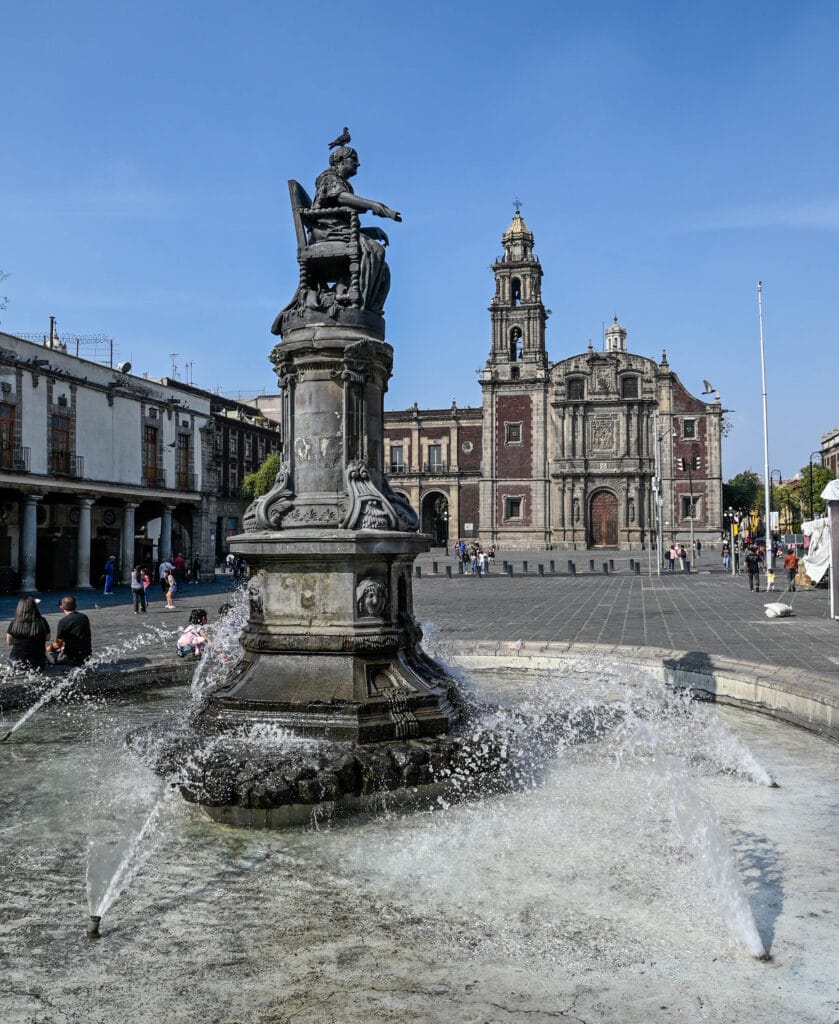
Mexico City is a destination for many foreign tourists. In 2021, the city had 32 million international visitors, a number significantly lower than in previous years, as COVID-19 had kept many from traveling. The Historic Center of Mexico City and the “floating gardens” of Xochimilco in the city’s southern borough are both designated UNESCO World Heritage Sites. In the heart of the Historic Center, you’ll find some of the city’s most iconic landmarks, including Plaza de la Constitución (Zócalo Square), the expansive main square. Overlooking it are the grand Metropolitan Cathedral, a legacy of the Spanish colonial era, and the National Palace, which houses murals by Diego Rivera.
Perhaps most striking of all, tucked where you might least expect it on the square, are the ancient ruins of Templo Mayor, a sacred Aztec temple that offers a powerful reminder of the city’s deep pre-Hispanic roots. The Templo Mayor was discovered in 1978 while workers were digging to place underground electric cables.
The iconic Golden Angel of Independence stands proudly on the grand Paseo de la Reforma, one of Mexico City’s most important avenues. Originally designed in the 19th century, this wide boulevard was built over the Americas’ oldest major roadway to connect the National Palace, the seat of government, with Chapultepec Castle, the former imperial residence. Today, Paseo de la Reforma has evolved into a vital financial district, home to the Mexican Stock Exchange and numerous corporate headquarters, blending historic grandeur with modern economic power. Another important avenue is the Avenida de los Insurgentes, which extends 18 miles and is one of the longest single avenues in the world.
The Chapultepec Castle blew us away
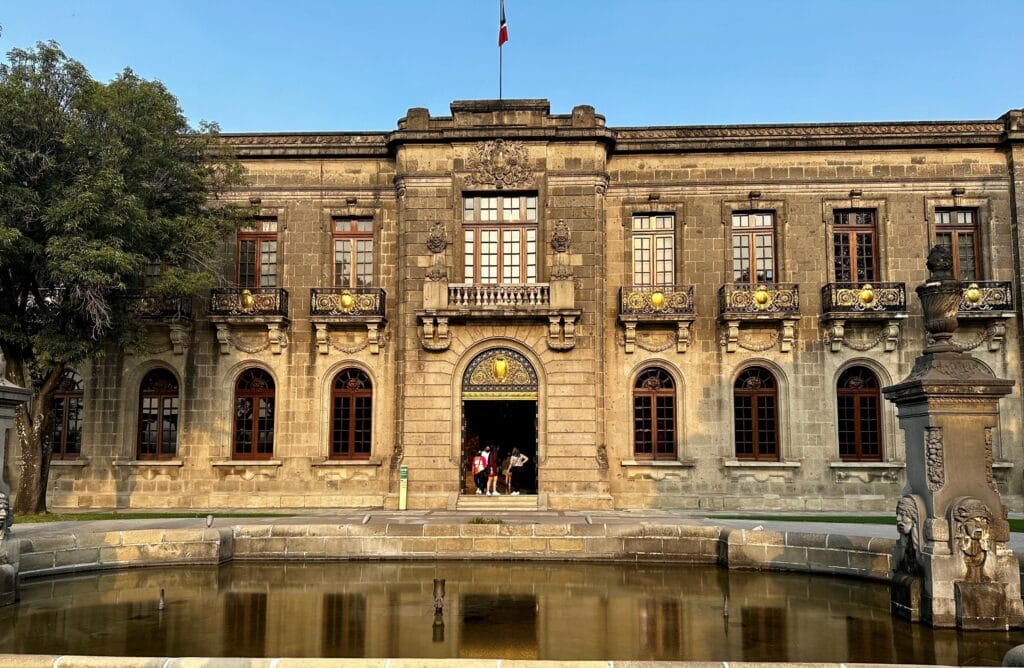
Chapultepec Park is home to Chapultepec Castle, now a museum situated on a hill that overlooks the park, as well as numerous museums, monuments, and the National Zoo, along with the National Museum of Anthropology, one of the world’s top museums. Another notable piece of architecture is the Palacio de Bellas Artes, a white marble theater/museum whose weight has caused it to sink into the soft ground below gradually. Its construction began during the presidency of Porfirio Díaz and ended in 1934, after being interrupted by the Mexican Revolution in the 1920s.
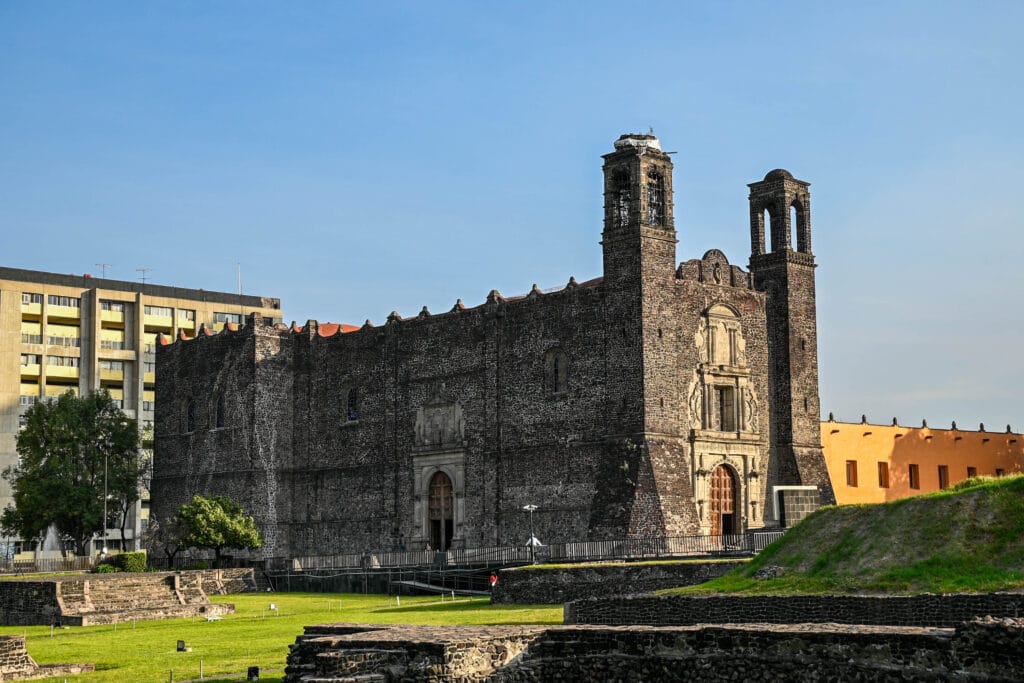
The Plaza de las Tres Culturas, designed by Mario Pani, is the main square within the Tlatelolco neighborhood of Mexico City. It is called “Three Cultures” in recognition of the three periods of Mexican history reflected in the structures of the plaza: pre-Columbian, Spanish colonial, and the independent nation of Mexico. Located near the square is the College of Santa Cruz de Tlatelolco, the first and oldest European school of higher learning in the Americas, and the archeological site of the city-state of Tlatelolco, and the shrine and Basilica of Our Lady of Guadalupe are also important sites. At this site, a monument memorializes one of the darkest days of modern Mexico City’s history, the 1968 Tlatelolco Massacre.
A double-decker bus, known as the “Turibus,” circles most of these sites and has timed audio describing the sites in multiple languages as they are passed.
Fun Fact
There are over 180 museums, the second highest in the world after London.
Our Observations
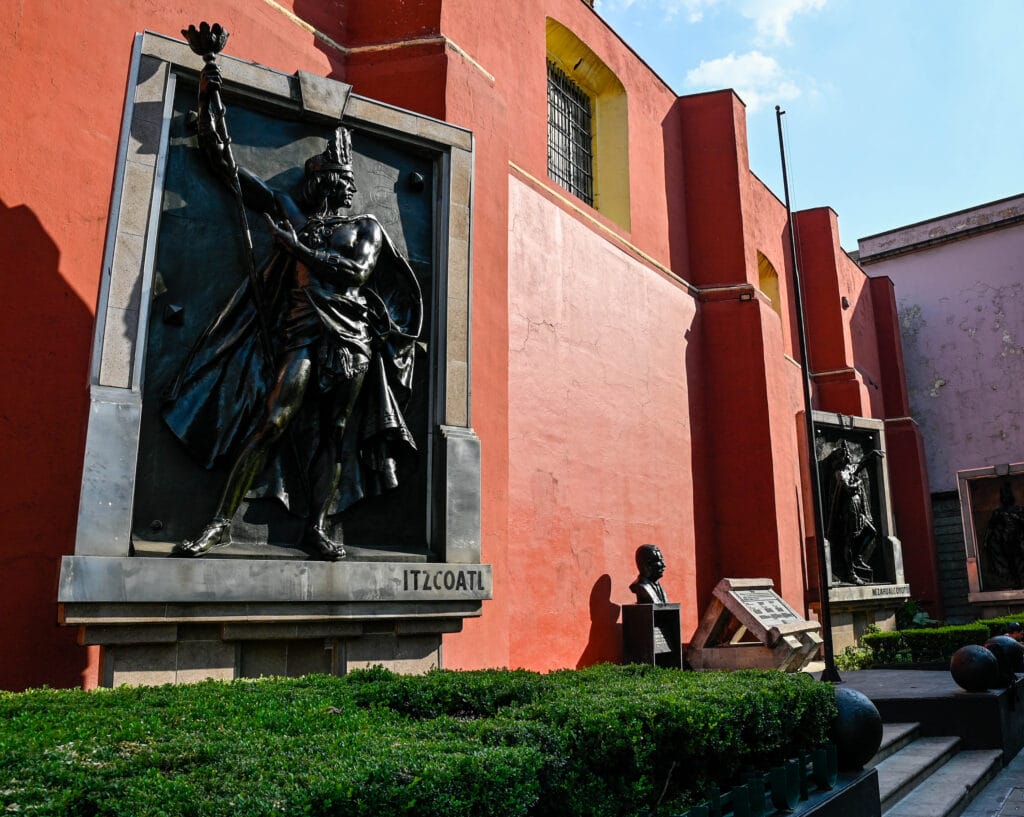
From the moment we arrived, Mexico City captivated and intrigued us. It is a modern, cosmopolitan metropolis filled with striking contrasts, soaring skyscrapers, architecturally stunning buildings, and lush, tree-filled city parks. Wandering through elegant neighborhoods like Roma Norte, we were struck by the charm and vibrancy of daily life. The city boasts grand monuments, a magnificent castle, and countless historical sites that reveal its rich past at every turn.
Along its wide boulevards, many lined with marble sidewalks, we found world-class museums, some considered among the best in the world, alongside upscale shopping, fine dining, and a vibrant nightlife scene pulsing with culture and creativity. What stood out most, though, were the hardworking, welcoming people who brought the city’s energy to life. In every way, Mexico City rivals some of the world’s most iconic capitals.
The first thing that struck us as we drove from the airport was how clean the city was, in a mind-blowing way. It was crazy at times; in the city parks, workers swept leaves every 100 feet or so as they fell from the trees. The city has cleaners working 24 hours a day. We would see sidewalks pressure-washed late into the night.
How safe we felt
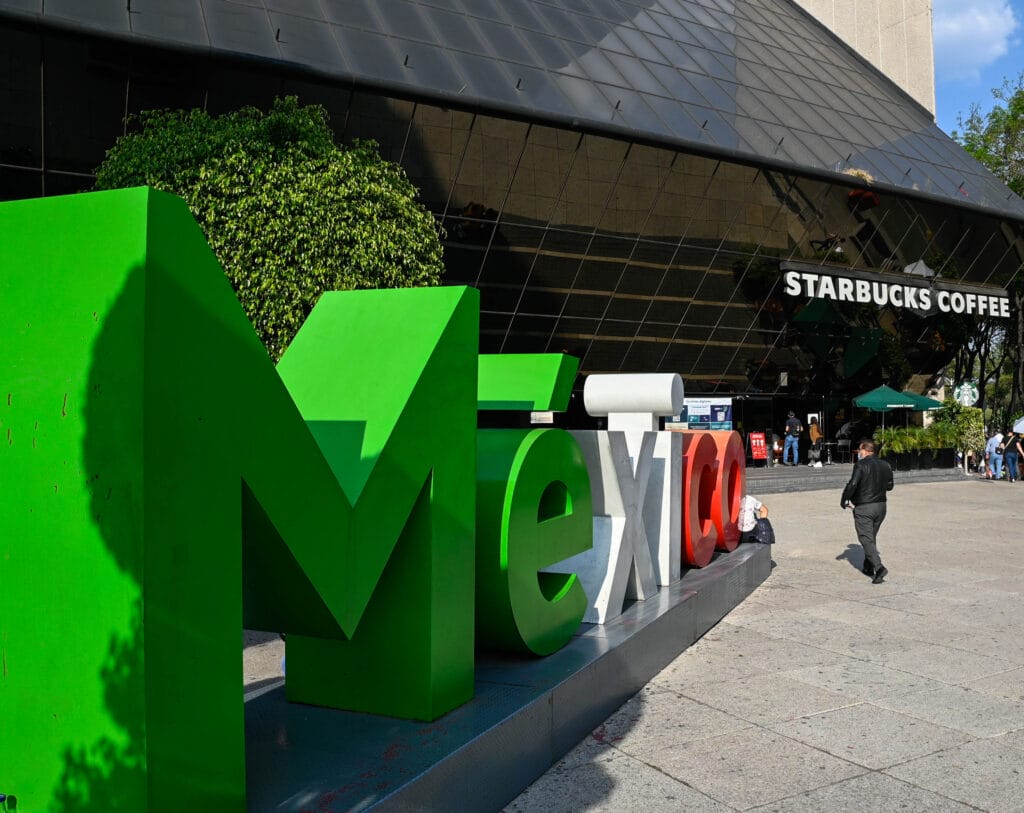
The second thing that surprised me was how safe we felt everywhere. Despite dire warnings of danger from family and friends, we never once felt unsafe. On a level similar to what we did during a recent visit to Switzerland. We visited many districts throughout Mexico City, as well as at the city’s edges. We never felt concerned for our safety, even late into the evening. It feels safe due to the massive police presence in Mexico City. There are many different kinds of police and some military, too. The city has over 90,000 officers alone on the Police force (NYC reportedly has 35,000). Most shops and restaurants also have security personnel. Locals told us this was mainly to deter the “narcos.” As in any city, always be street-wise, take precautions, and always know your surroundings.
The lighting around the city is excellent, and some poles separate pedestrians and passing cars. Speed bumps everywhere keep speeds down. Many boulevards and wide sidewalks are made of marble. People were kind and never pushy, even when the streets were full of people.
The top 18 things to do in Mexico City
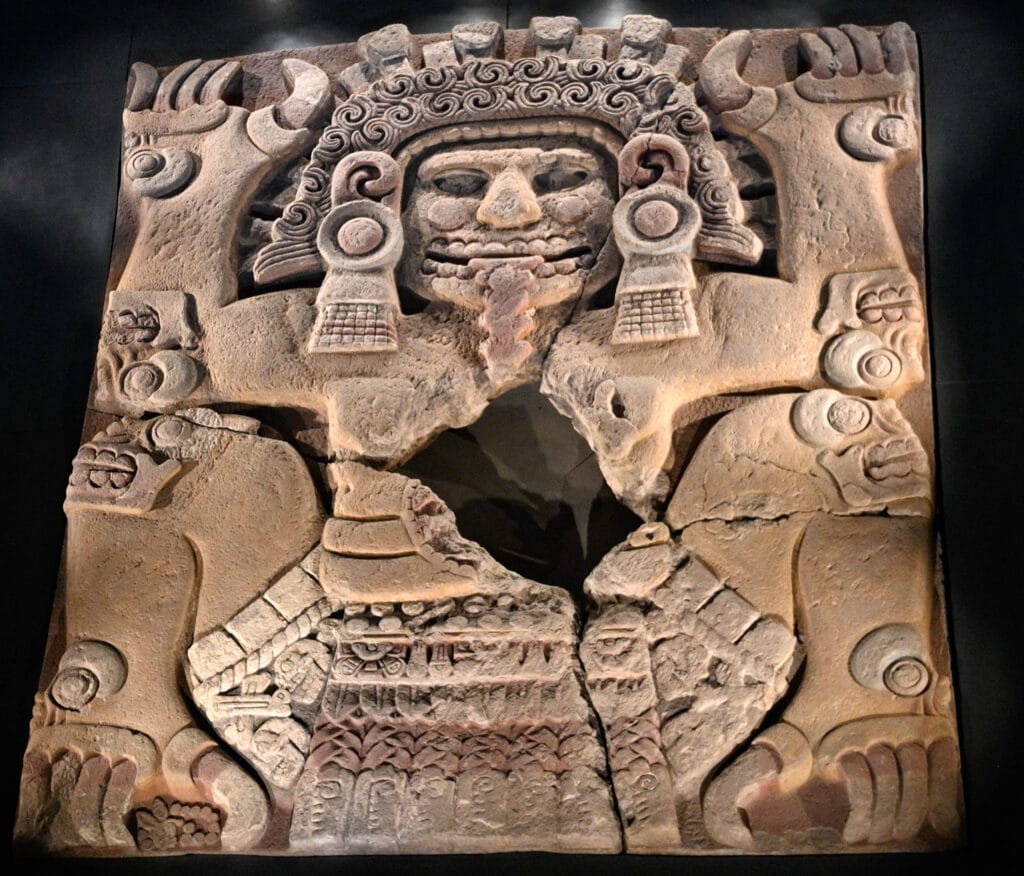
- Zócalo (Plaza de la Constitución): El Zócalo is the central public square where the National Palace and Metropolitan Cathedral reside, and is one of the most recognizable sites in Mexico City. A giant Mexican flag is at its center and has been the centerpiece of public gatherings since the Aztecs. It is often a place for significant events, and the baseball finals occurred when we were there.
- National Palace: The Palace is home to the President of the Mexican government and sits along Mexico City’s Zócalo Square. The palace is a massive, ornate building with several gardens, murals, and fountains. Its highlights include the Diego Rivera murals, painted in a panoramic style across the palace’s walls, which are a must-see. These murals depict the stages of Mexican history, from pre-Columbian days to the current age.
- Mexico City Metropolitan Cathedral: Mexico’s national cathedral is an imposing and impressive ornate church on Zócalo’s Square. It was once an ancient sacred Aztec site, which has housed the city’s spiritual heart for centuries. The cathedral was built between 1573 and 1813 after the Spanish conquest. It is one of Mexico City’s many must-see attractions. Highlights of the cathedral include five naves, 14 chapels, underground catacombs, and a painting by famed Spanish artist Bartolome Esteban Murillo.
- Templo Mayor Museum: Before Spanish colonization, Templo Mayor served as the religious center for the Aztec people. When Spanish conquistadors arrived in the late 14th century, the temple was among many destroyed. In 1978, the temple was unearthed in the heart of Mexico City on Zocalo Square. The area remains an active archeological site, and the adjoining museum houses more than 7,000 artifacts. The museum is fascinating and very well done.
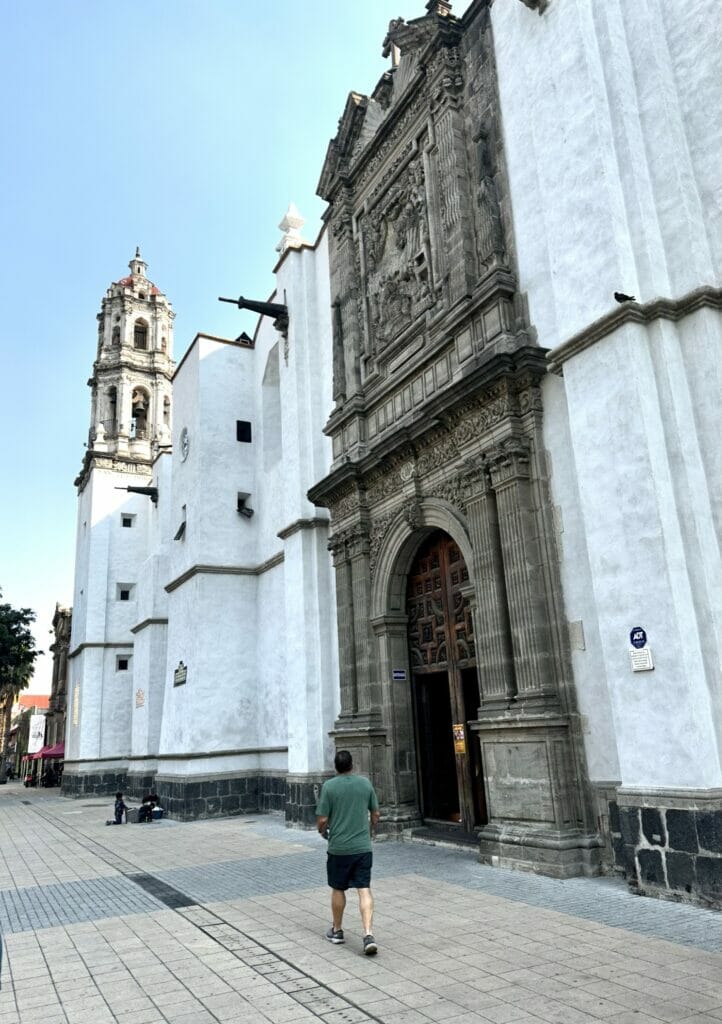
Historic Center
Centro Historico: Mexico City’s historic center is a UNESCO World Heritage site, a centuries-old city center, and an ancient agricultural area of canals and floating islands. Centro Historico is one of the city’s most vibrant neighborhoods. It was once the seat of the Aztec Empire, where you can visit Montezuma’s ancient temple. The district has many of the city’s most notable historic buildings. It is also a sinking part of Mexico City.
Palacio de Bellas Artes: Considered the cultural center of Mexico City, the Palacio is a must-visit. The palace’s exterior showcases Art Nouveau and Art Deco-style architecture, while the inside features marble floors and vaulted glass windows.
Bosque (Forest) de Chapultepec: This is the main park in Mexico City and encompasses 1600 acres. On the massive grounds, you will find museums, monuments, the National Zoo, and the National Museum of Anthropology. The grounds are beautiful and are a gathering place for city residents. There are endless food carts to feed the park’s many guests.
Chapultepec Castle: Located in the Bosque de Chapultepec, it is now a museum on a hill that overlooks the park and city. The part has numerous museums, monuments, the National Zoo, and the National Museum of Anthropology. The views here are stunning, and the castle is magnificent on every level, making it a joy to visit.

Stained glass at Chapultepec Castle
- Museo Nacional de Antropología: Located within the famous Chapultepec Forest, the Museo Nacional de Antropología (National Museum of Anthropology) holds artifacts from Mexico’s pre-Columbian era, dating from about 100 B.C. to A.D. 1521. The museum looks at how tradition, culture, and life were formed in all regions of Mexico. It is reputed to be one of the world’s best anthropology museums. The collection of artifacts is massive.
- Museo Frida Kahlo: The Frida Kahlo Museum is known as the Blue House (La Casa Azul) for the cobalt-blue walls. It is an art museum dedicated to the life and work of Mexican artist Frida Kahlo. This is a top-rated museum, and buying tickets in advance is a good idea.
- Cantina Culture: Cantinas are a way of life in Mexico. They are ideal spots for long lunches and late nights for people of all ages. In Mexico City, the cantina culture is strongest in the capital’s downtown area, Centro Histórico.
- Traditional Markets: There is the Mercado de San Juan, a large market with food stands, vendors selling produce, and all sorts of unusual things. It is an eye-opening experience and a great place to buy lunch. You will find many edible insects for sale and learn quickly that the locals appreciate this delicacy. This is where many restaurants purchase their food.
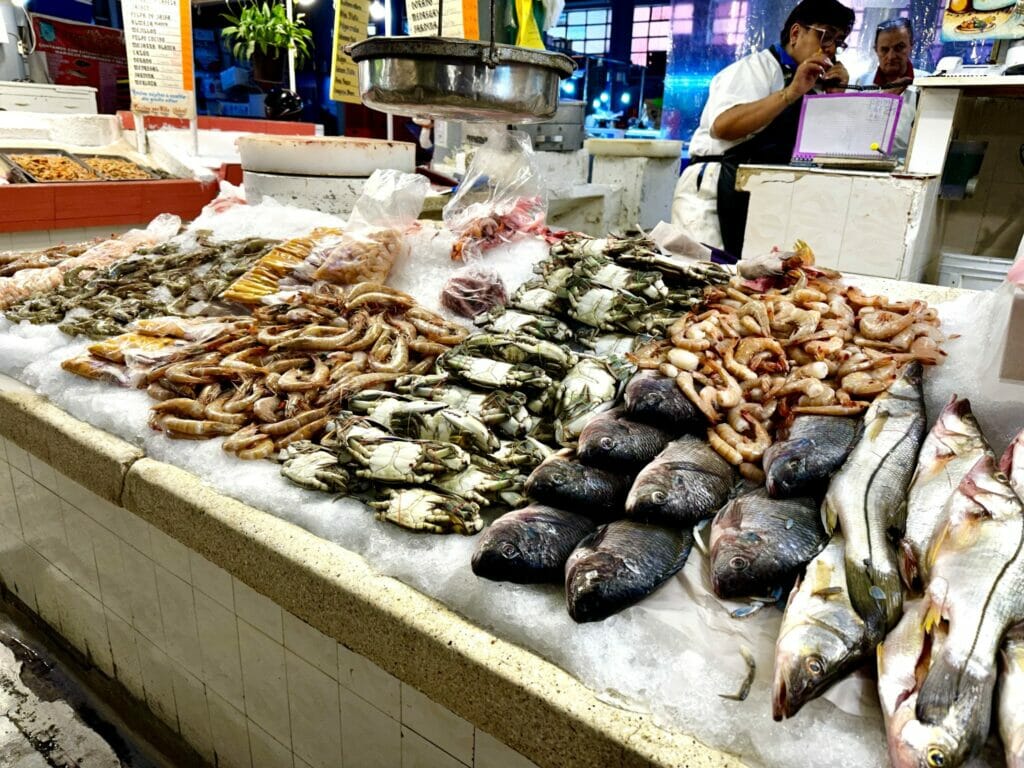
San Miquel Market
- The Palacio de Correos de México: Also known as the “Correo Mayor,” is located in the historic center of Mexico City, on the Eje Central near the Palacio de Bellas Artes. It was built in 1907 and is an active post office. It is a magnificent building that is well worth a visit. Its architectural style is highly eclectic, with the building featuring a mix of Art Nouveau, Spanish Renaissance Revival, Spanish Rococo, Elizabethan Gothic, and Venetian Gothic Revival styles. The building also has Moorish, Neoclassical, Baroque, and Art Deco elements.
- Basílica de Santa María de Guadalupe: The Basílica is an important religious site in Mexico City. The first basilica dedicated to the Virgin Mary was not built until 1695. However, nearly 300 years of construction and environmental damage threatened the integrity of the basilica, so a new basilica was built on the same Plaza in the 1970s. The complex features many attractions, including the basilica, an ancient church, a gift shop, a museum, and a library. Though a young Basilica, it is stunning and worth a visit.
- Teotihuacan pyramids: One of many UNESCO World Heritage sites in the Mexico City region, Teotihuacá contains some of the largest pre-Columbian pyramids in all of Mexico. It is about an hour’s drive from Mexico City. The site features many popular attractions, including the Palace of the Plumed Butterfly, which showcases the Pyramid of the Sun and the Moon, situated at the heart of the site. It was an intriguing step back in time. A guided tour is ideal; check with your hotel for reputable vendors.
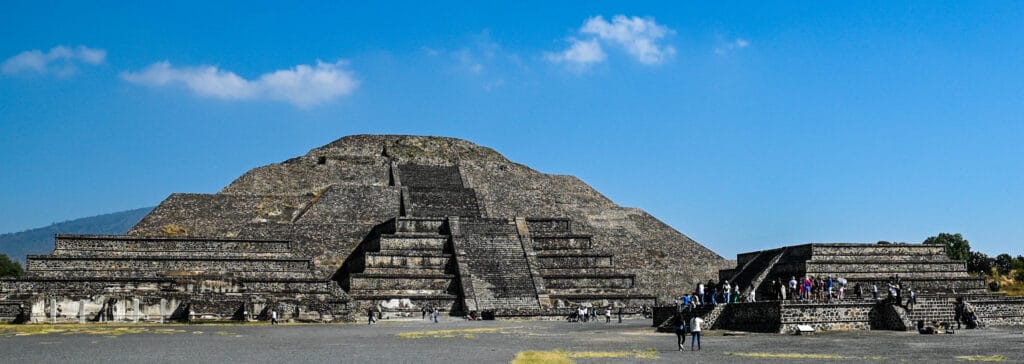
Teotihuacan pyramids
- Roma Norte district: This is the happening place to be. The hipster Roma Norte neighborhood is well-known as a restaurant hotspot in the heart of Mexico City. It’s filled with charming cafes, lovely outdoor seating areas, and top-quality restaurants that have garnered both critical and commercial acclaim. The area has beautiful homes, quaint parks, and tree-lined streets. Our favorite restaurant was here, Blanco Colima.
- Stroll along the elegant Paseo de la Reforma. The Paseo de la Reforma is a wide avenue running through the heart of Mexico City. It was created during the reign of Emperor Maximilian and modeled after the great boulevards of Europe. The planned Grand Avenue was to link the National Palace with the Imperial residence. Make sure to stop to gaze upon the Angel of Independence.
- Take in a Lucho Loco Wrestling Match: Translated as “Free Fighting,” Lucha Libre is similar to American WWF Wrestling but usually includes more high-flying jumps & athletic moves. Most contestants wear colorful masks to hide their identities. A visit to the Lucha Libre in Mexico City is essential to your visit to the capital and is great fun, if not a wild cultural experience. The locals often go in a group and have a few drinks and street food beforehand. Many organized tours will model that same experience. It was indeed a night to remember.
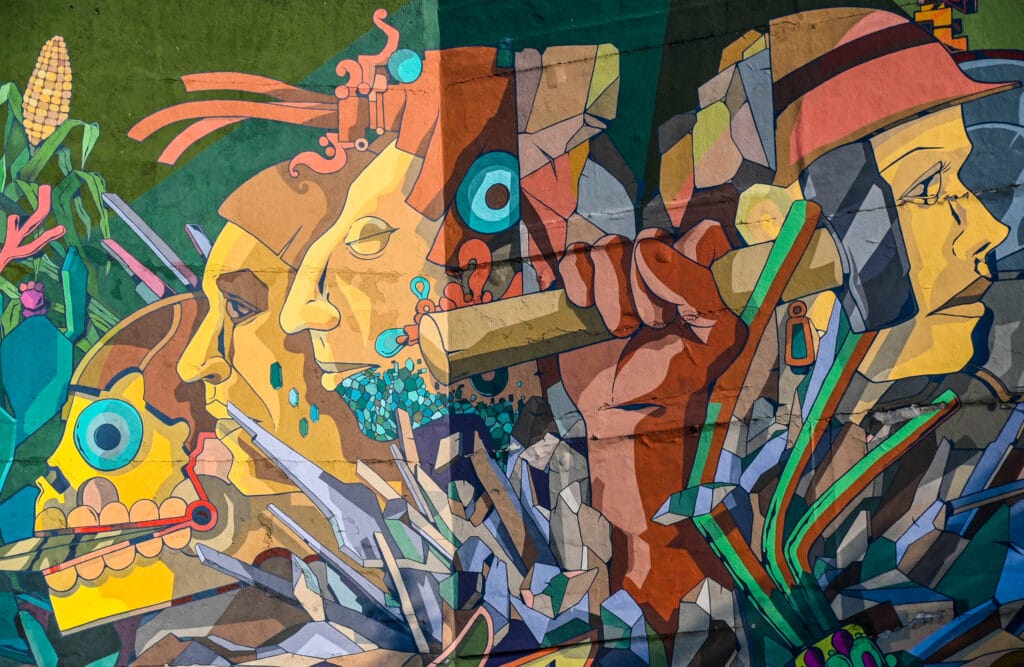
Planning a trip soon? Check out Our Top Recommended Travel Gear and Accessories
Dining in Mexico City
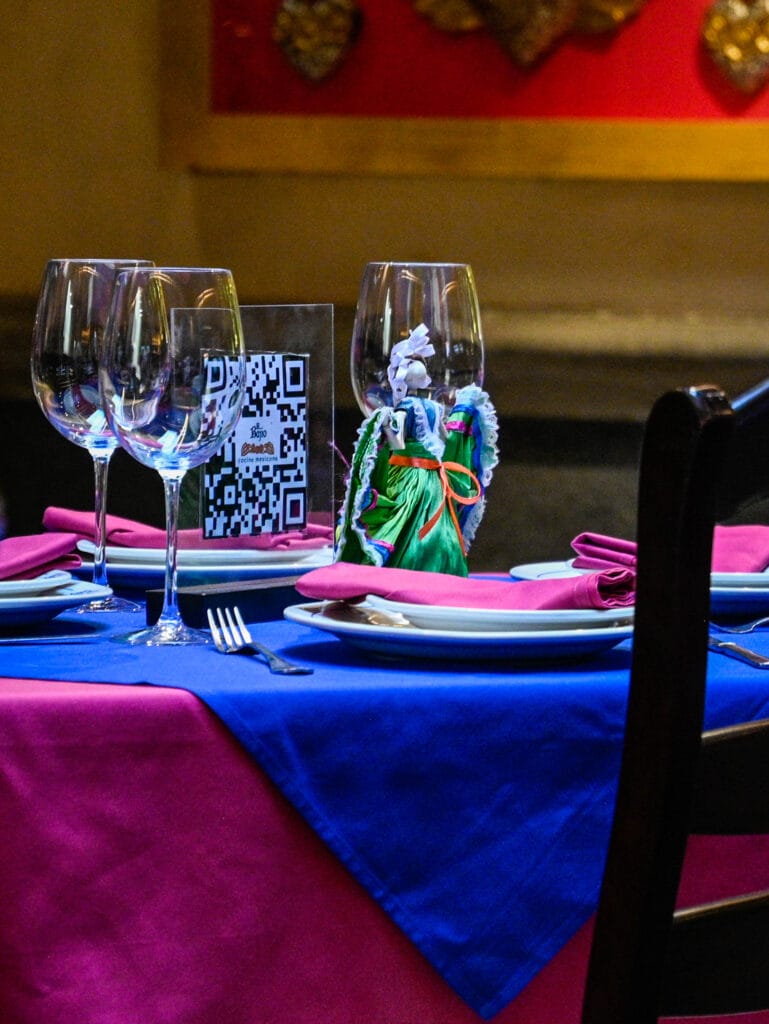
One of our biggest surprises (there were many) during our visit to Mexico City was the quality of our dining experiences. When traveling abroad, we often seek diverse and authentic dining experiences, avoiding popular tourist spots and opting for local cuisine instead. In seeking recommendations, we ask locals where they feel is the most genuinely local cuisine.
Mexicans love to eat, and although the city has many restaurants, the sidewalks were full of food carts, pop-up stands, and even vendors selling food that was balancing on their heads. We even came across a few surprising sights, like people selling food out of baby carriages. In the Historic District, it was common to see portable food stands lining one side of the sidewalk, stretching the length of the street, while the opposite side, against the buildings, was filled with an array of restaurants to choose from. It created a vibrant and unforgettable culinary scene. Adding to the atmosphere, both restaurants and street vendors tended to stay open very late, a trend we noticed throughout many of the cities we visited.
We can say that there was not one bad meal during our entire stay. Of course, street food is tremendous here and always popular. We tried the street tacos and a few other excellent dishes. We also visited several upscale restaurants and were impressed by the quality, presentation, exceptional cuisine, and ambiance. There were meals; if you didn’t know better, we were at some fancy, top-of-their-game L.A. restaurant, except the prices were way lower! Some are comparable to Michelin stars and better than some we ate recently in the U.S.
This is not the Mexican food you know in the U.S.
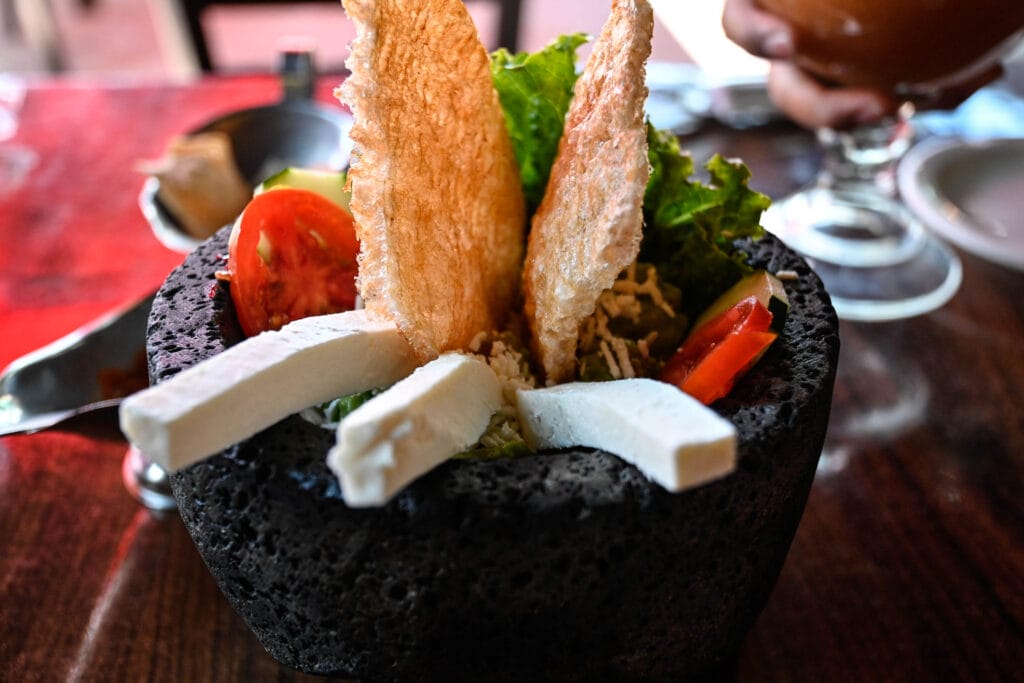
You will be shocked if you expect the food to be anything like the typical Mexican restaurants in the U.S. There was nothing similar; even the chips were markedly different. It also seems that instead of chips, they prefer chicharrones with guacamole. The salsa we were served many times never had one tomato chunk. We are not complaining; the Mexican food in Mexico will make it hard to ever eat Mexican again in the U.S. The food alone would bring us back. It offers exceptional service, exquisite decor, gorgeous and intricate presentation, and top-quality cuisine for a price that is mind-blowing.
Trusting in the food you are unfamiliar with takes a bit of adventurous spirit, but we can say we never had any regrets. We never had any G.I. illnesses or symptoms during our trip. We strongly recommend avoiding the water; our hotel even provides bottled water to brush your teeth. The quality and uniqueness of the cuisine in Mexico City alone would bring us back for another visit.
Our Favorite Restaurants
Since we did not have a favorite restaurant, we will detail the ones where we had our best meals individually. The slideshow below will feature a selection of our dishes from our visit.
For the first four restaurants, we strongly recommend having a reservation.
1. Limonsneros is an upscale and elegant restaurant in the Historic District. They deliver gastronomic excellence, combining traditional Mexican cuisine with a contemporary touch using high-quality ingredients. It was an exceptional experience and the perfect meal to end the trip to Mexico City. We ordered a 9-course gourmet tasting menu with wine paired with every course, which was poured by their excellent Sommelier for only $85 a person.
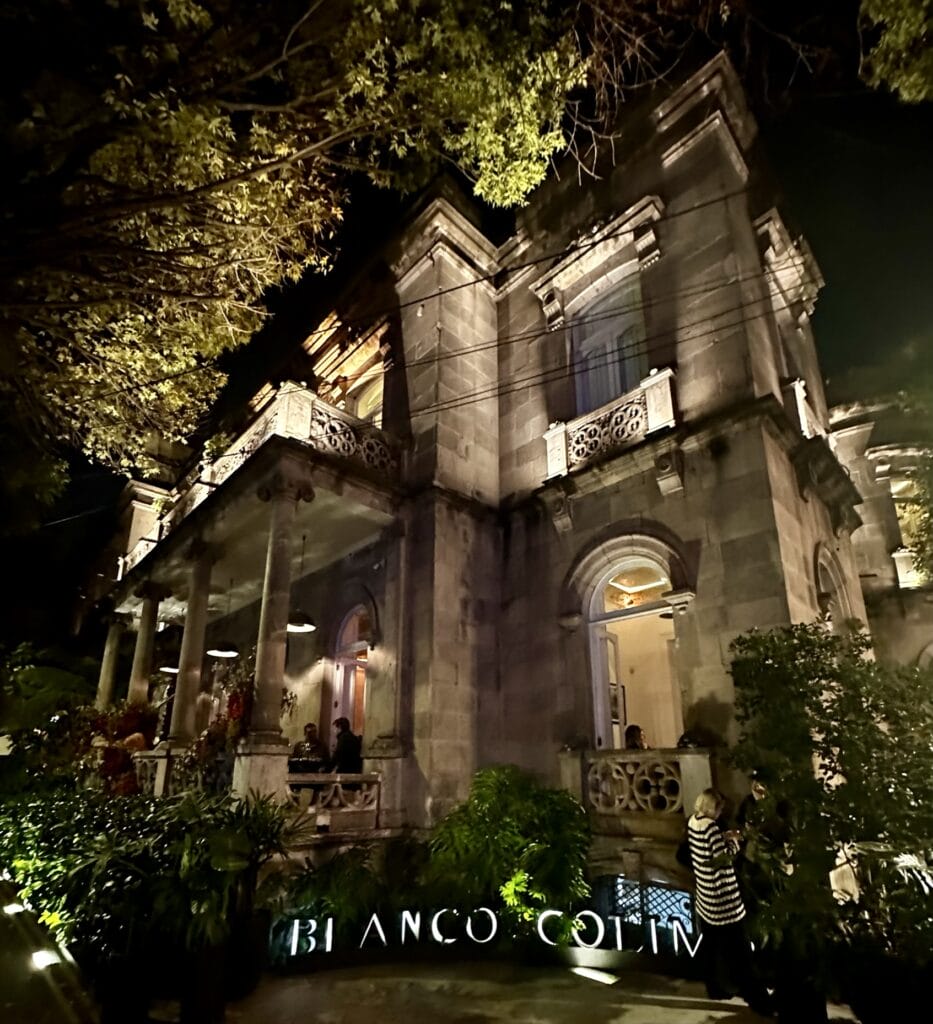
2. Blanco Colima is in the gorgeous and elegant Roma neighborhood along the gastronomic corridor of Colma Street. The restaurant is in a lovely Porfinian-style house that takes your breath away when you enter. The excellent cuisine is an avant-garde Mexa-Spanish with a unique flair and a magnificent cocktail selection.
3. Azul Historico, within the Historic District, is located inside the Hotel Downtown, a member of the Small Luxury Hotels of the World. The restaurant is in a charming courtyard predominantly lit by candles hanging from the trees under a movable roof. All our food was delicious and served on beautiful tableware, which added to the experience.
To learn how to make the most of your dining experiences abroad
click here.
4. The Terraza Restaurant is located on the 5th floor of the Gran Hotel Cuidad de Mexico in the Historic District with views of Zocalo Square. It has one of the best restaurants and bars in Mexico City. The breakfast buffet is expansive and excellent. The regular menu has standard items like guacamole (we loved it!), street tacos, and haute cuisine. We had several meals here and enjoyed the food and the attentive staff.
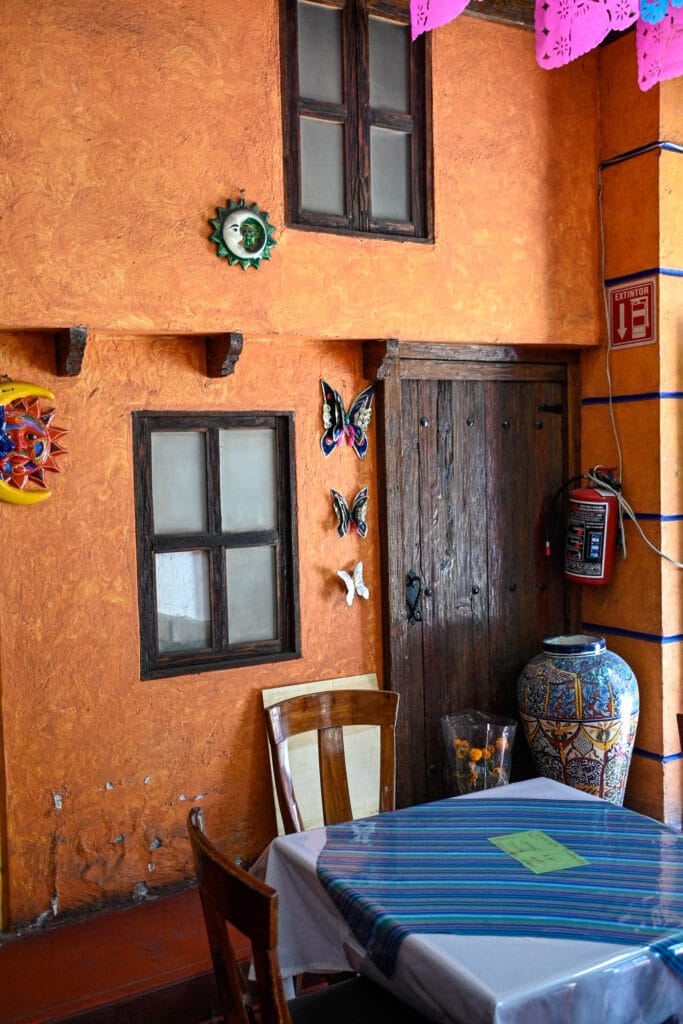
5. Oaxaca en Mexico Restaurant in the Historical District offers traditional Oaxaca cuisine in a brightly colored and cozy atmosphere. To ensure the unique flavors of Oaxaca, the dishes are crafted from scratch. They are known for their excellent Mole Sauces.
6. La Mascota Cantina was one of our stops during our food tour and is in the Historic District. It is a simple, boisterous place where you will mostly find locals and have an authentic Mexican experience. Patrons come for the cocktails because they get free and unlimited food from a daily list of about 8-10 dishes. We were not expecting the quality to be good, but that was not the case; it was nothing fancy, but delicious traditional Mexican fare. The experience here is what makes the visit worth it. Ideally, pay cash as they add a charge for cards.
The photos are of the various dishes we ordered. Regretfully, we don’t have some descriptions as the dishes were part of a tasting menu that was not listed on the menu. Our servers often spoke limited English, so we did not understand what they described. Nonetheless, it was all delicious!
It is all about the Mezcal
In Mexico City, though, it was all about the Mezcal. It did not taste like the Mezcal we have tasted in the States. We did two Mezcal tastings, had some at the end of a meal, and ordered a couple of Mezcal cocktails. I have to say, we have become fans! If you aren’t a fan of experiences outside of Mexico, give it another try here in Mexico City.
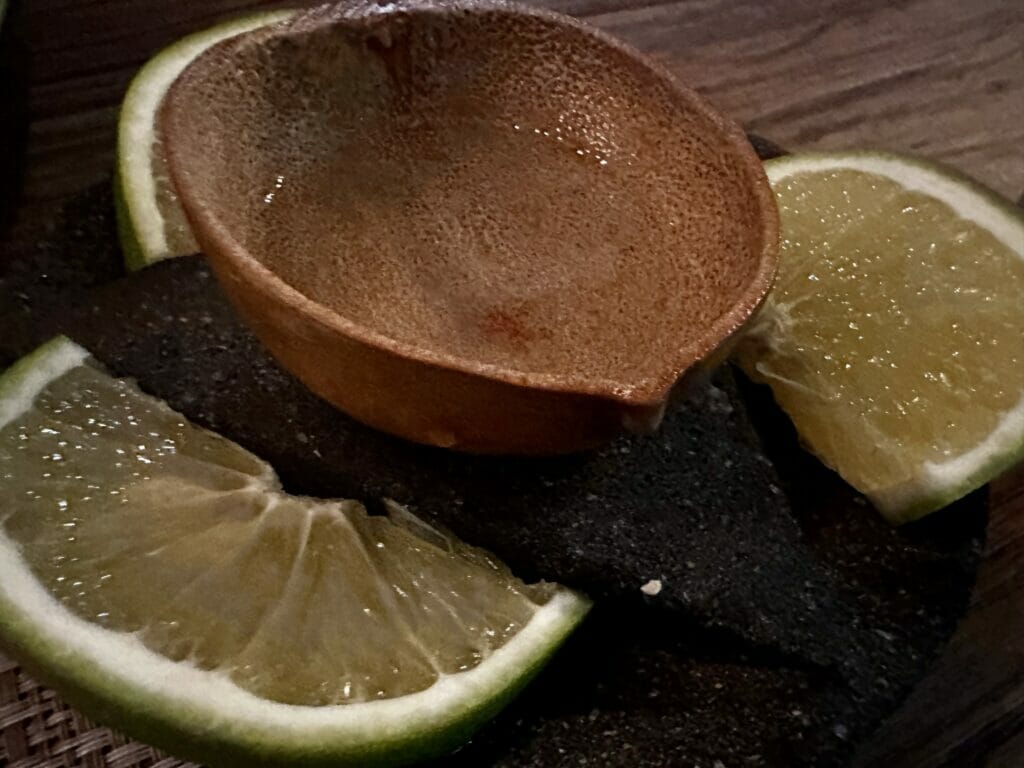
We expected more margaritas, but were wrong there, too. Now, we are not saying there were no margaritas, but they seem less popular than most other cocktails. People here love their mixed drinks, and we saw some fantastic concoctions on the menu.
Beer is also popular, and they seem to have some lovely local microbrews, even of the dark variety. Wine was less common, but during our last dinner in Mexico City, we had wine with every one of our nine courses. Some of the wines we tasted from Mexico were very good.
Where to stay
Slide show of the Gran Hotel Ciudad de Mexico
During our stay in Mexico City, we stayed at the Gran Hotel Ciudad de México. It is one of the most beautiful and stunning hotels we have ever visited.
The origins of this historic building trace back to the 1500s, when it served as the residence of the Royal Accountant. Centuries later, in 1895, it was purchased by a Frenchman with an ambitious vision to build Mexico’s first shopping center. Its construction took place during the height of the Porfiriato, the era of modernization under General Porfirio Díaz.
Today, the building is most renowned for its centerpiece: a breathtaking Tiffany-style stained glass ceiling, created in 1908 by French artist Jacques Gruber. As one of the four largest of its kind in the world, it is especially stunning when illuminated by natural daylight, casting vibrant hues throughout the space. Eventually, the store closed, and in 1968, it reopened as the Gran Hotel Ciudad de Mexico.
Mexico City is home to numerous stunning hotels. It is a significant business city in the world market, and many businesses operate here, so they will demand lovely places to stay.
That ceiling!
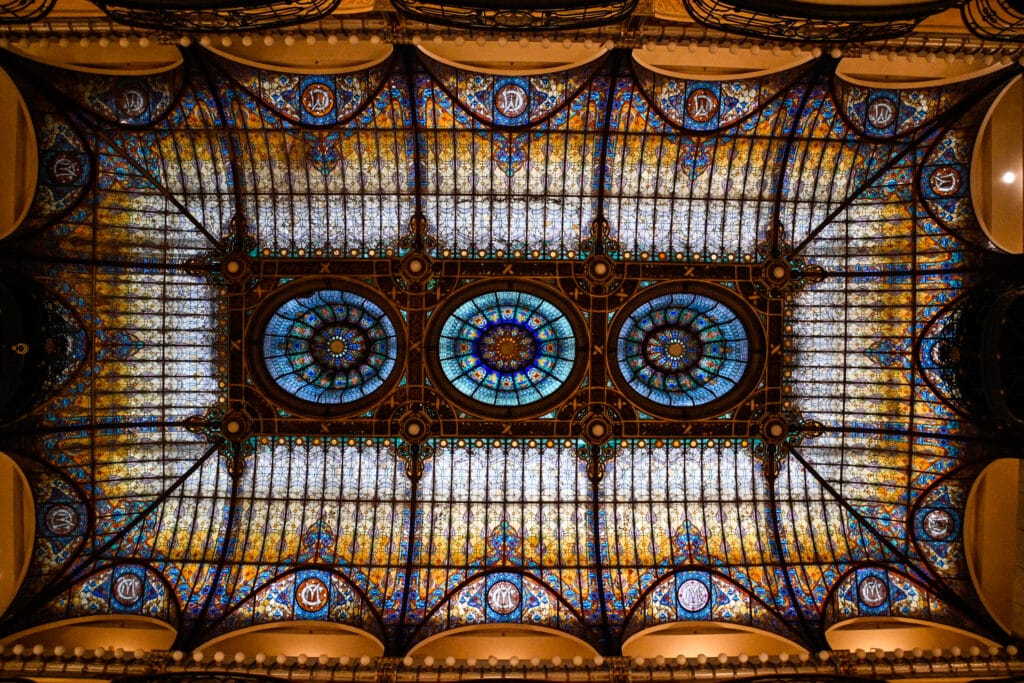
The ceiling might be the “pièce de résistance,” but the hotel has many other glorious aspects. Take in the beauty of the majestic Louis XV chandelier at the hotel’s entrance. The hotel features two Otis panoramic cage elevators, which are over 100 years old and remain operational, offering a fun ride experience. Sit in the lobby on the red velvet furniture while you take in the glorious setting. The hotel has grand staircases and lovely decor throughout.
The Terraza is a stunning open-air restaurant and bar perched on the hotel’s rooftop, offering spectacular views of Zócalo Square and its surrounding historic buildings. Each time we visited, the staff was warm, attentive, and genuinely welcoming. Complementing the experience, the luxury hotel features 60 modern, beautifully decorated rooms and delivers consistently high-quality service with thoughtful attention to detail. What made it even more fun was that we paid nothing for it. We used our Chase reward points for a two-room suite with views of Zocalo Square. However, our points converted to about $250 a night, a remarkably high price for such elegance. Our stay was a truly unique experience, and we highly recommend it. It ranks as one of our favorite hotels ever.
Whether interested in this hotel or any others in Mexico City, it is important to price out accommodations on various sites. Expedia is a US-based company, whereas Booking.com is Europe-based. Not all properties appear on both, so it is ideal to check both out. Our personal first choice is Booking.com. If the establishment has a website, check the price there as well. Click the link below to check out hotels and vacation homes in the area. It may be just the motivation you need to start planning that next grand adventure.
Tidbits all visitors should know
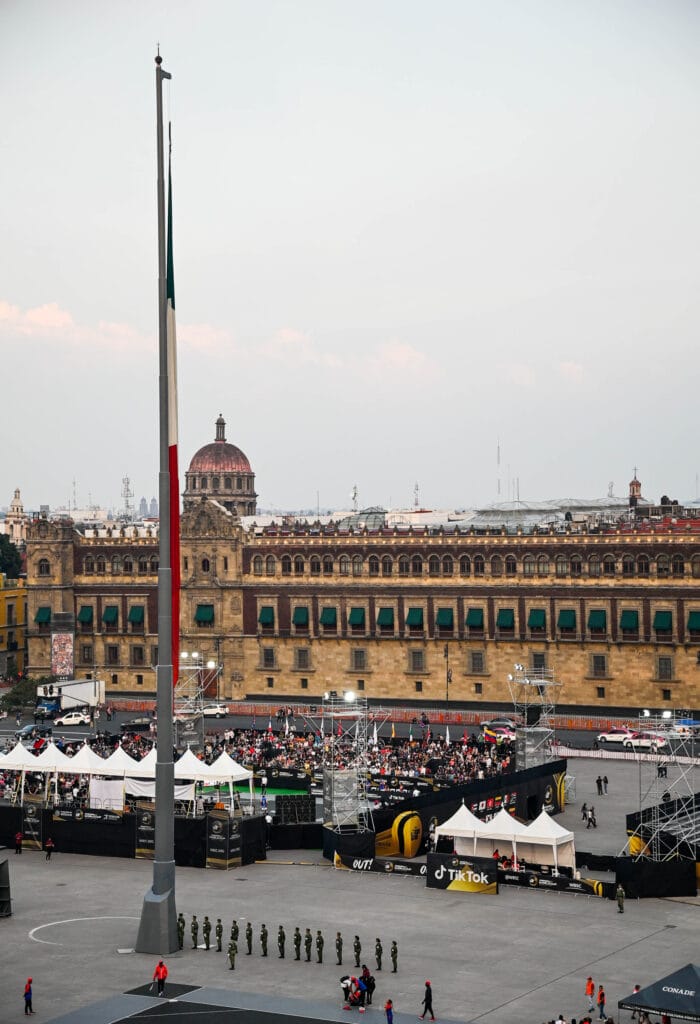
We were surprised by how many locals did not speak much or, at times, did not speak English. Even in the upscale restaurants, we had servers who spoke minimal English. Most menus were available after scanning a barcode, and most restaurants had English as an option when on the phone.
Apple Pay was the most common method we used for making payments. We had no concerns about using our card. We arrived with approximately $250 worth of pesos and spent around $150 of it.
Public transportation, we heard, was not the easiest and did not go to many areas of the city. We used Uber to get around. Although the wait was long at times, we couldn’t complain, as the fares were extremely affordable. It always felt safe. Drivers, as a whole, seemed pretty calm. The streets in Mexico City are full of enormous speed bumps, so no one goes fast. There are also often posts between the sidewalks and where the cars drive, a brilliant idea to keep pedestrians safe.
The churches in Mexico City are everywhere; this is a Catholic hub.
Our favorite moments and highlights

It’s hard to choose a favorite, because we truly loved everything about Mexico City. If we had to pick a standout, the food would certainly be at the top of the list. This cosmopolitan city surprised us with how walkable, clean, and safe it felt throughout our stay. Our hotel, in fact, was one of the most beautiful places we’ve ever had the pleasure of staying.
The Teotihuacan pyramids and Templo Mayor offered a fascinating glimpse into ancient civilizations, while the city’s parks were lush and inviting. Everywhere we turned, the architecture was eye-catching and rich with history. Most memorable of all were the people welcoming, engaging, and incredibly kind, they added heart to every experience. Then there is Mezcal; how can that not be a highlight? Finally, the fact that a trip to Mexico City doesn’t break the bank is a significant plus.
Sounds like a perfect trip? It was despite some mishaps
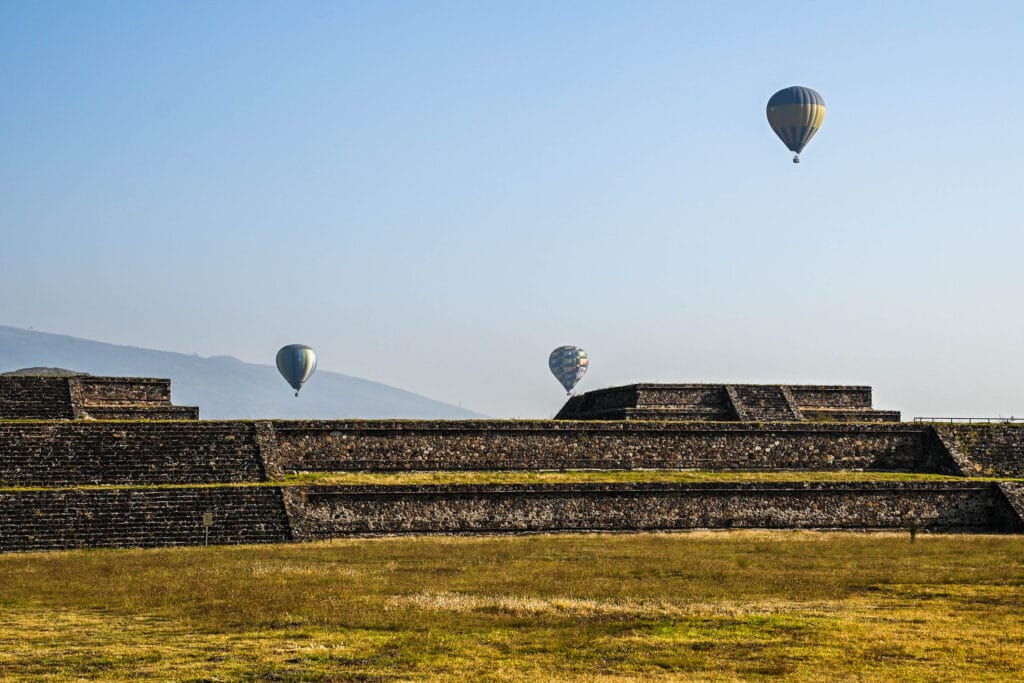
Joelle had a nasty fall on Day 2 of our visit to Mexico City at the Teotihuacan Pyramids. Shortly after we arrived, she fell on the last step of the only structure you can climb and briefly lost consciousness. Her fall resulted in a concussion, broken hand & ankle, severe leg contusions, and lots of bruising and abrasions. The fractures were not caught until she got home. What saved the day was Joelle’s habit of always being prepared. She has a substantial first aid kit in her backpack. We could clean and dress all her wounds; there were a lot! With her wounds dressed, we continued with our tour. It pays to be prepared. Check out Joelle’s post on what medical supplies to pack when traveling here.
To add more craziness to the situation, Ryan tested positive for COVID-19 (his first time) upon our return and was quite sick for an entire week. Joelle went on to see doctors at home, who diagnosed the two fractures. In the end, we still call it the perfect trip. Mexico City shined despite these mishaps. If that doesn’t speak to this city’s greatness, I don’t know what would.
Americans are moving to Mexico in droves
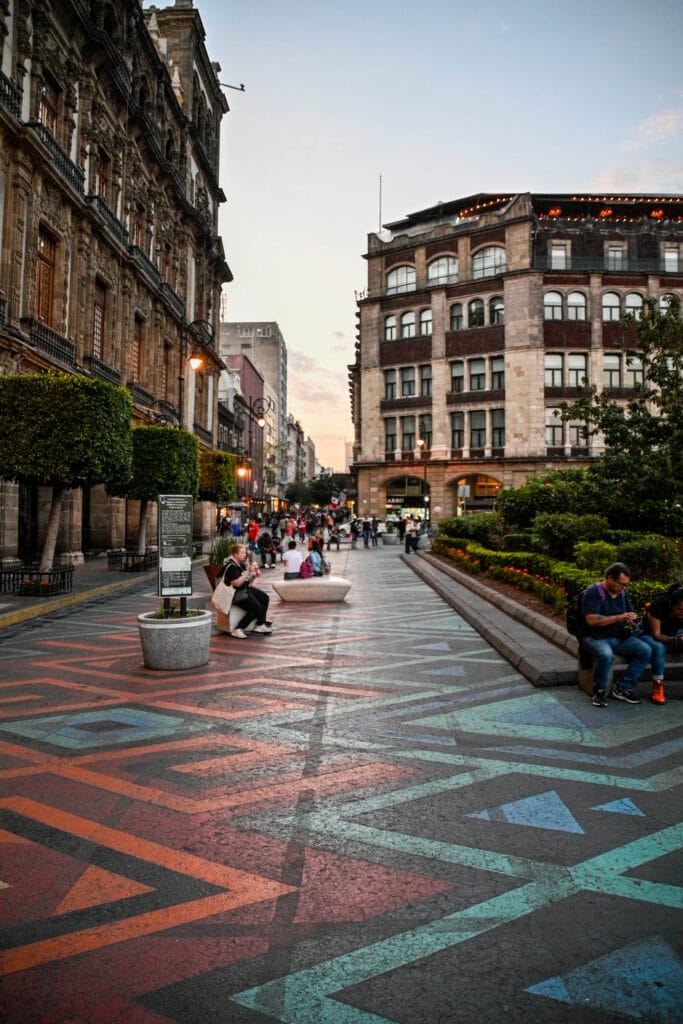
Americans are moving here in large numbers. Mexico beats out the United Kingdom, Canada, Australia, and Spain for relocation destinations, maintaining its spot as the top ex-pat hub for Americans. In 2021, approximately 16,000 Americans relocated to Mexico, and this number has continued to rise year over year. It is estimated that 1 million Americans live in Mexico. One of the top reasons many Americans are relocating to Mexico is the lower cost of living. Housing, healthcare, food, and transportation are just a few of the things that are significantly cheaper in Mexico than in the United States. We can attest to that; your dollar goes a long way there.
Mexico is ideal for those who want to live in a cosmopolitan city with the best dining, nightlife, museums, and culture at their fingertips, all at affordable prices.
Conclusion

This will be a short and sweet conclusion. Visit Mexico City; it is worth the trip. It is nothing less than spectacular. The cuisine is some of the best in the world. It is a beautiful, clean, and safe city. It is a haven for architecture enthusiasts. The city is full of history and home to several wonderful museums, UNESCO sites, and art galleries. There’s a nightlife scene to suit everyone. It is friendly to your travel budget. Finally, it will change your opinion of Mexico.
© 2025 Wanderers Compass All Rights Reserved
For The Official Mexico City Visitor Guide, click here.
Photo Gallery of Mexico City


























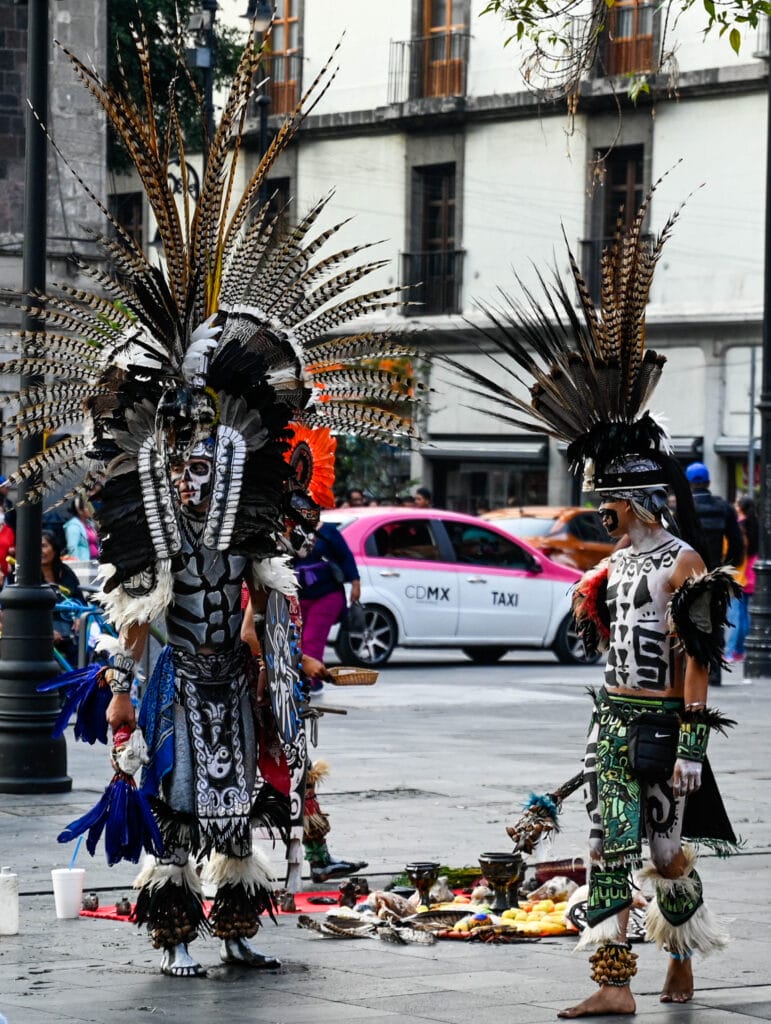






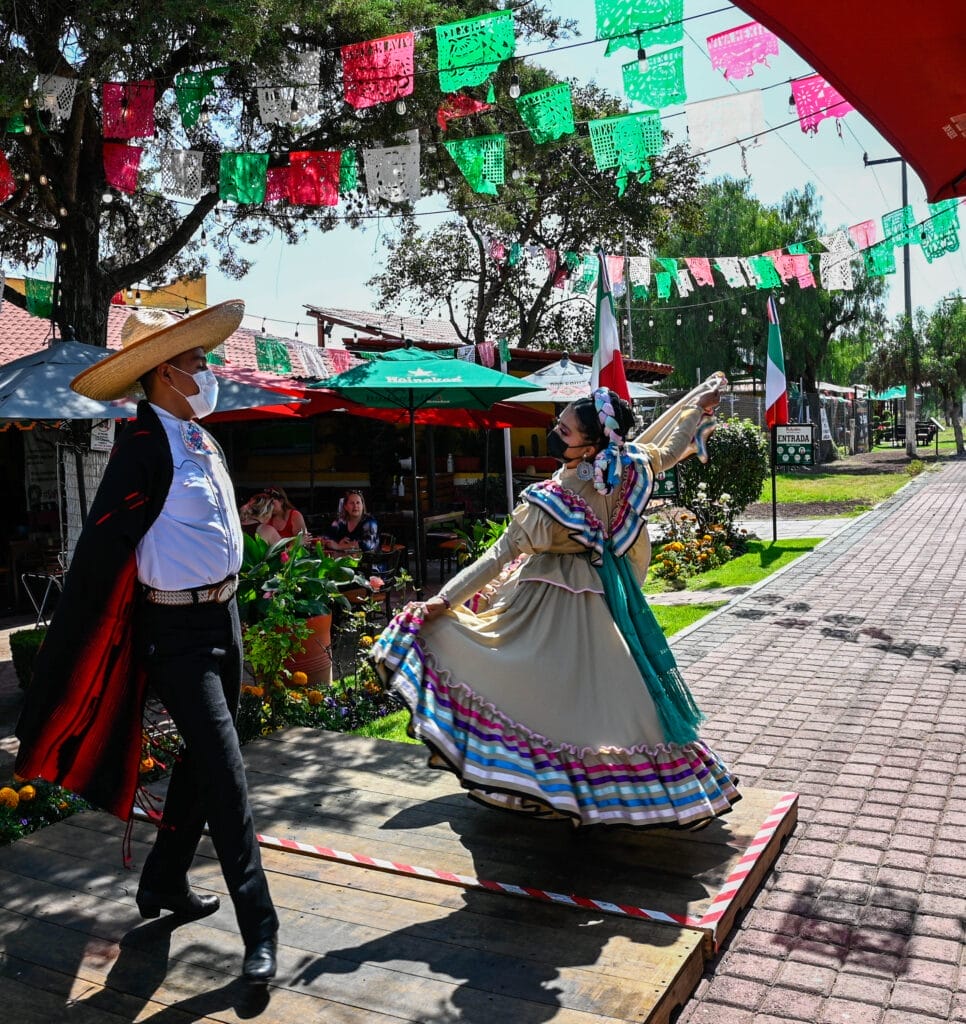


















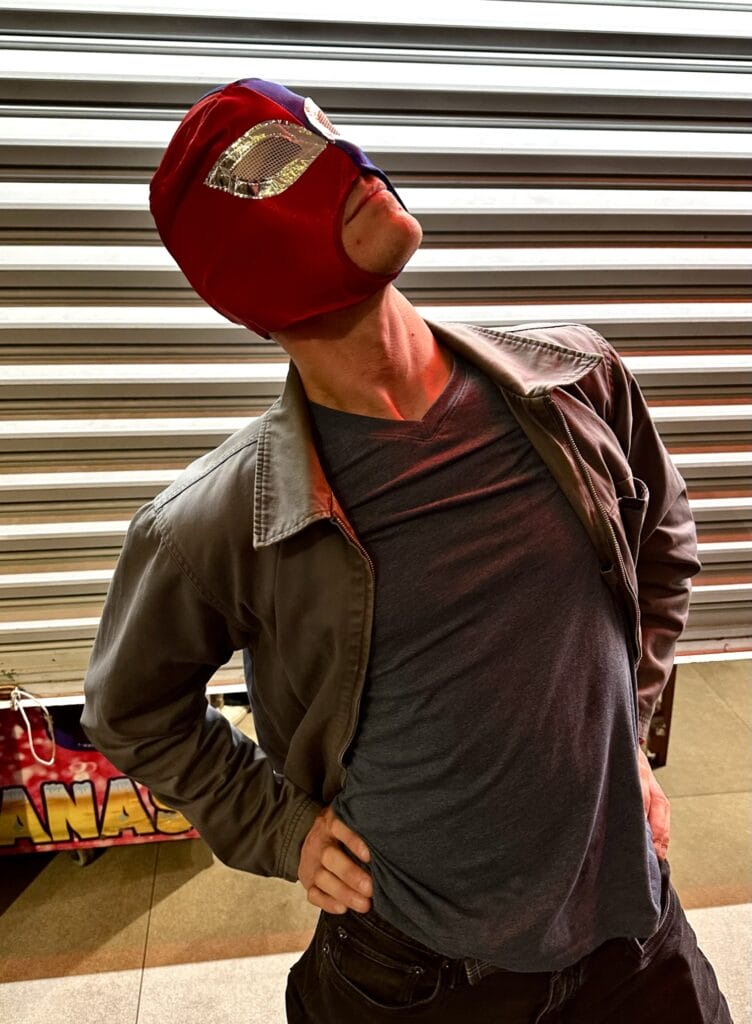

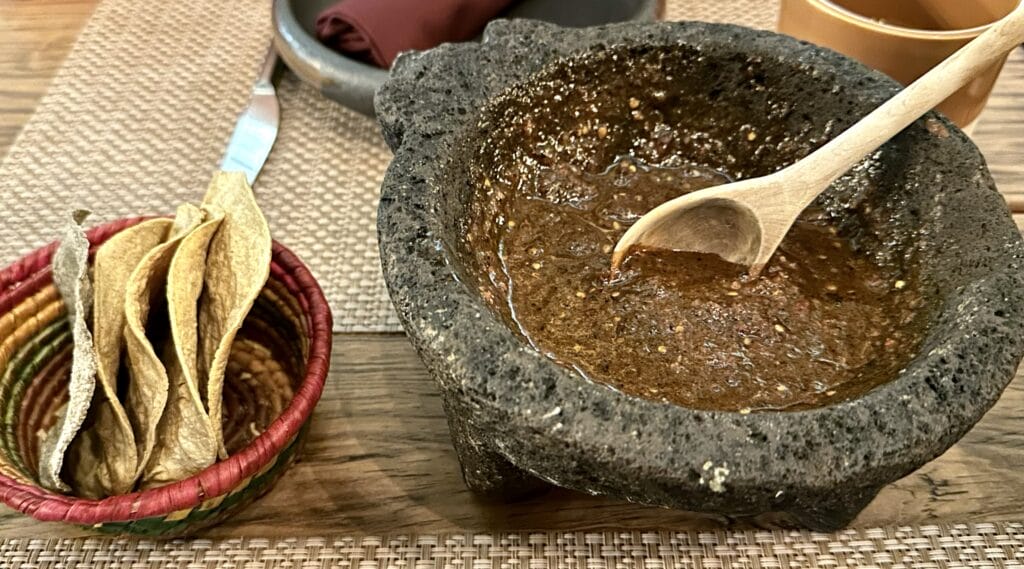


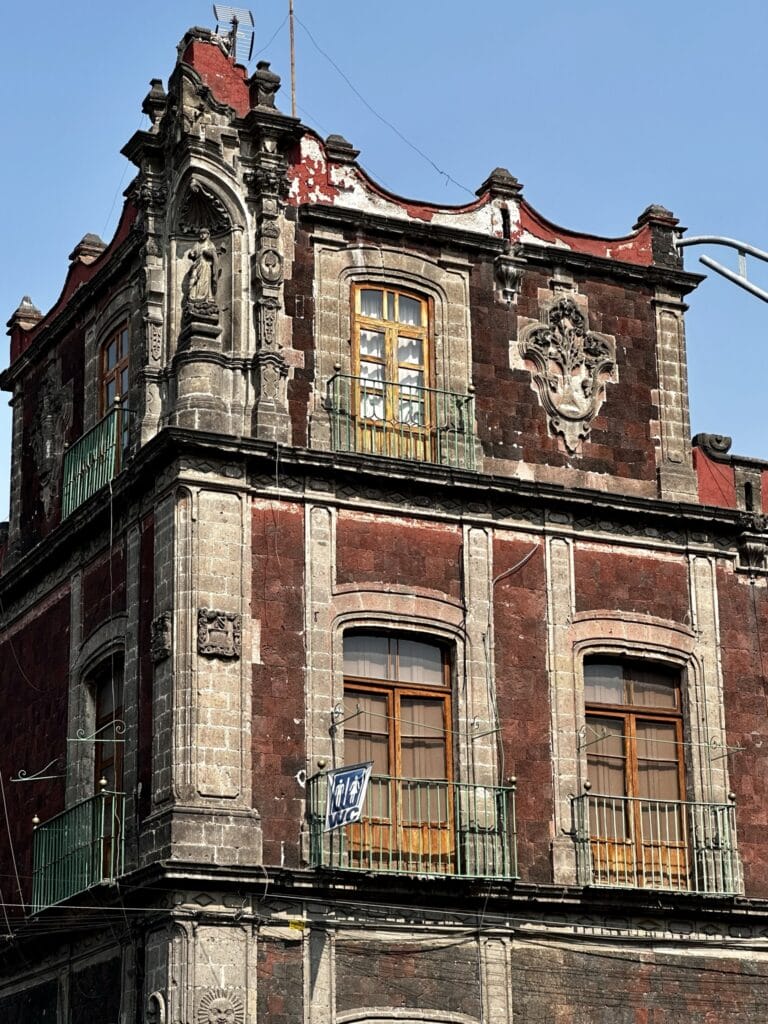
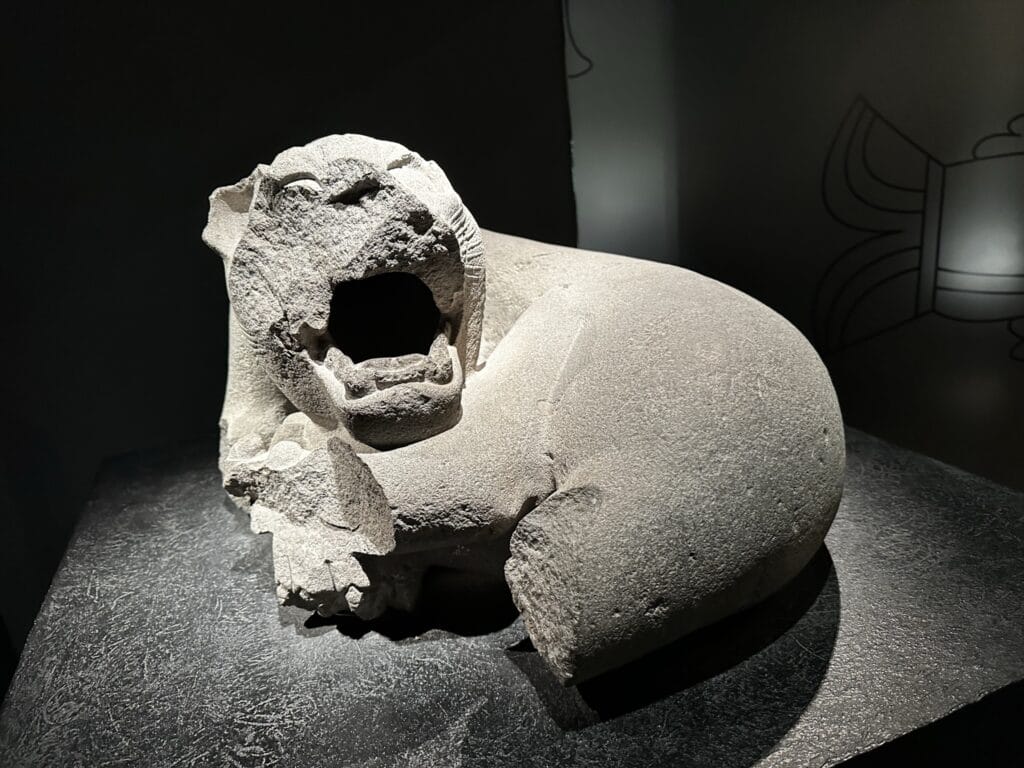


















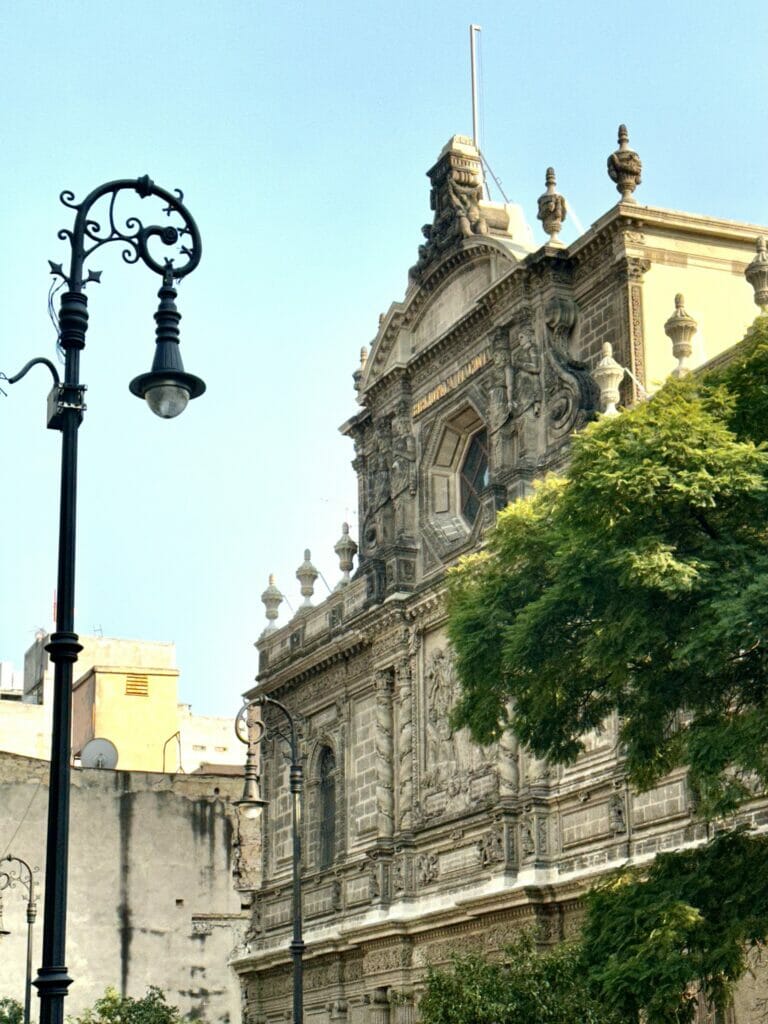

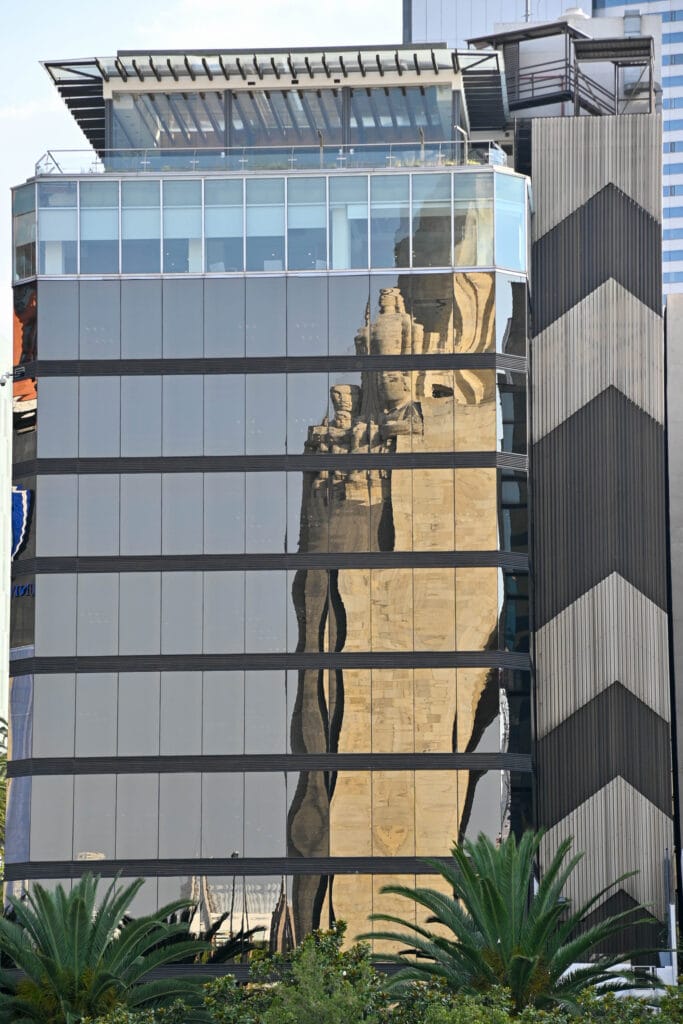




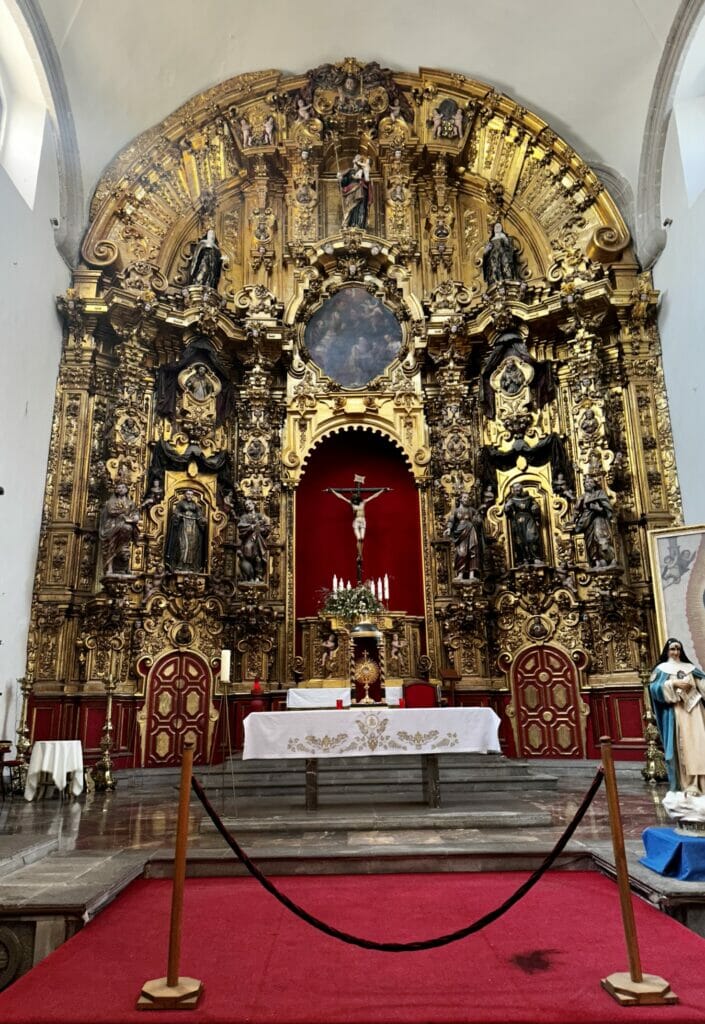






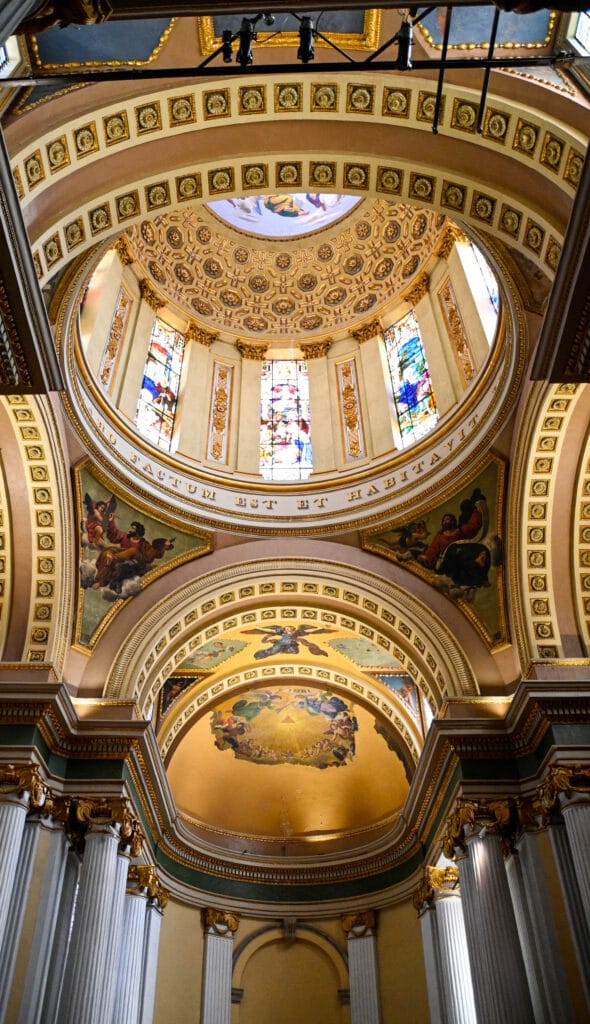







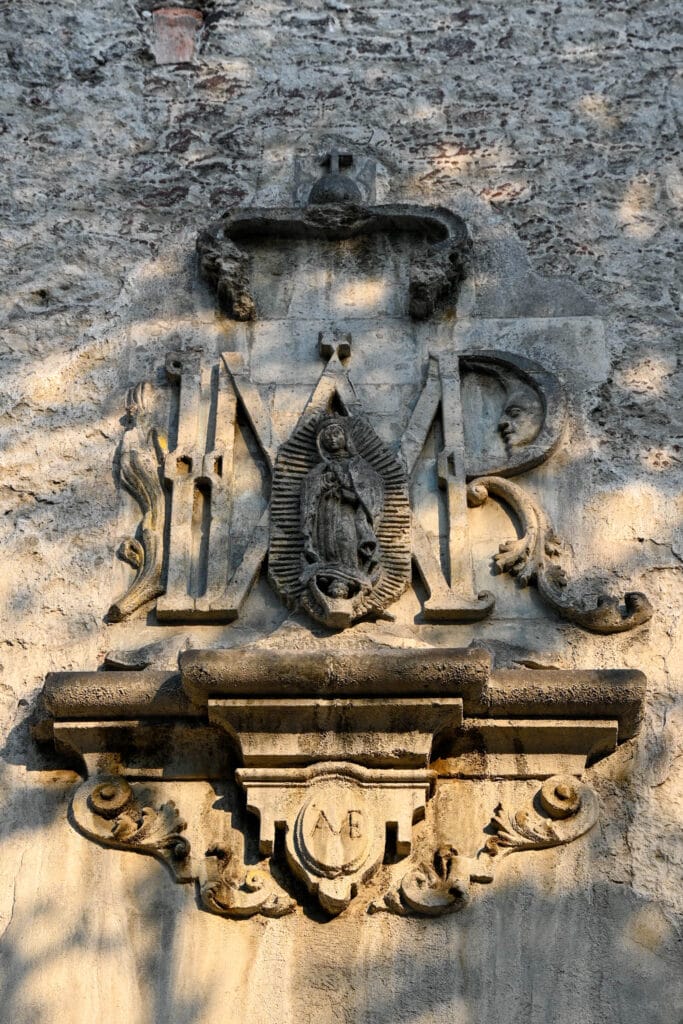



Want to learn about Wanderers Compass?
Checkout our most recent blog posts
9 Things to Know about French Culture Before You Visit
Prepare for your trip with these 9 things to know about French culture. Show…
December 26, 2025Dungeness Crab with Zesty Ginger-Garlic Butter: A Pacific Northwest Delicacy
In the heart of the Pacific Northwest, there’s nothing quite like fresh Dungeness crab…
December 26, 2025Recipes from Our Travels to Savor at Home
Discover unique recipes from our travels that showcase local traditions. Taste the world through…
December 13, 2025Essential Medications for Long Flights: What to Bring
Discover essential medications for long flights to ensure a comfortable journey and handle any…
November 25, 2025Winter Gear Checklist: Must-Have Items for Skiing
Avoid common skiing mistakes with our winter gear checklist. Get prepared and make your…
November 24, 2025Travel Insurance – Learn How to Protect Your Trip
Travel insurance can save you from unforeseen expenses. Discover why it is a must-have…
November 23, 2025Edinburgh Castle: The Crown of Edinburgh
Edinburgh Castle, one of Europe’s oldest fortified castles, stands majestically above the vibrant city…
November 22, 2025Reflecting on Speaking at the UN on Sustainable Tourism
Join the conversation on sustainable tourism as I share my experience at the UN…
November 9, 2025Discover the Best Season to Visit Iceland
Iceland: Summer and Winter Comparative Photo Gallery “THE PROBLEM WITH DRIVING AROUND ICELAND IS…
November 9, 2025Our Top Recommended Travel Products
Travel Insurance
Squaremouth.com
Our favorite travel insurance site!
We strongly advocate for comprehensive travel insurance, not only for minor inconveniences but also for major, unexpected events like medical emergencies. We never leave home without it. Our go-to resource is Squaremouth.com. which offers a user-friendly platform that connects you with top-rated, reputable insurance carriers. Plus, they’ll mediate on your behalf if you run into any issues.
To empower you as a consumer, we recommend you read our blog post on why travel insurance is essential and how to secure the best coverage from leading companies at an affordable price.
MedjetAssist
Medical transport back home from anywhere in the world
Medjet is a leading provider of global air medical transport. Unlike traditional travel insurance, which typically covers medical evacuation to the nearest facility, Medjet goes further by ensuring you’re transported back to the U.S. to the hospital of your choice once you’re stable enough to fly. Medjet offers membership plans that focus on medical transport, while Medjet Horizon provides expanded coverage for broader protection. Individual trip policies start at just $99, and annual policies are available for around $300. Most policies have an age limit of 74.
To learn more about how Medical Evacuation membership with Medjet Assist works, check out our blog post for a more detailed review.
Accommodations and Airfare
Booking.com
Hotels, Home rentals, BNBs, Flights, and other Transportation & Tours
Booking.com connects millions of travelers to unforgettable experiences, a wide range of transportation options, and incredible places to stay—from homes to hotels and beyond. As one of the world’s largest travel marketplaces, it supports well-known brands and entrepreneurs of all sizes. For its convenience, variety, and reliability, it’s our preferred booking platform.
Expedia and VRBO
Hotels, home rentals, BNBs, flights, and other transportation & tours
Expedia is a U.S.-based company with a mission to make global travel accessible to everyone, everywhere. At Wanderers Compass, we embrace independent travel, and platforms like Expedia are essential to making that a reality. Expedia allows you to book every aspect of your trip—from flights and accommodations to rental cars, cruises, and activities—making it a one-stop shop for all your travel needs.
Transportation
Daytrip
Personalized city-to-city private car transfer service
Daytrip provides an affordable private car service for city-to-city transfers worldwide, and we absolutely love their service. It’s a cost-effective alternative to renting a car, providing comfortable, stress-free travel with the bonus of scenic stops along the way. For example, we used Daytrip for travel between Budapest and Vienna, enjoying some fantastic detours to local attractions. With professional drivers and customizable routes, Daytrip ensures a smooth ride while allowing you to explore hidden gems and unique sights along your journey.
To learn more about how Daytrip, check out our blog post for a more detailed review.
Travel Experiences
Viator
The leading marketplace for travel experiences
Viator believes that travel is all about creating unforgettable memories. With over 300,000 experiences to choose from—ranging from simple tours to extreme adventures, plus a wide array of unique, niche activities—it’s never been easier to make lasting memories. We frequently use Viator during our travels and especially appreciate their flexible cancellation policy, which adds peace of mind to every booking.
Communication products for seamless connectivity overseas
GigSky International eSIM Data Plans
Local Prices. No Roaming. Fastest Networks.
GigSky eSIM effortlessly connects travelers around the globe, eliminating the need to swap physical SIM cards or deal with surprise roaming charges. With affordable data plans and instant activation, you can enjoy reliable internet access in over 190 countries, making your travel experience more convenient than ever. Plus, they offer a fantastic deal: a free 100 MB data plan with no credit card required. They are so confident that you will love their service!
Enjoy 10% off all GigSky Plans (except cruise and inflight) with our discount code WCOMPASS10.
To learn more about how GigSky works, check out our blog post for a more detailed review.
Shopping
Wanderers Compass Amazon Storefront
An excellent source for all travel essentials and guides that we have vetted ourselves
Amazon is one of the world’s most comprehensive online shopping platforms, offering lower prices, a wide selection, and fast delivery through teams worldwide.
This page contains affiliate links. When you purchase through these links, we may earn a small commission at no extra cost to you. Thank you for your ongoing support!
